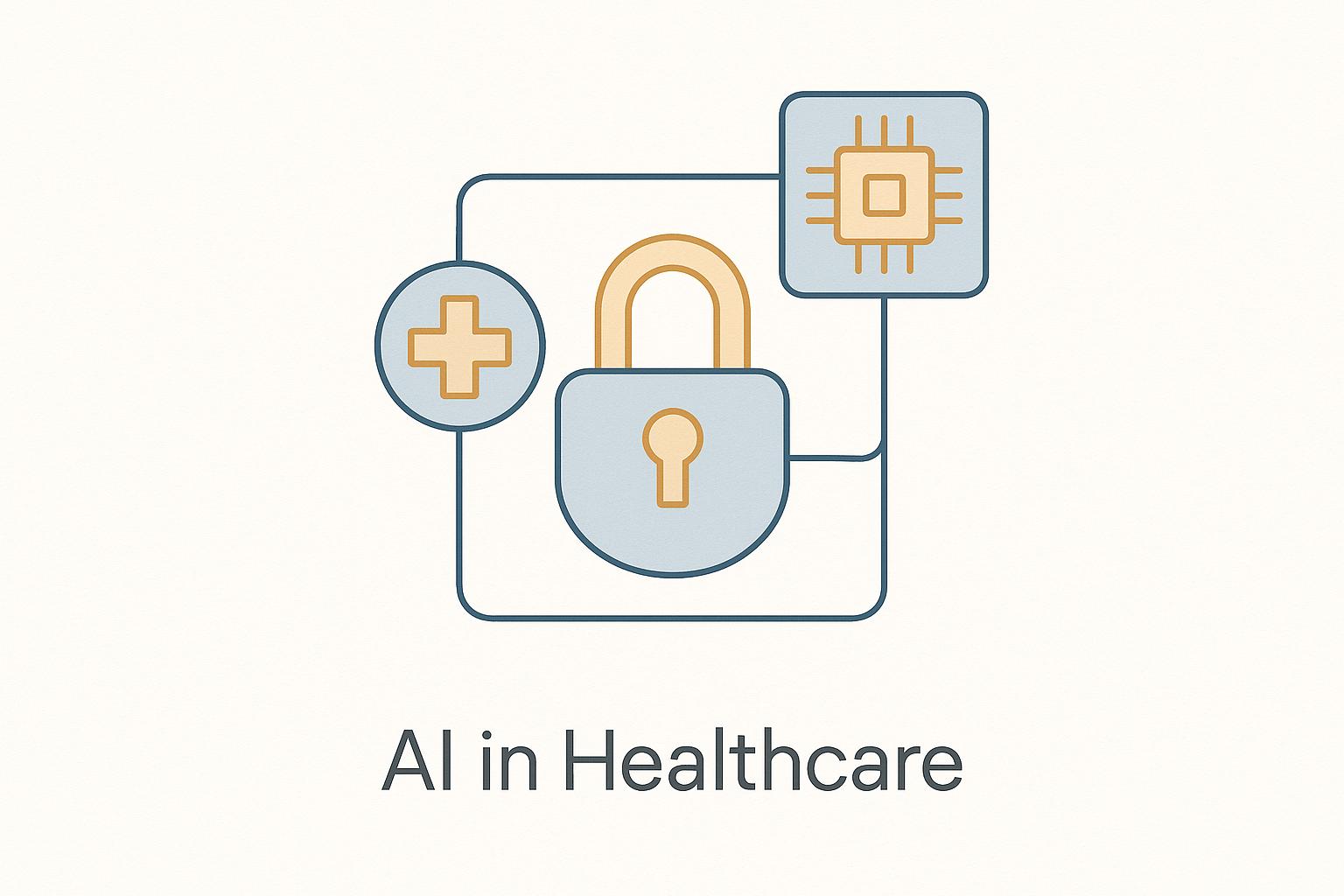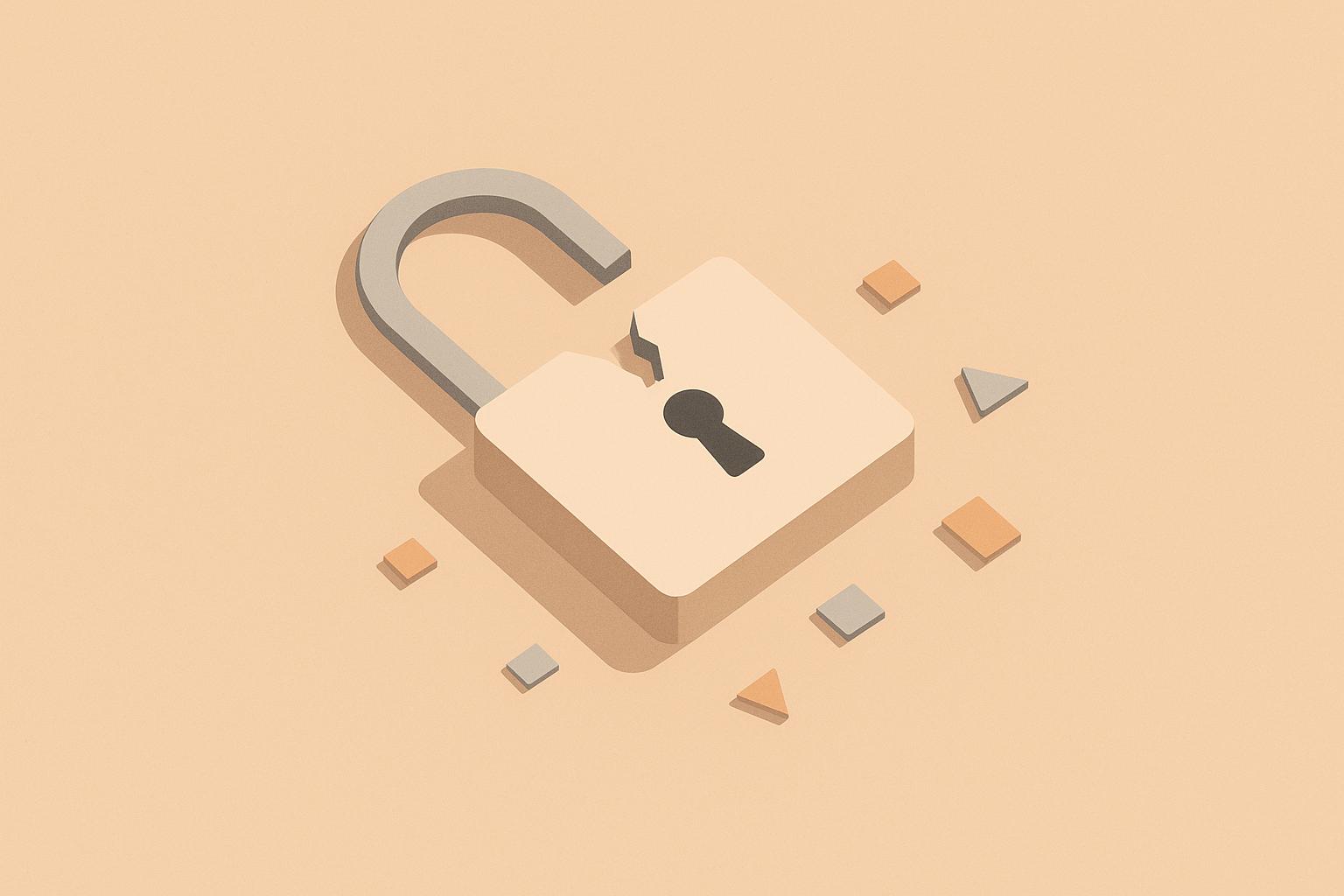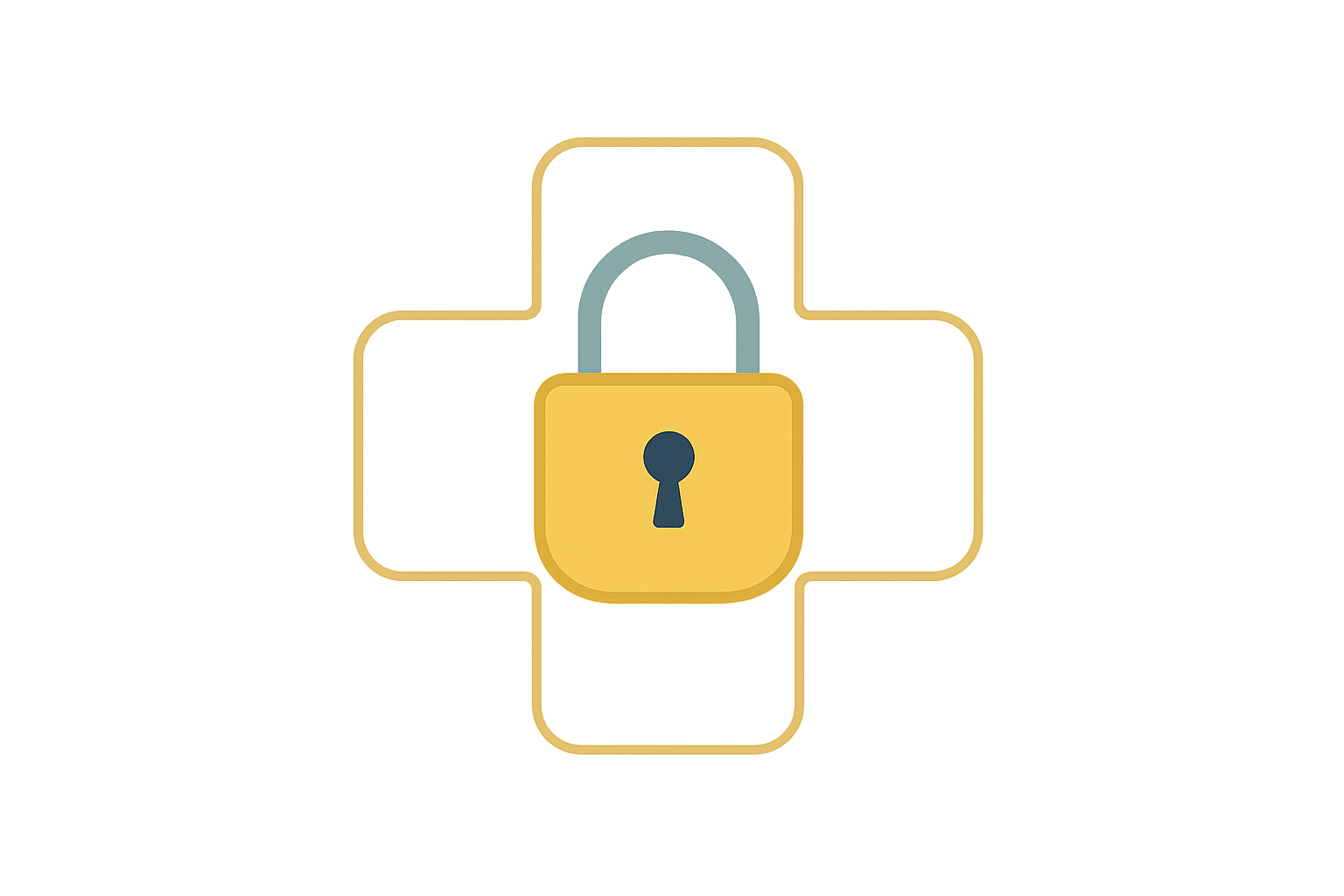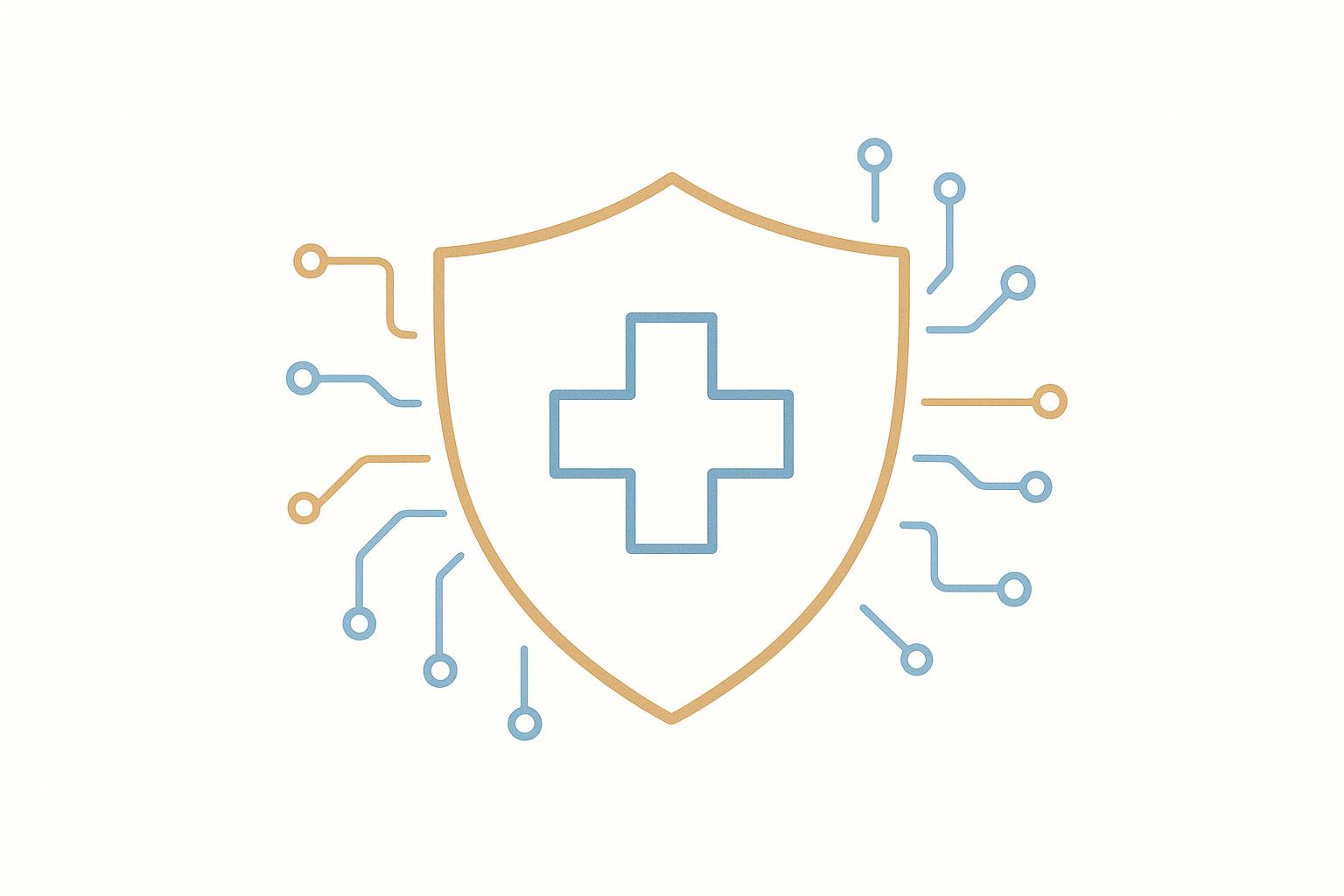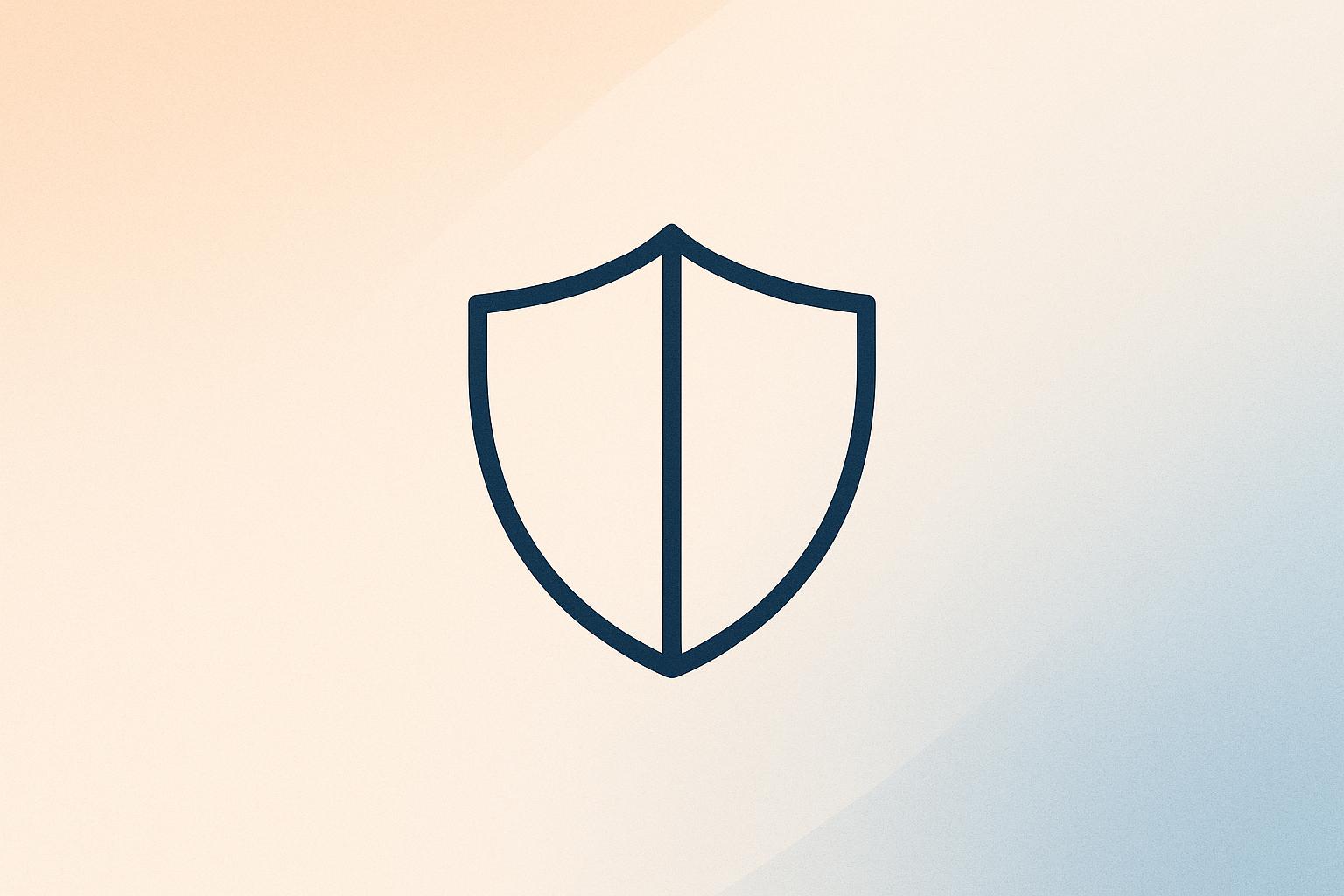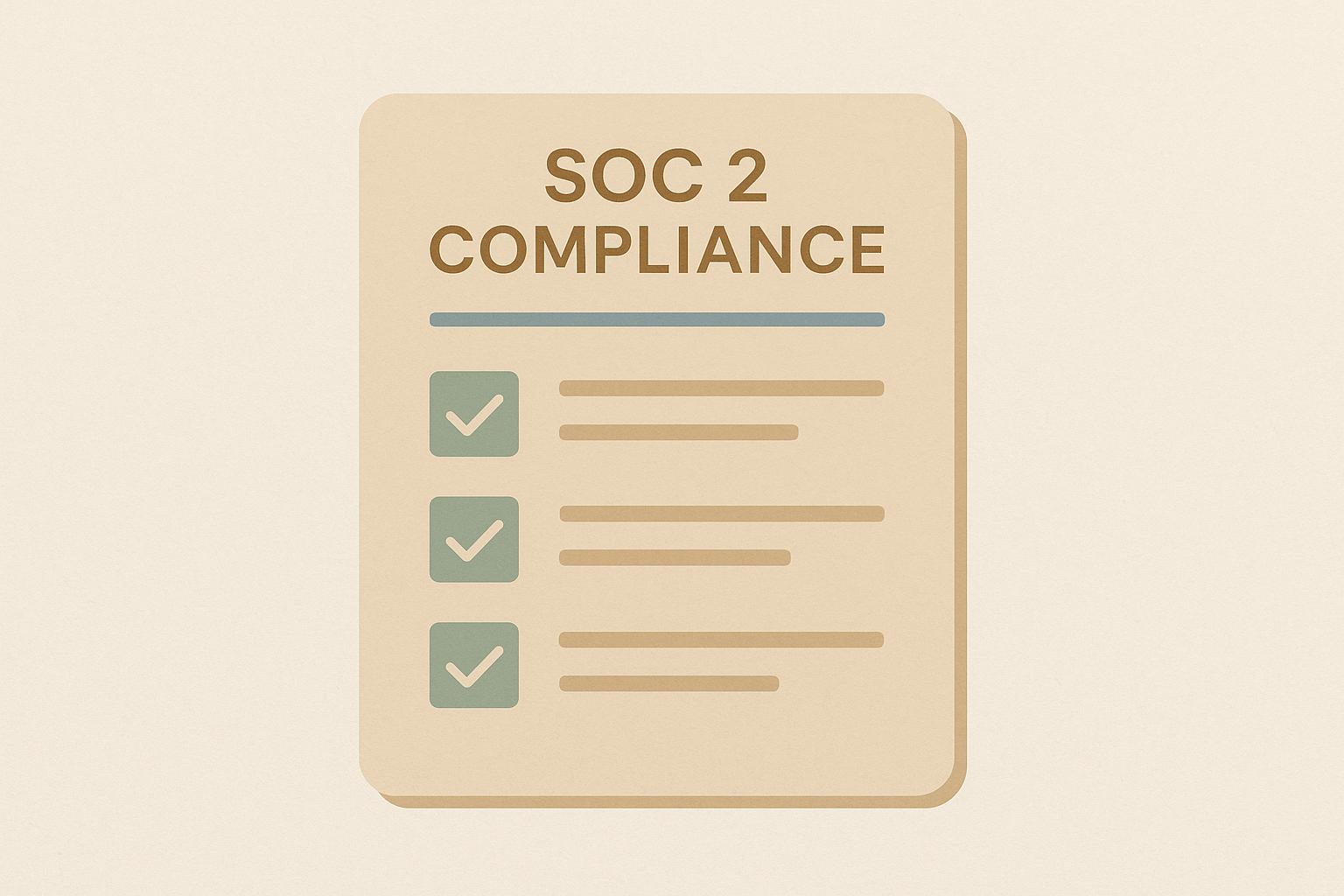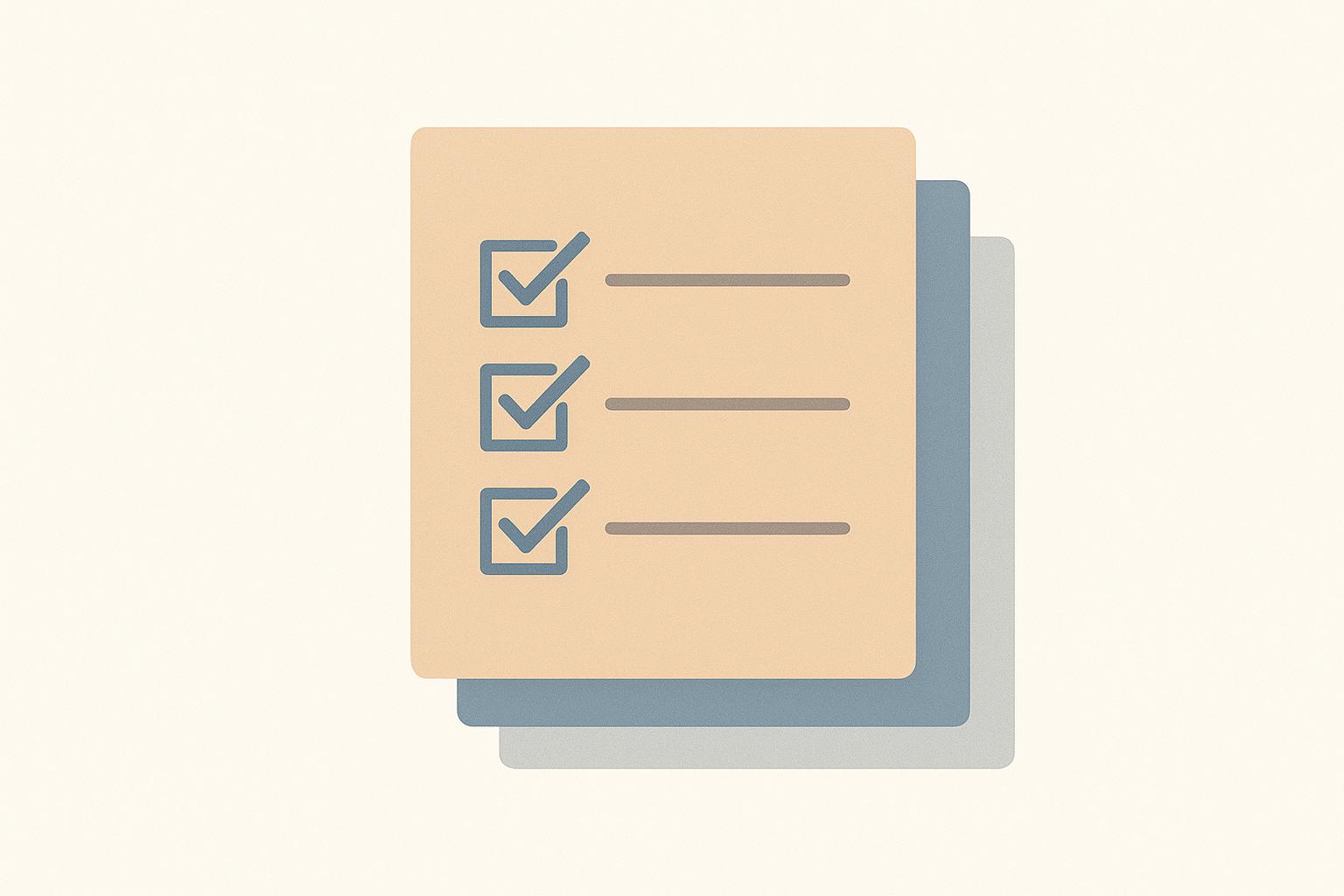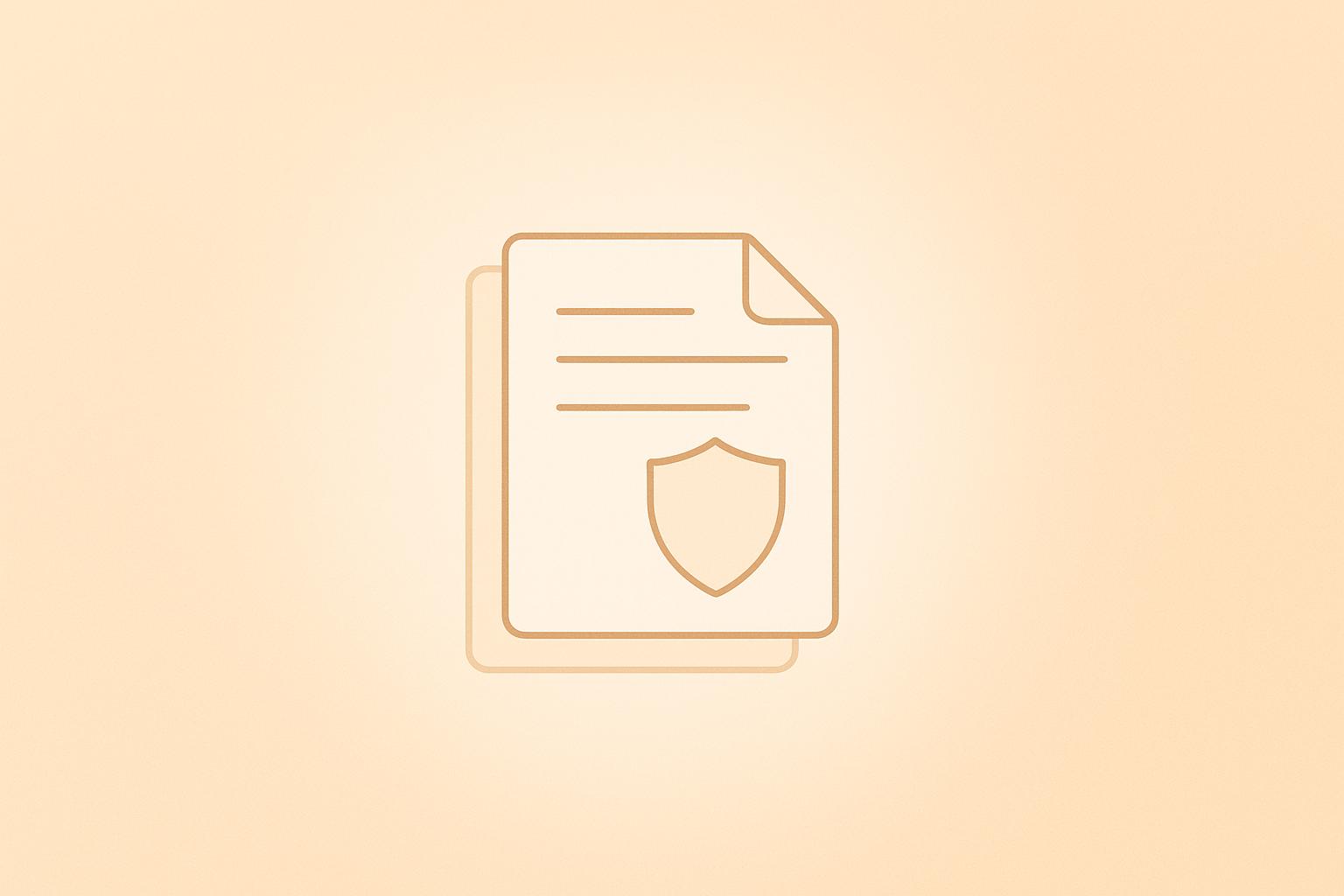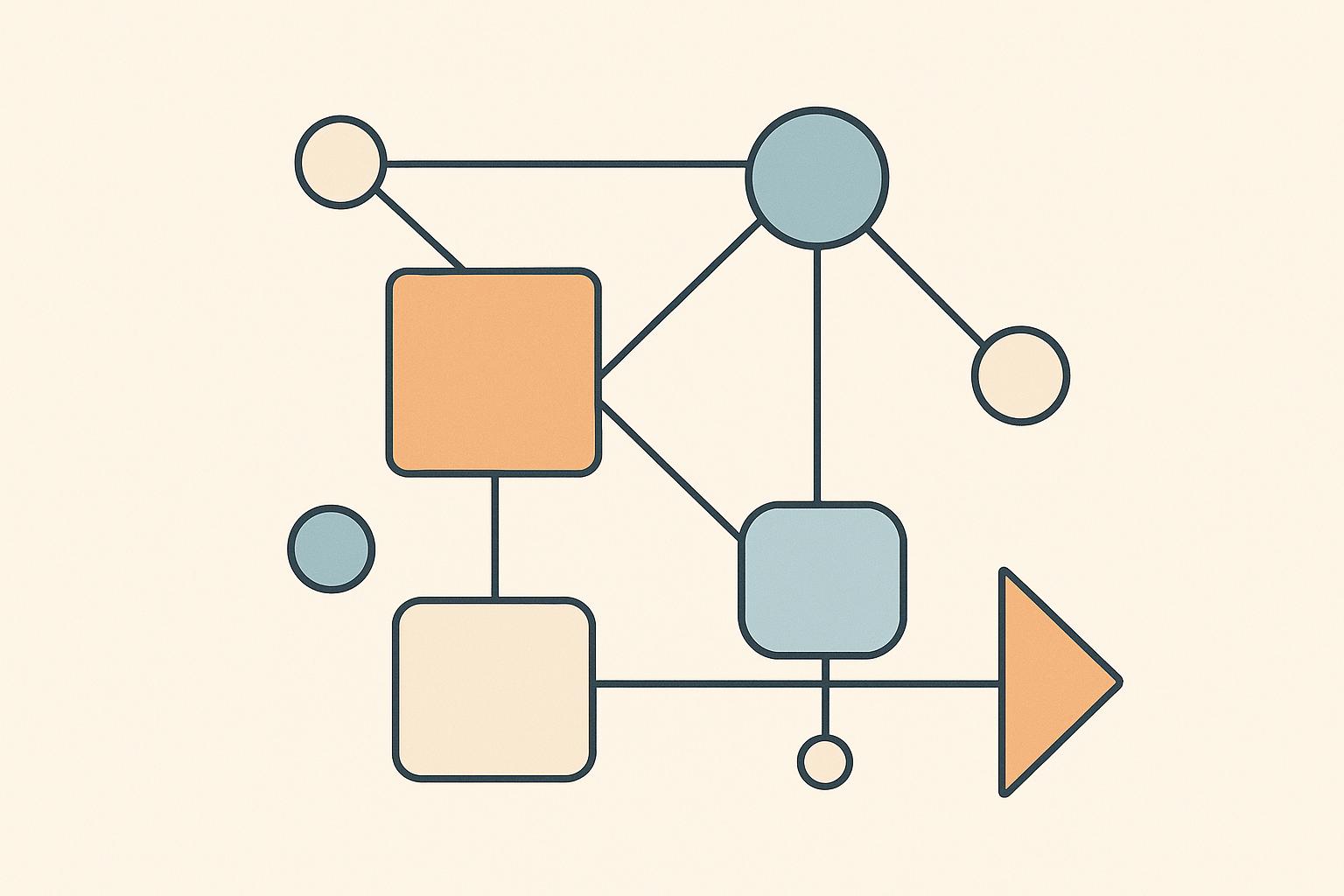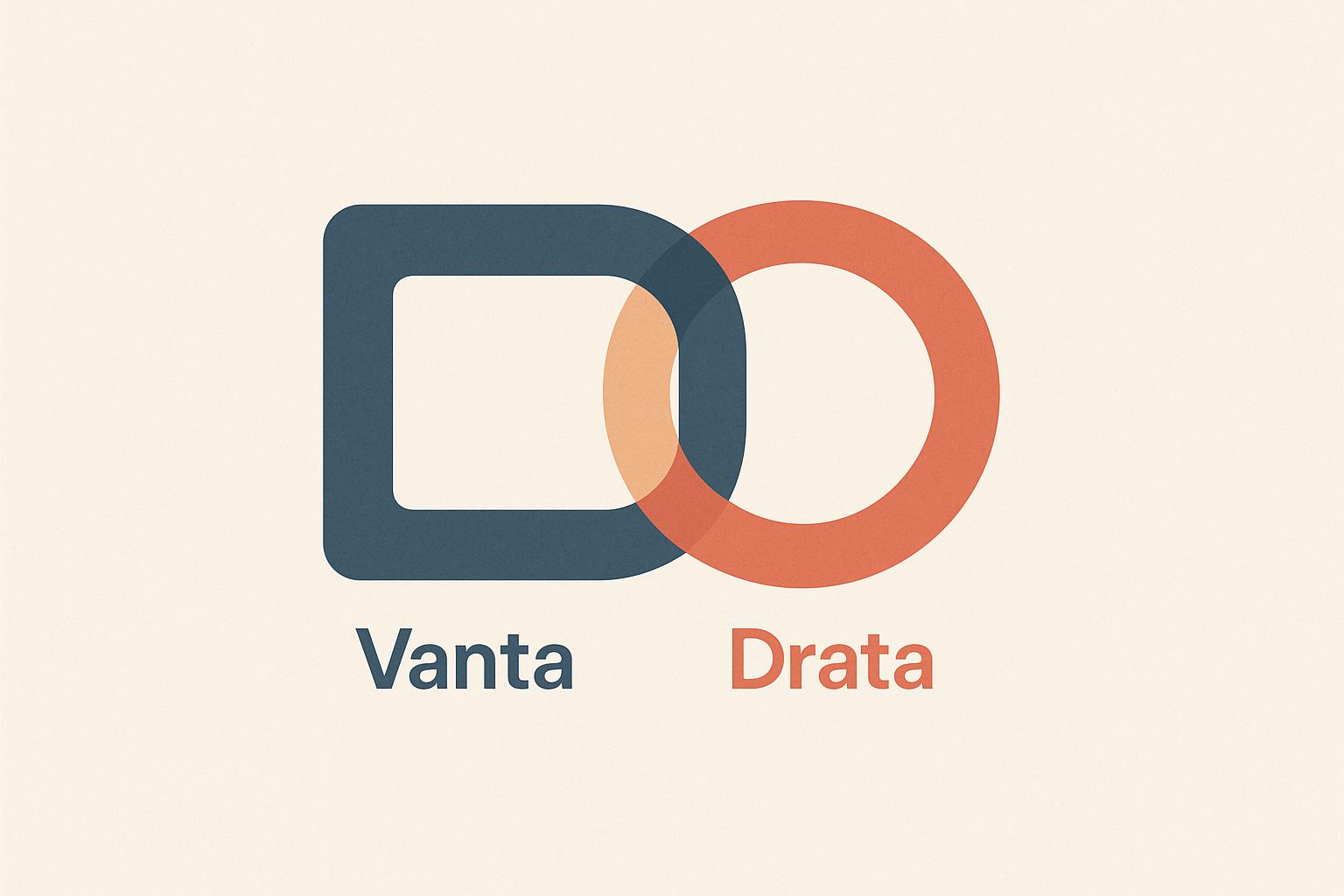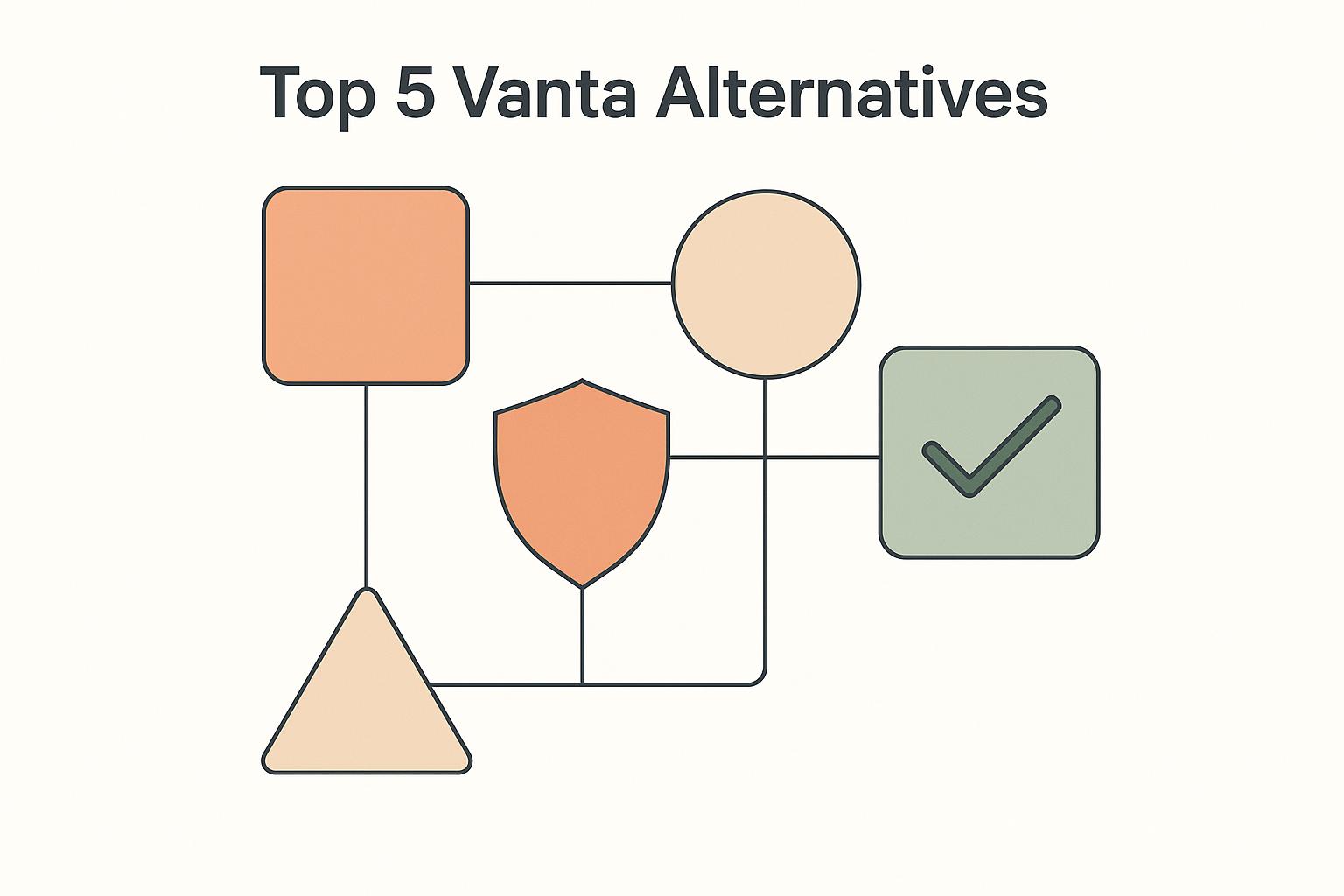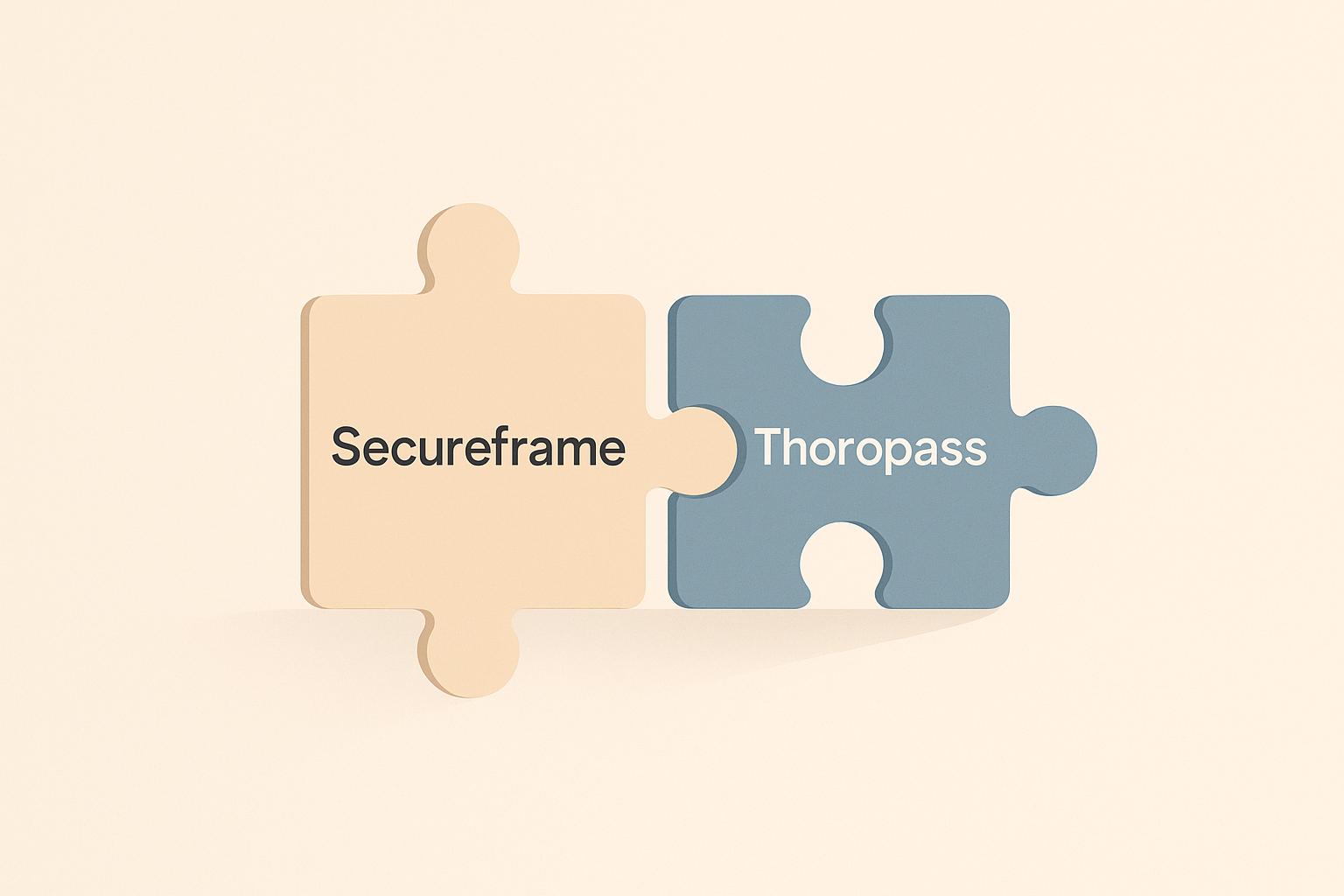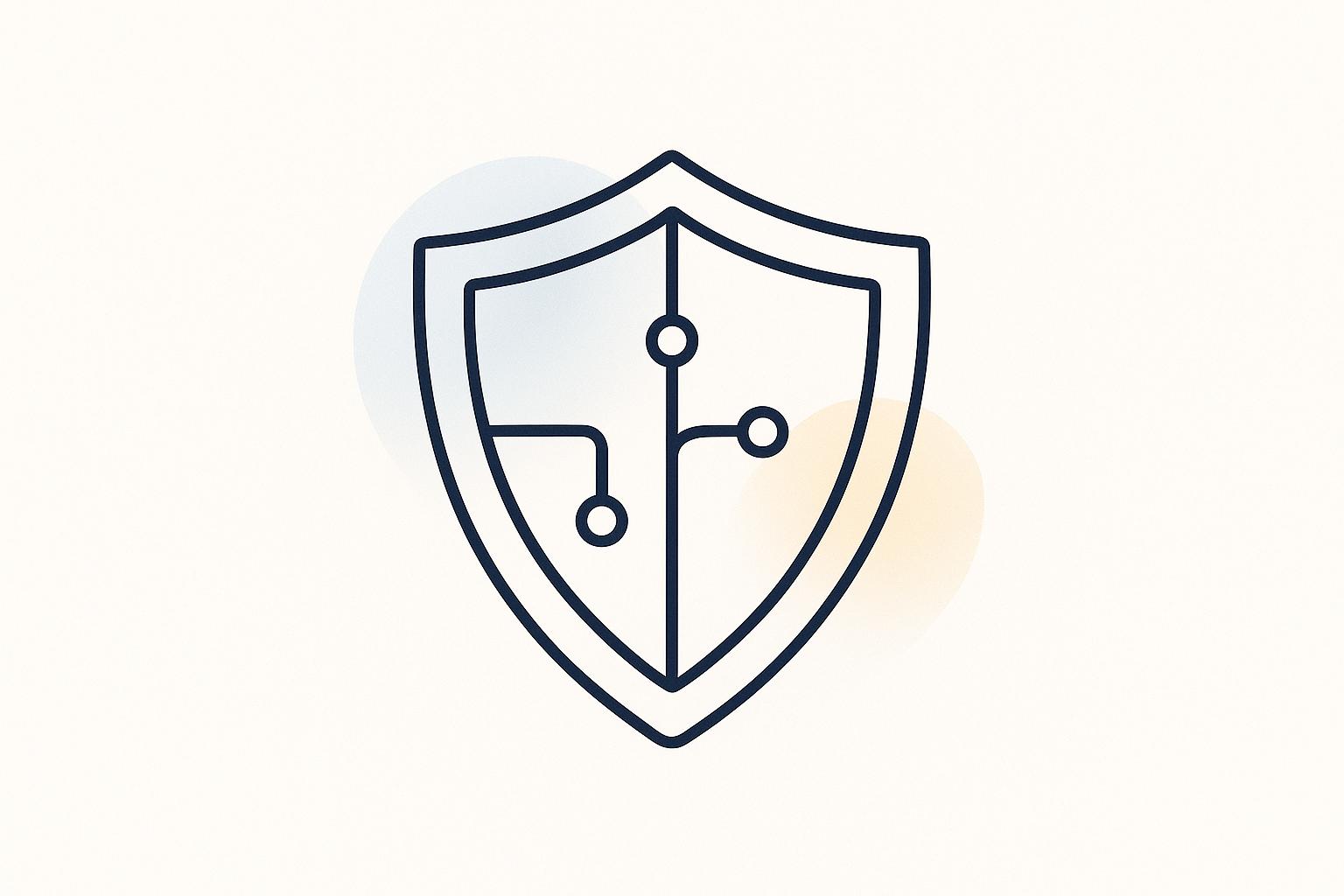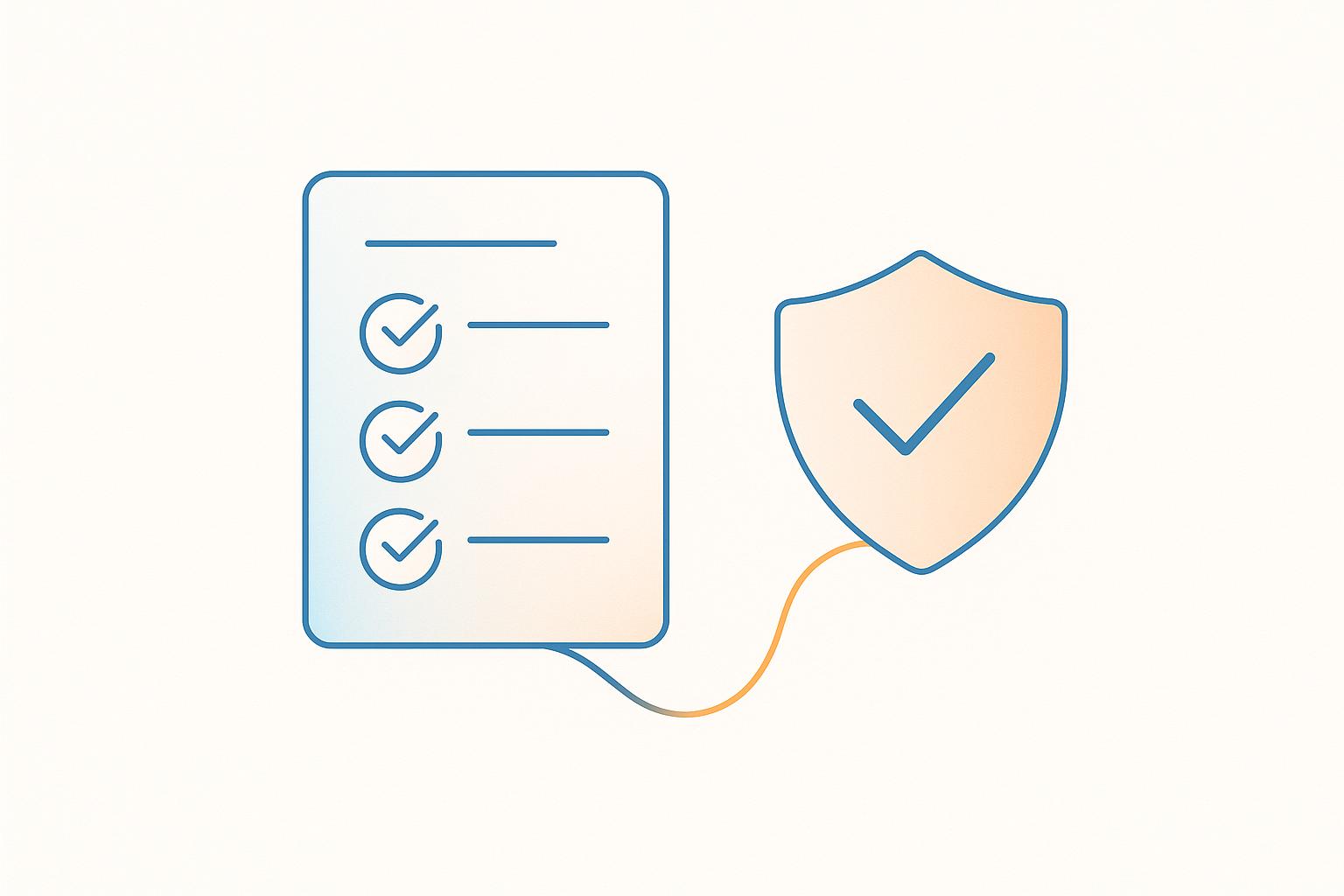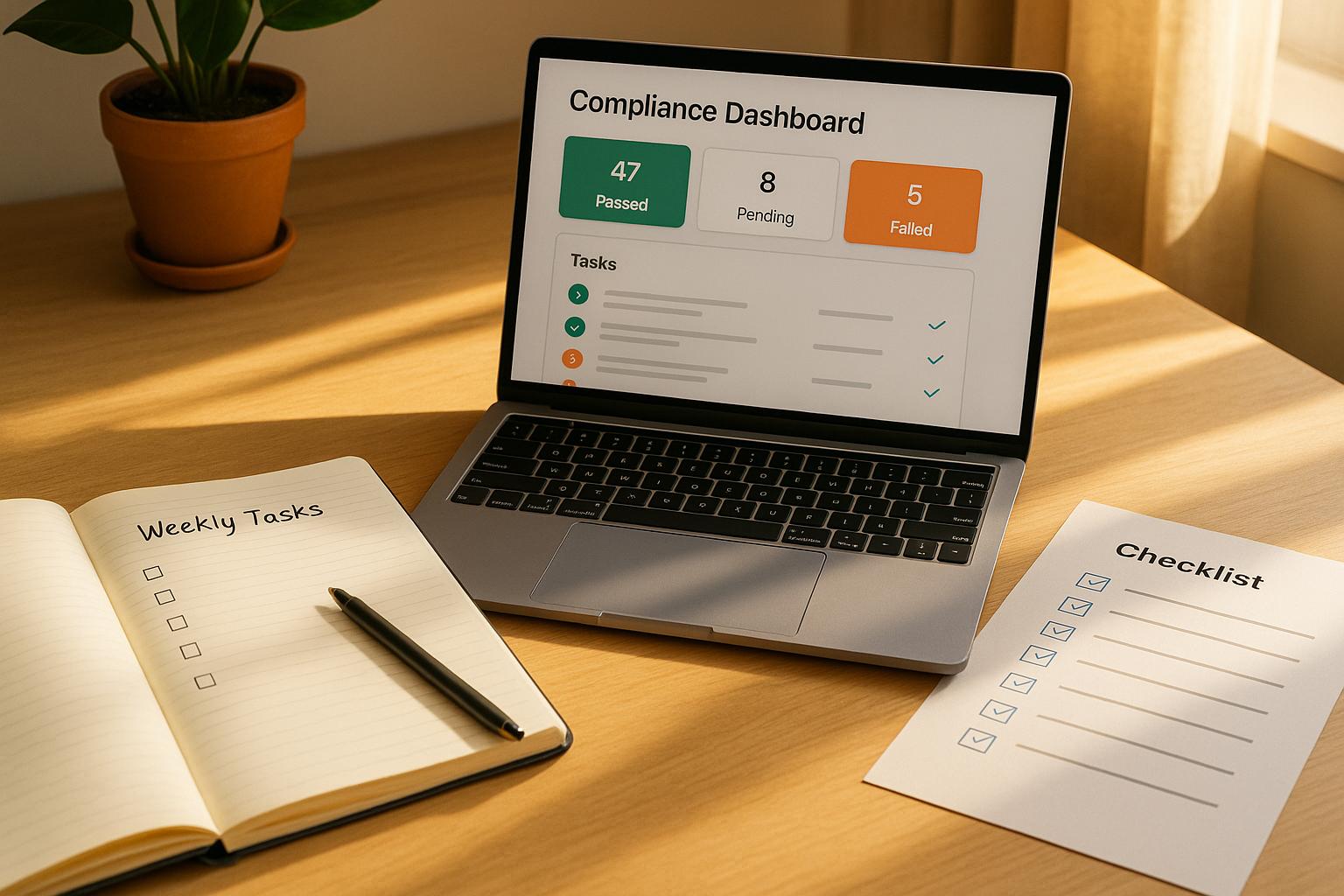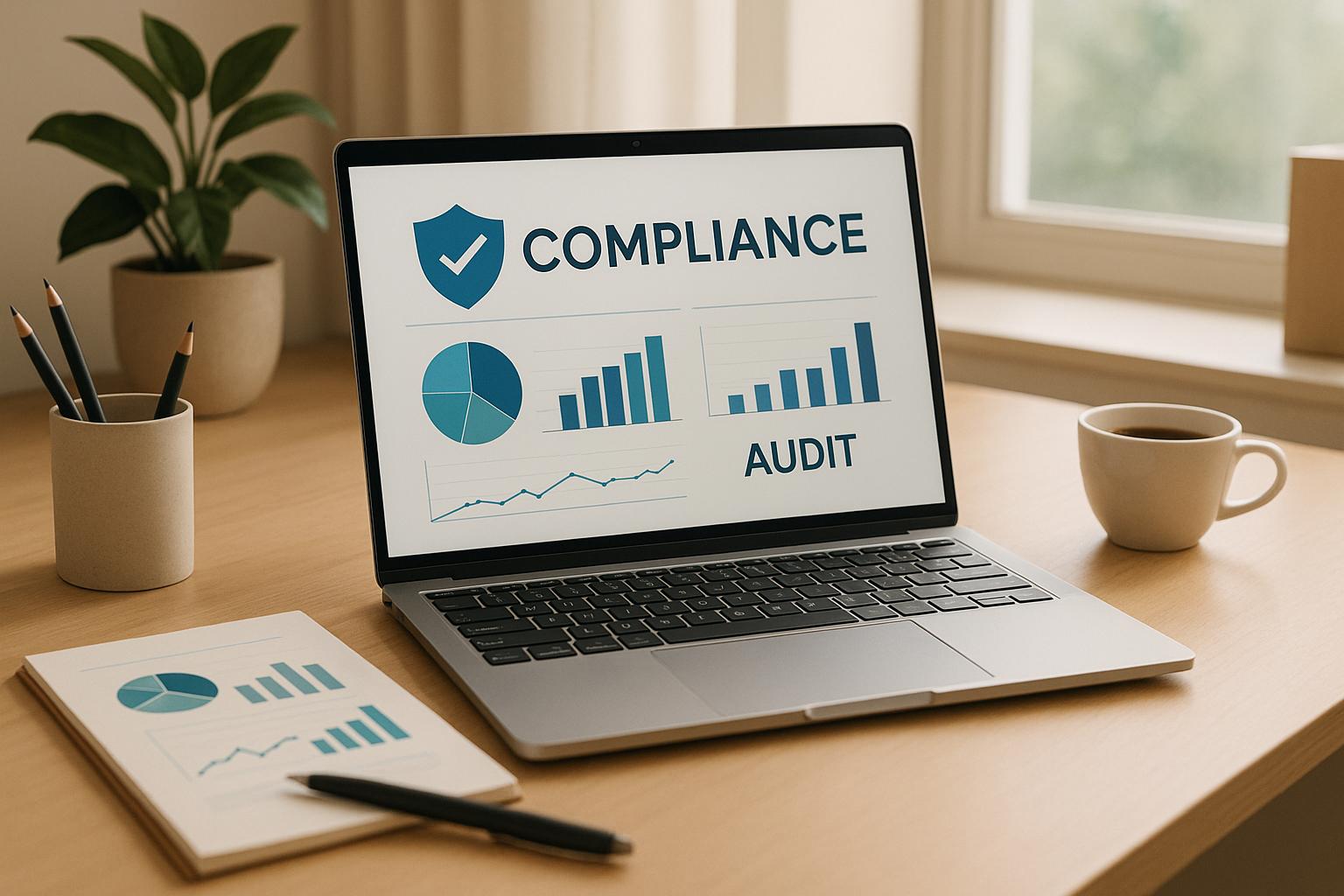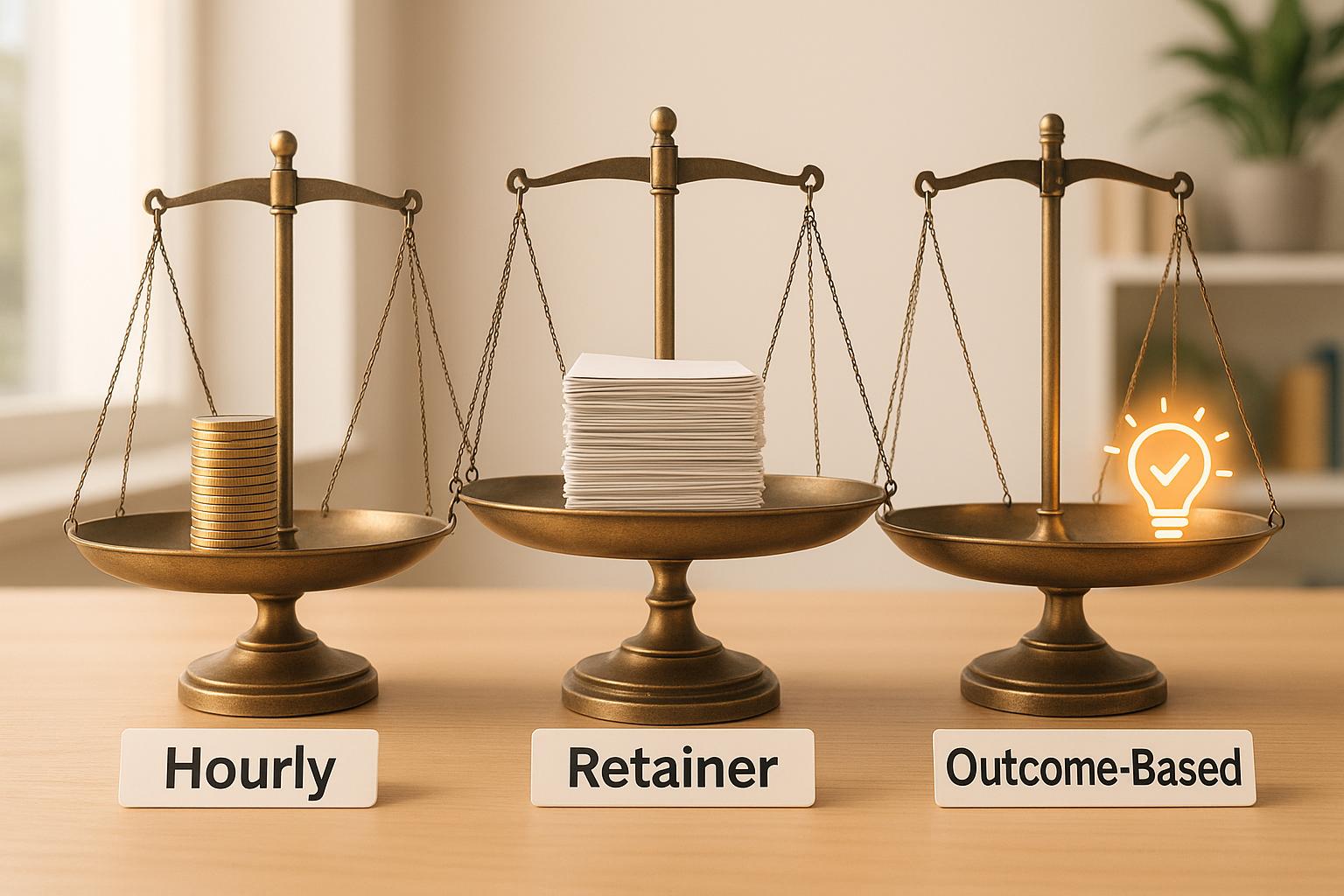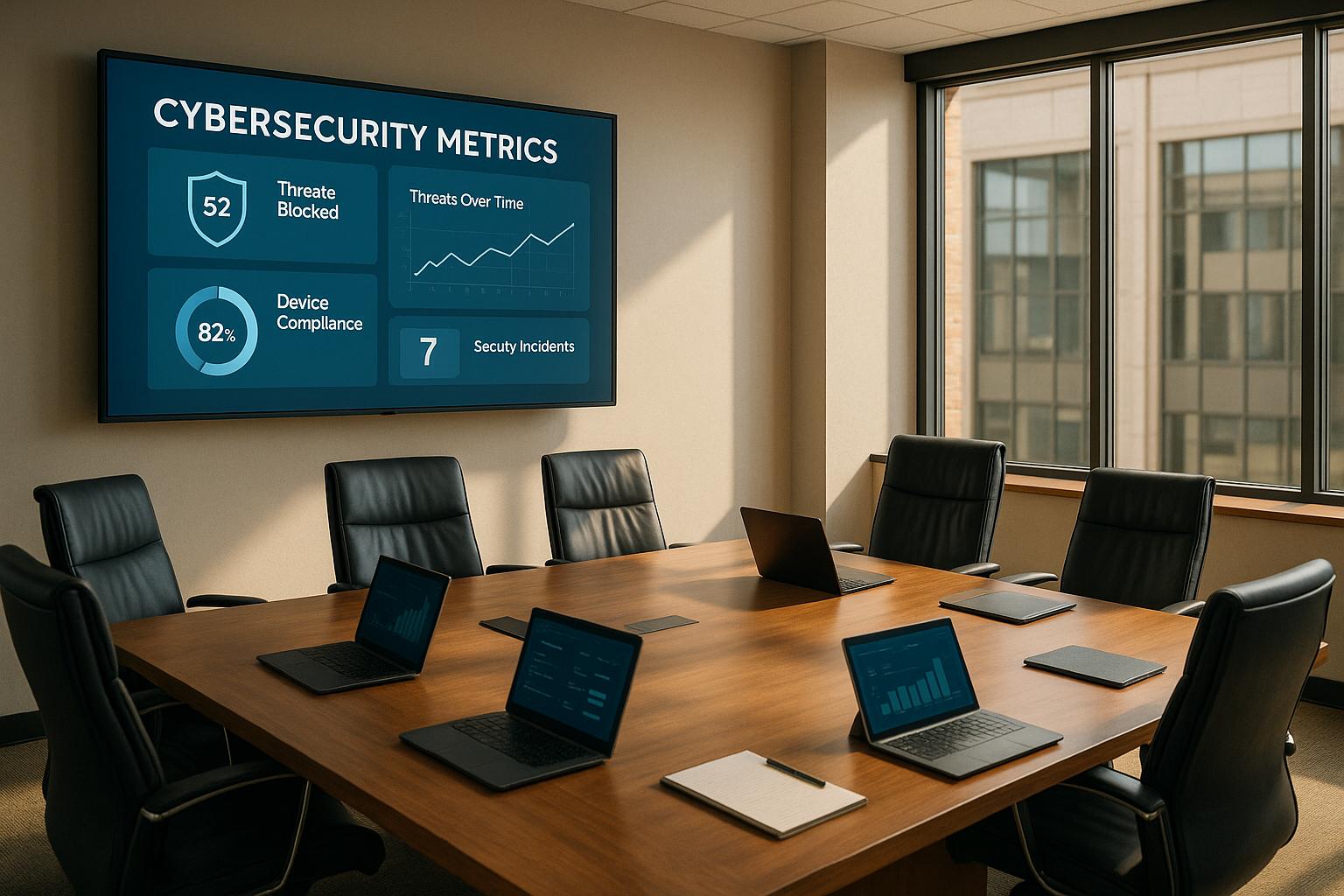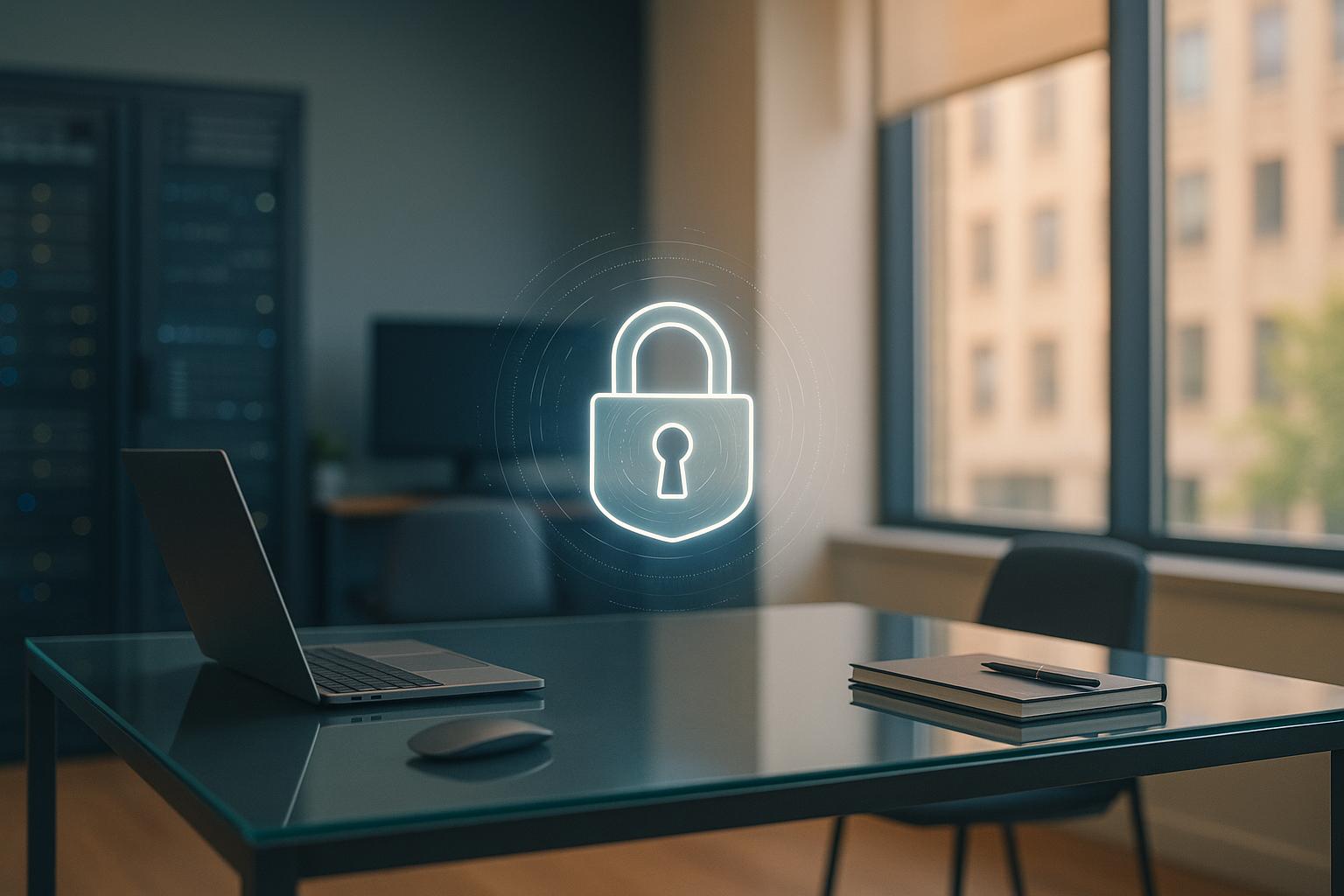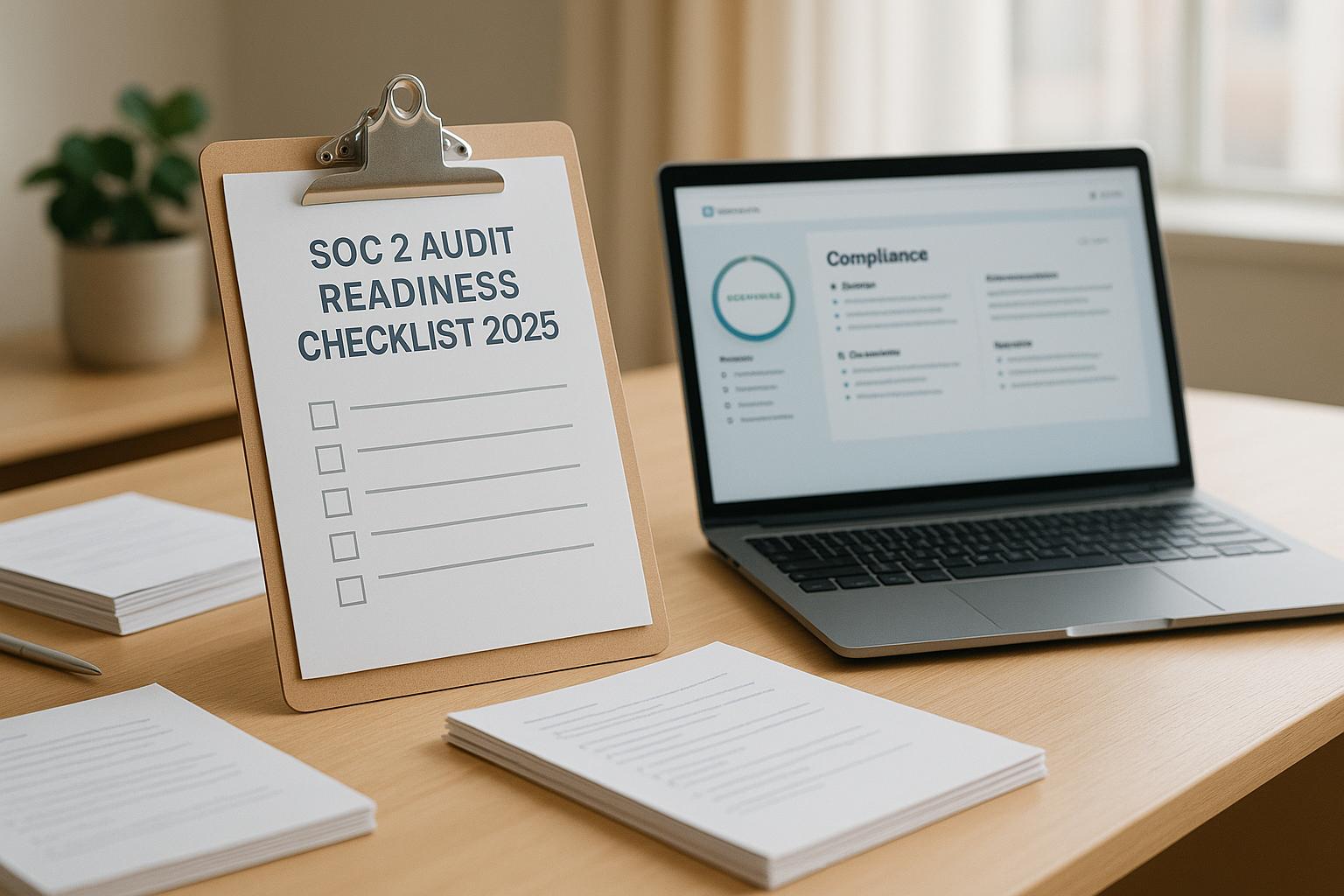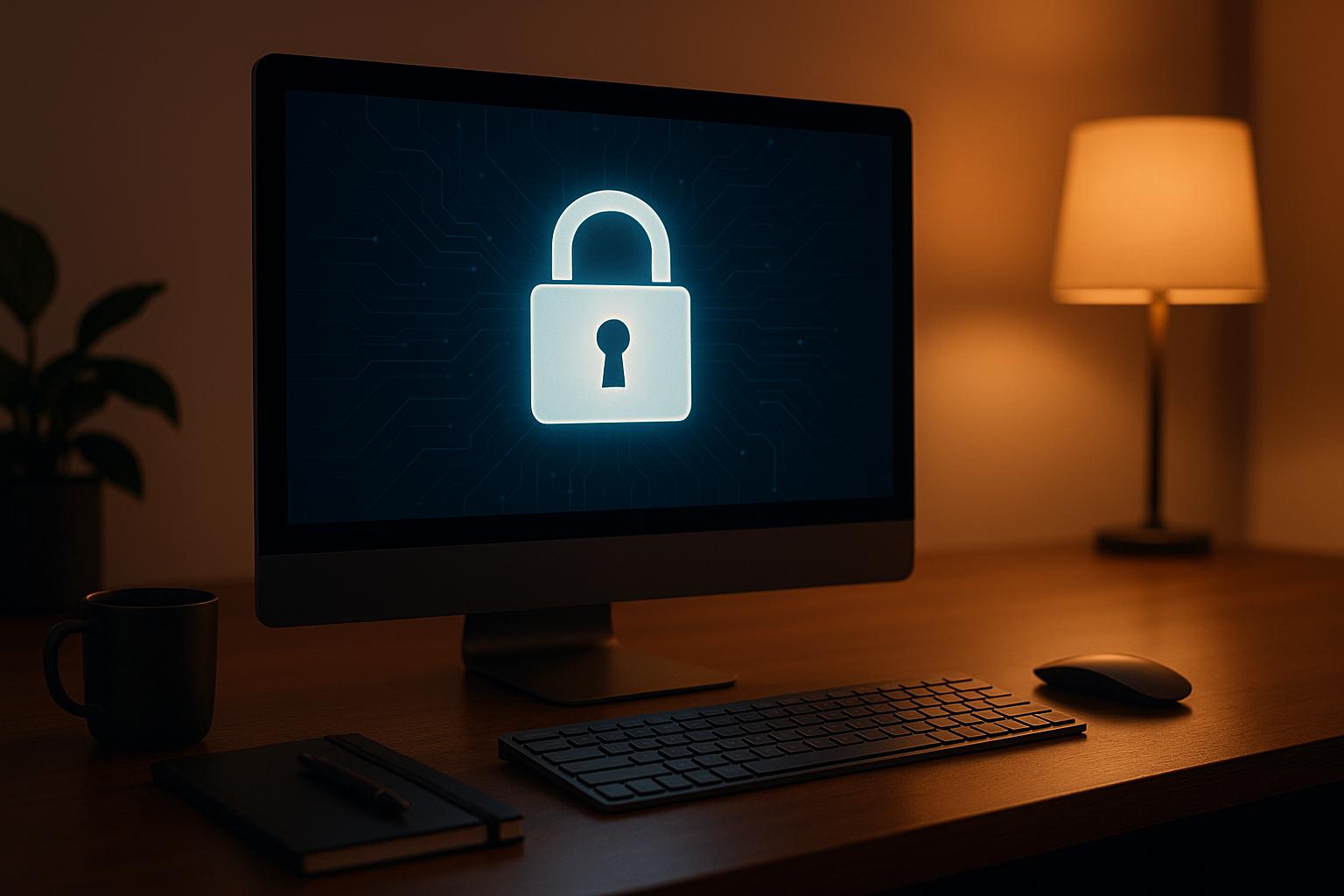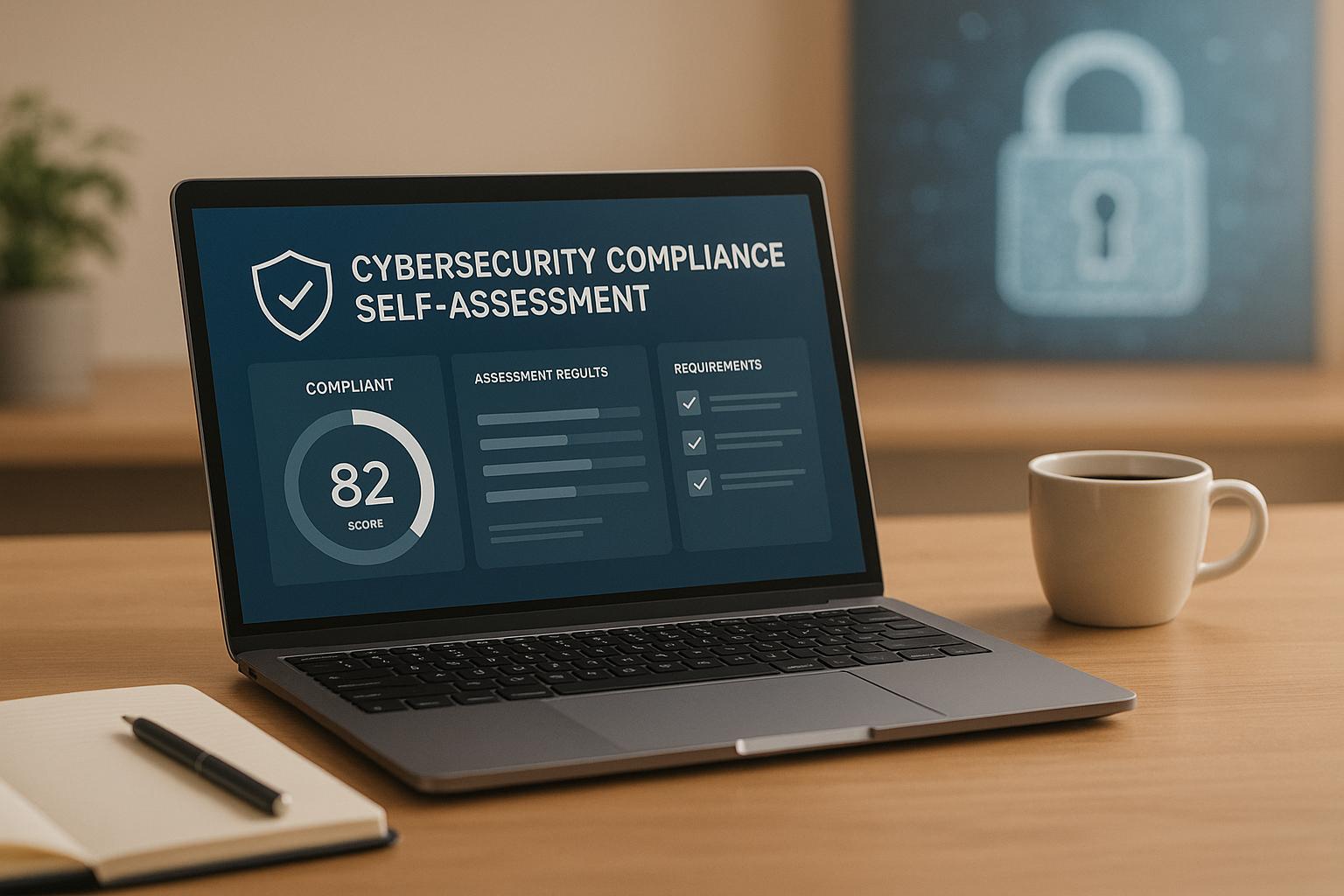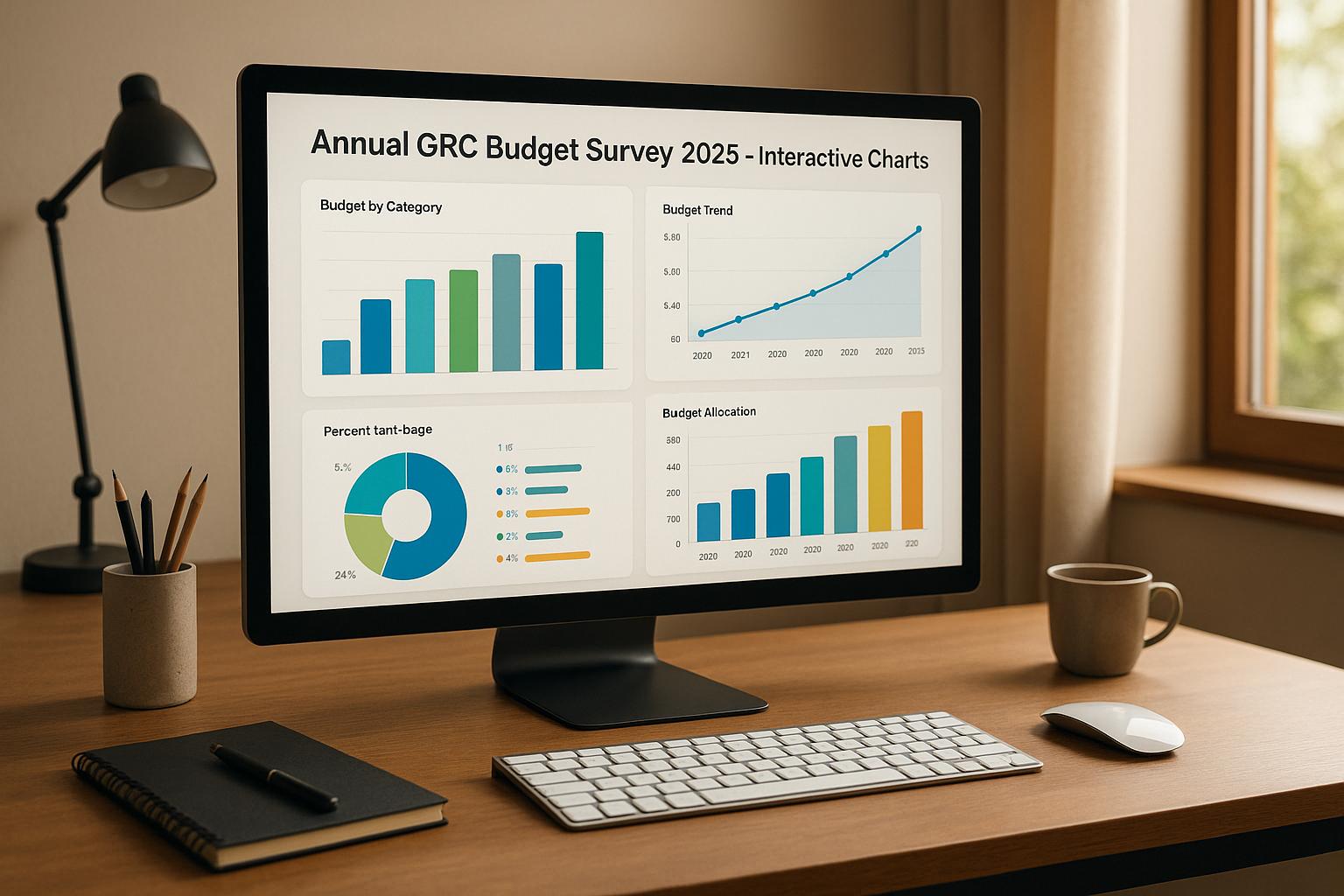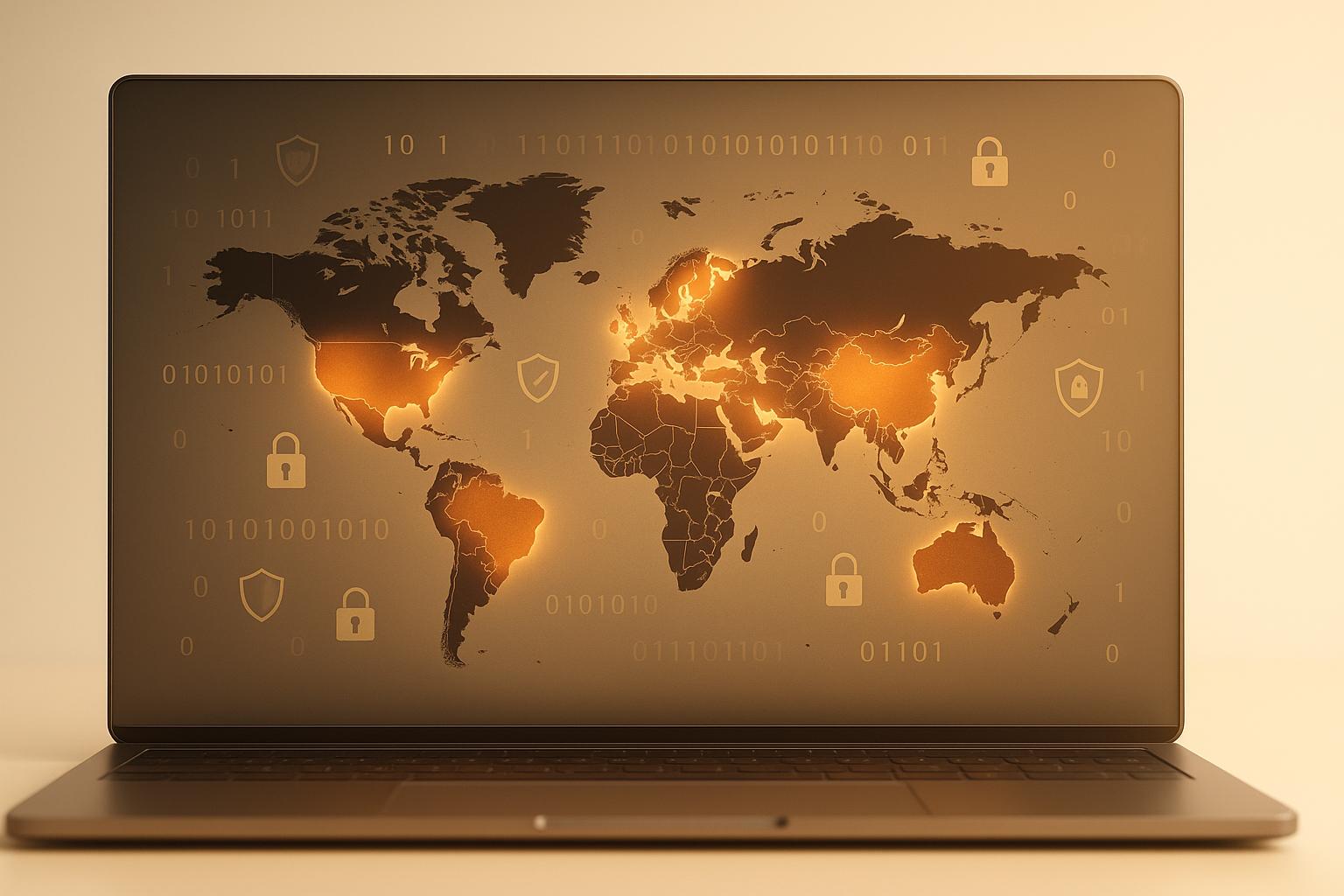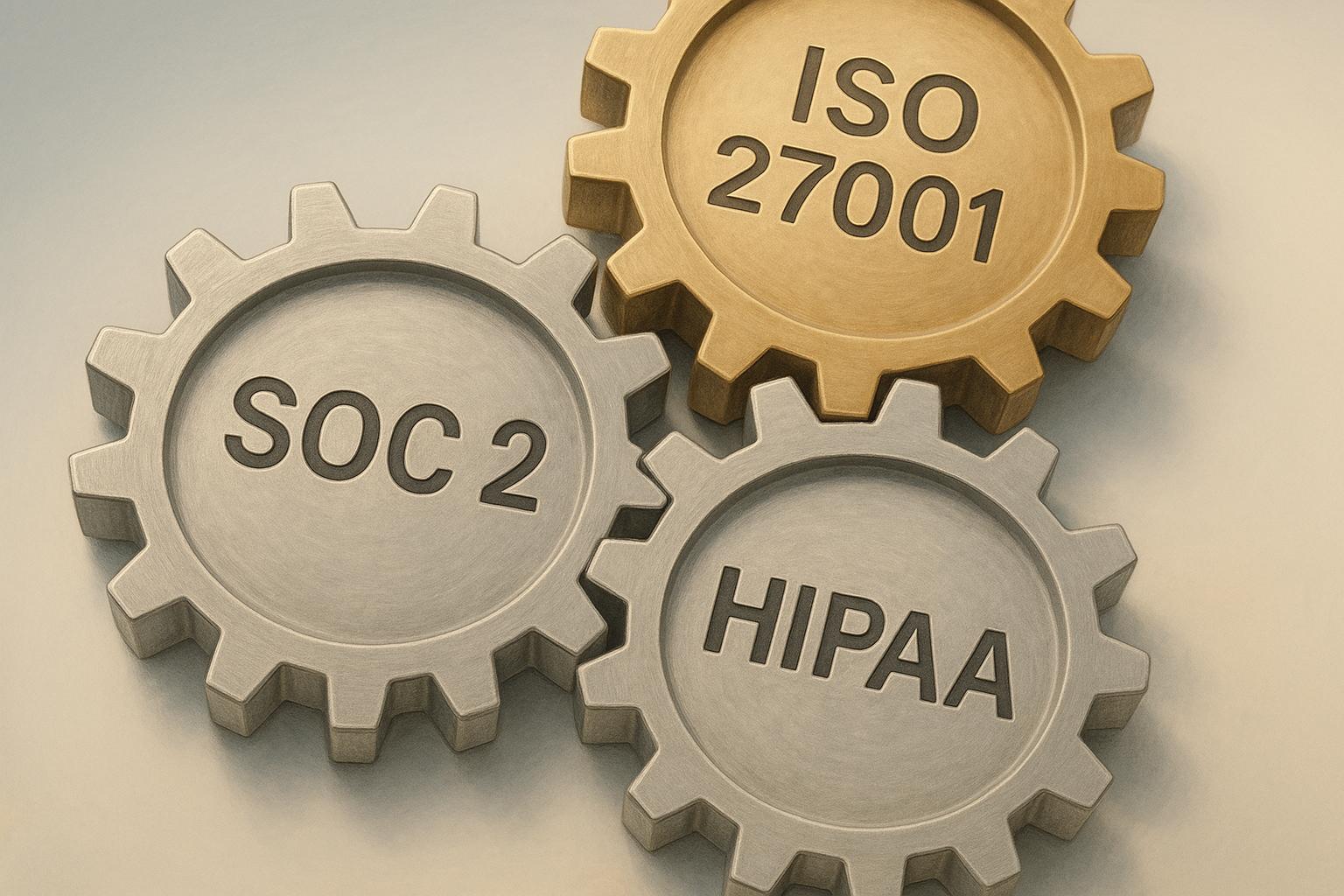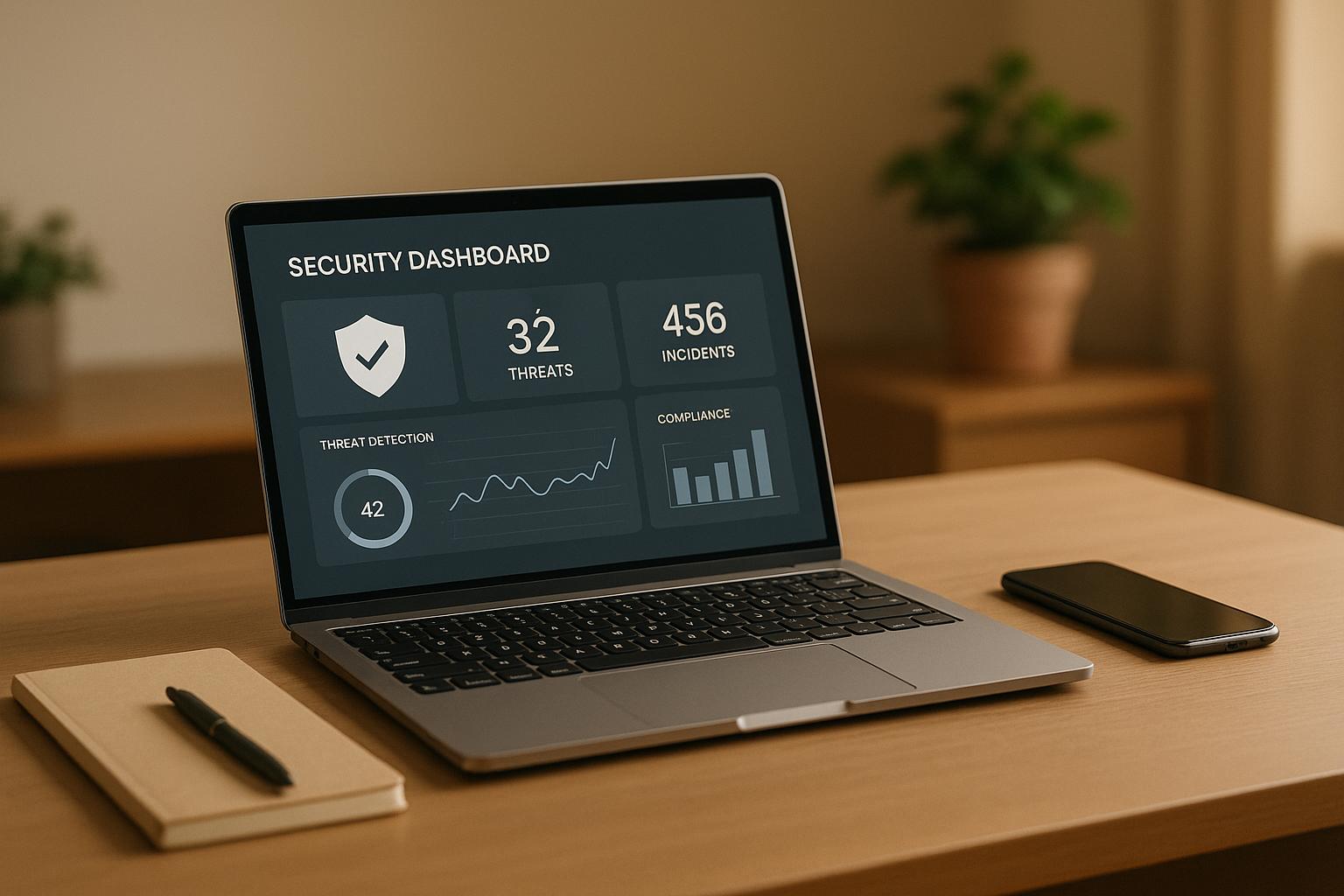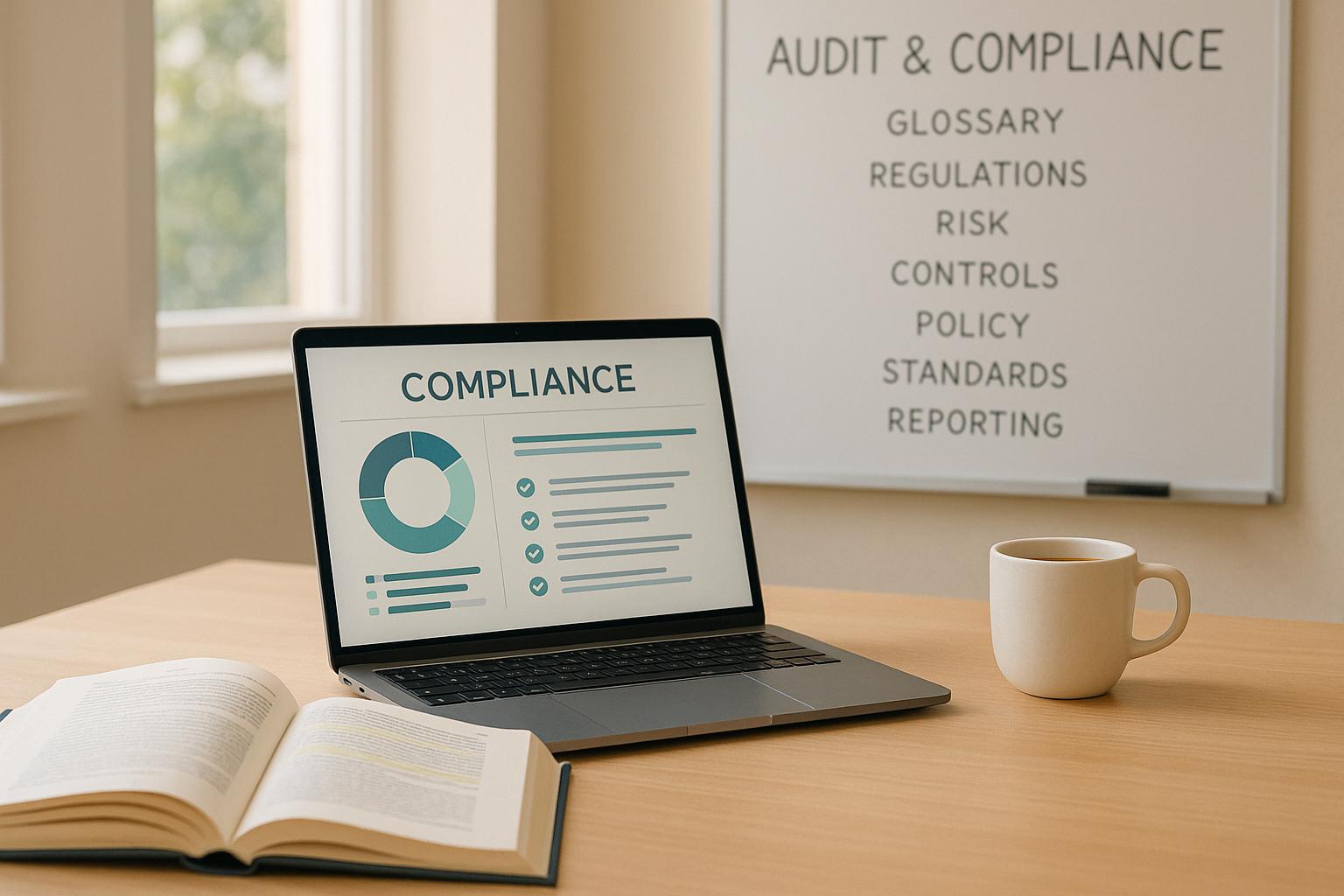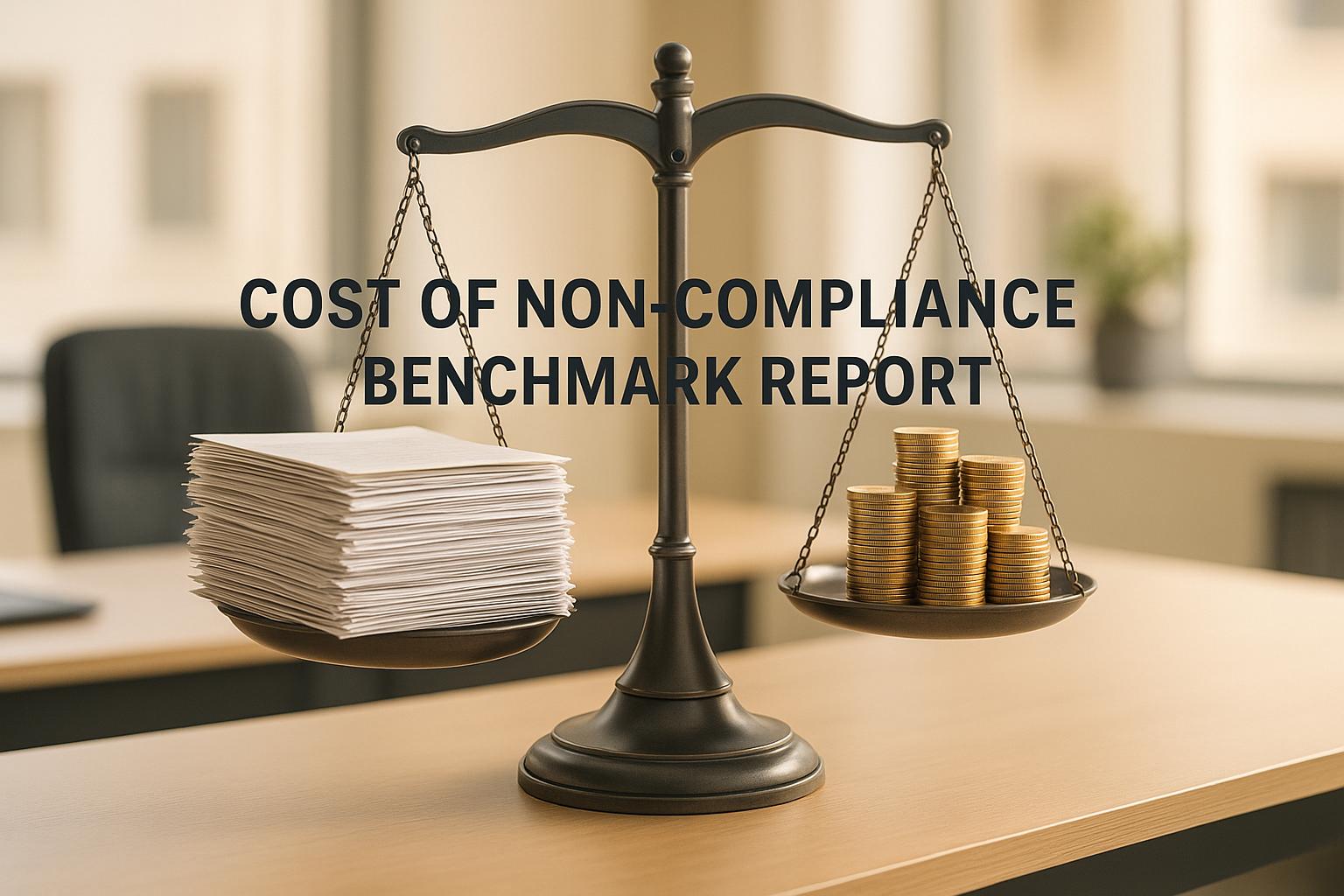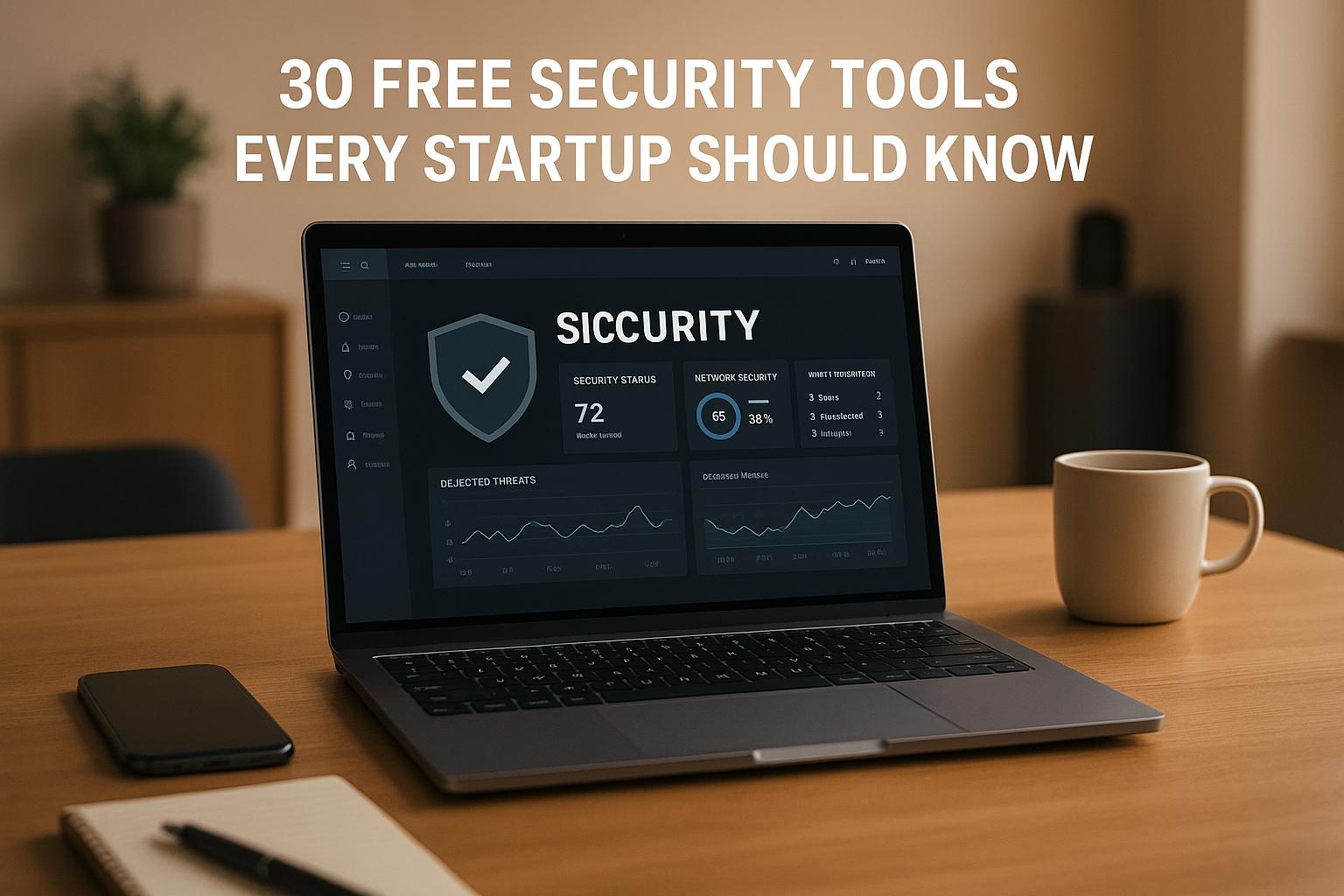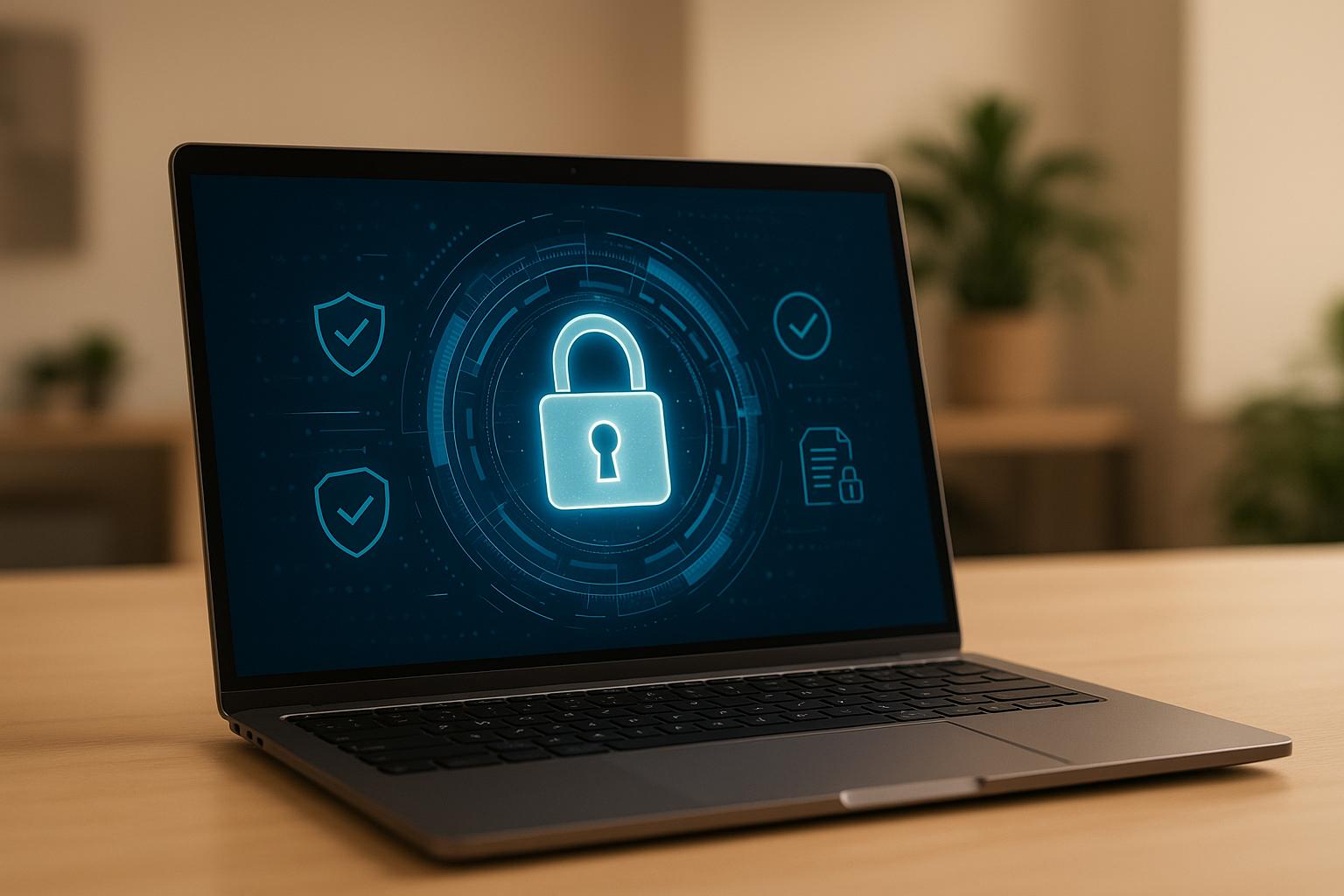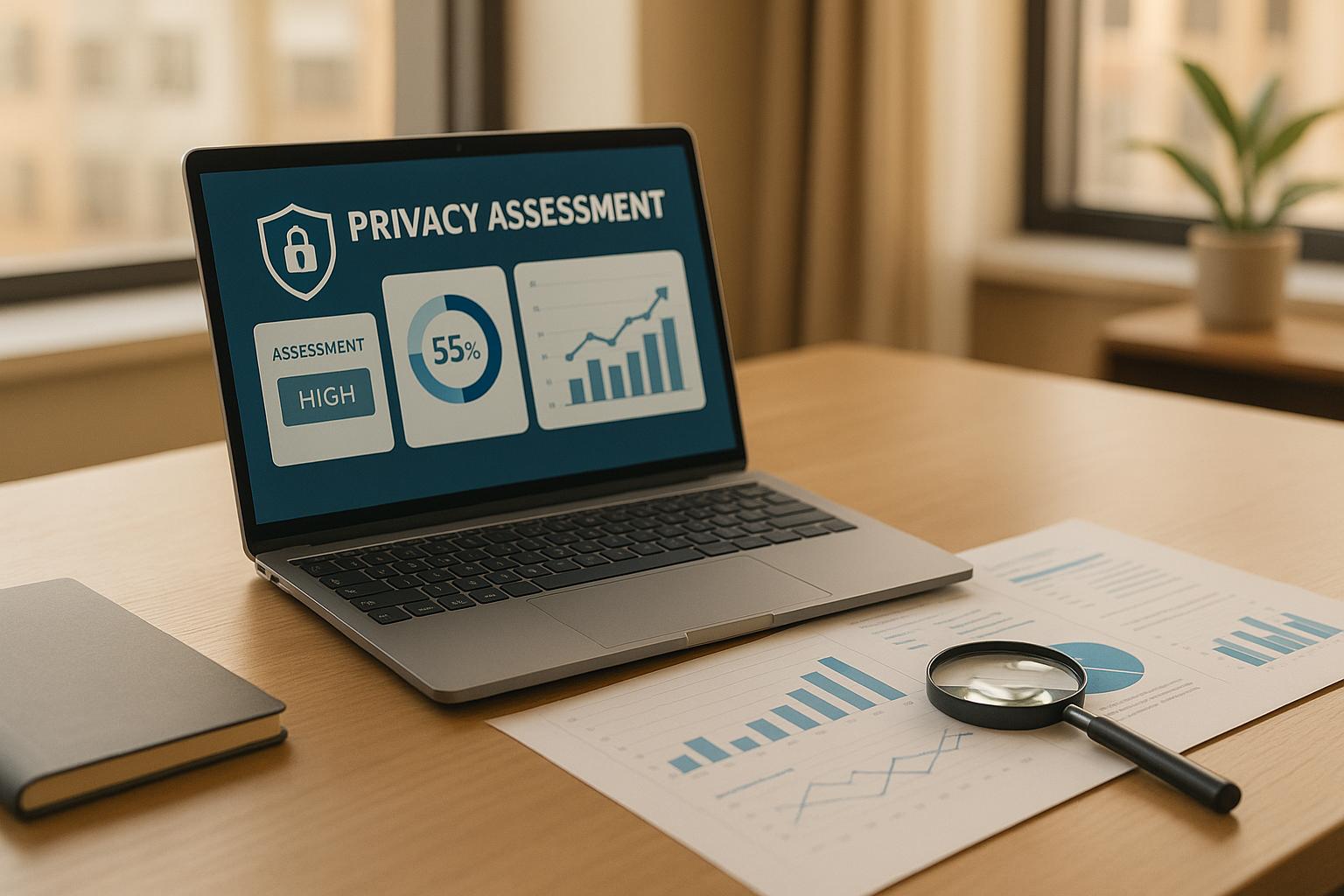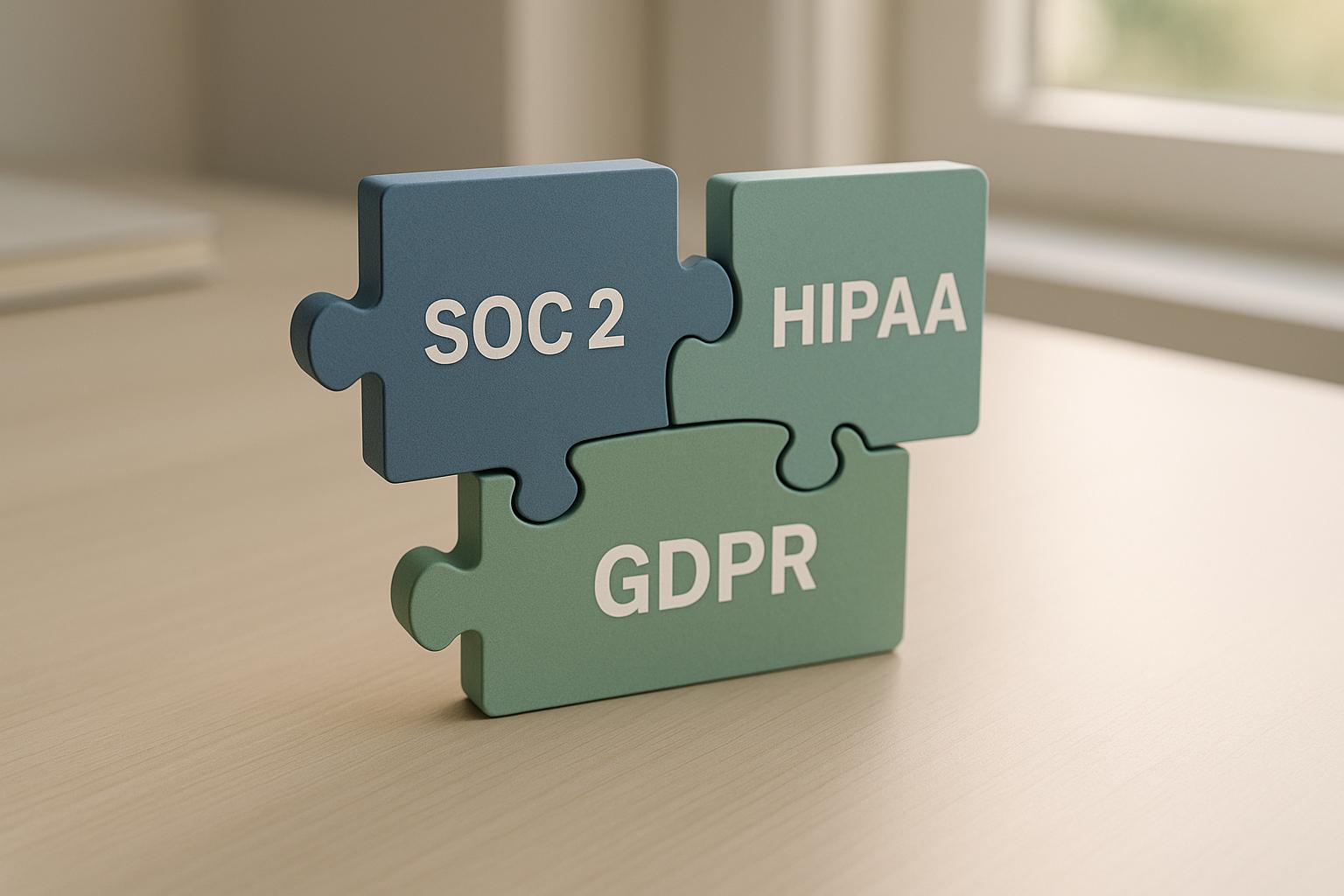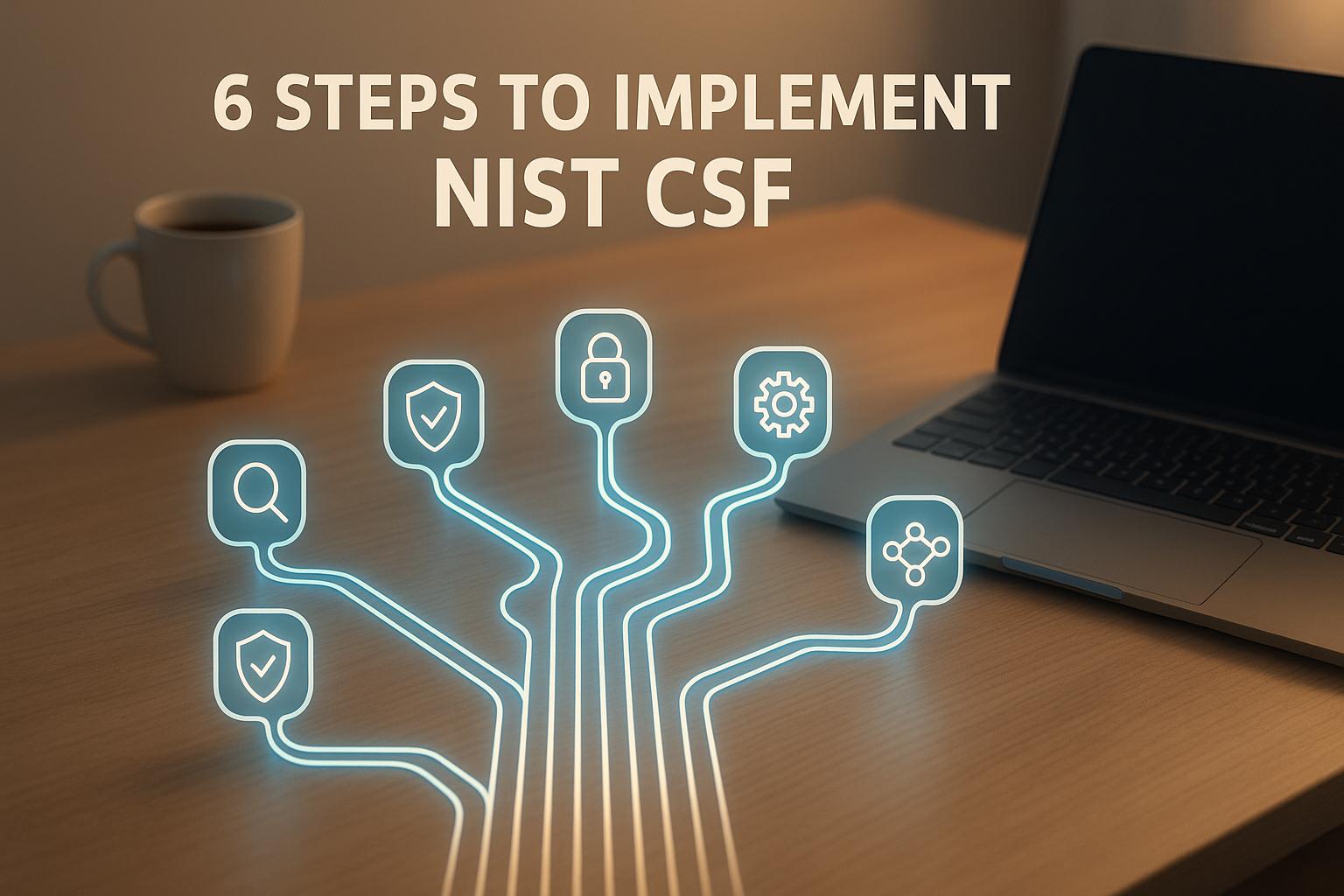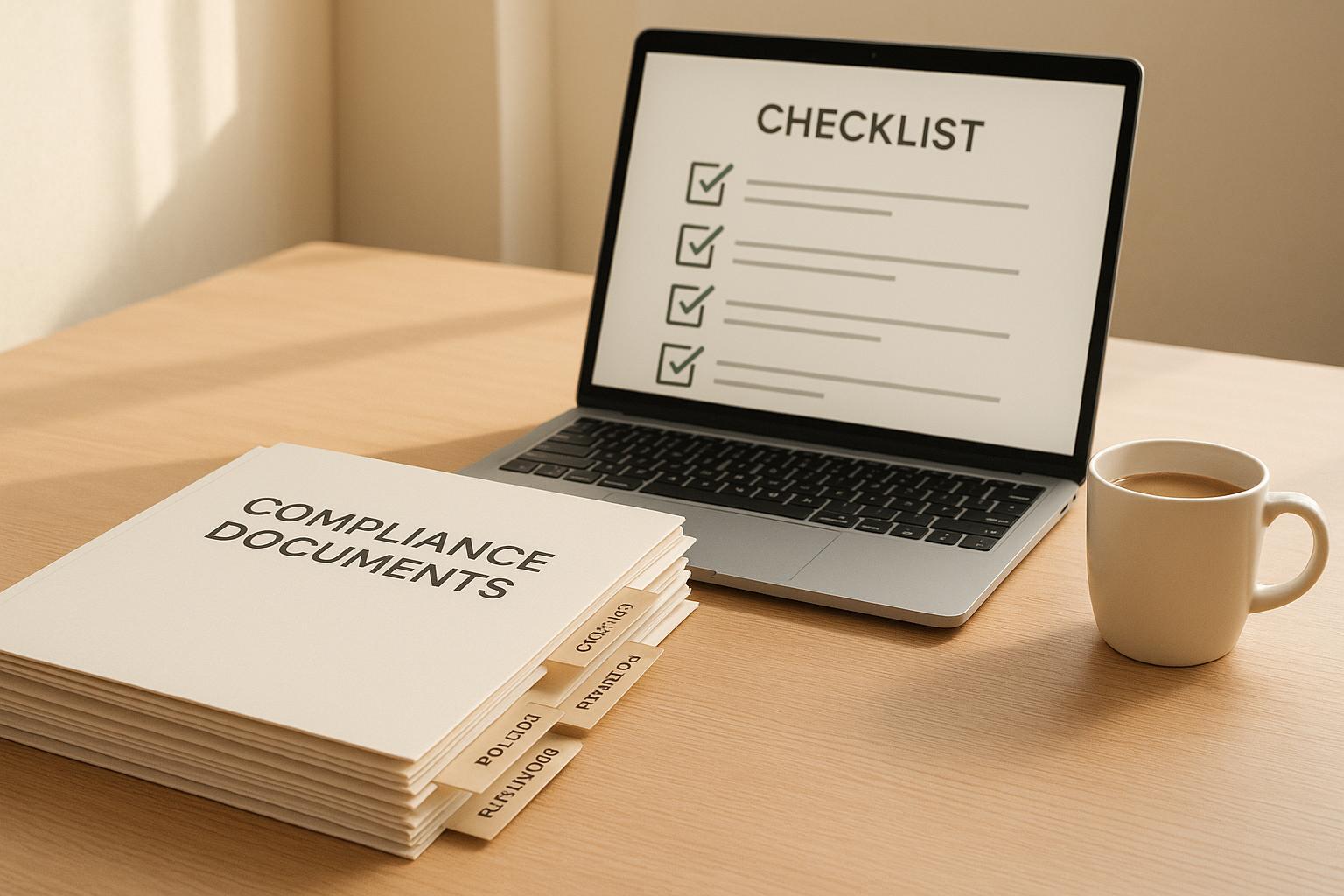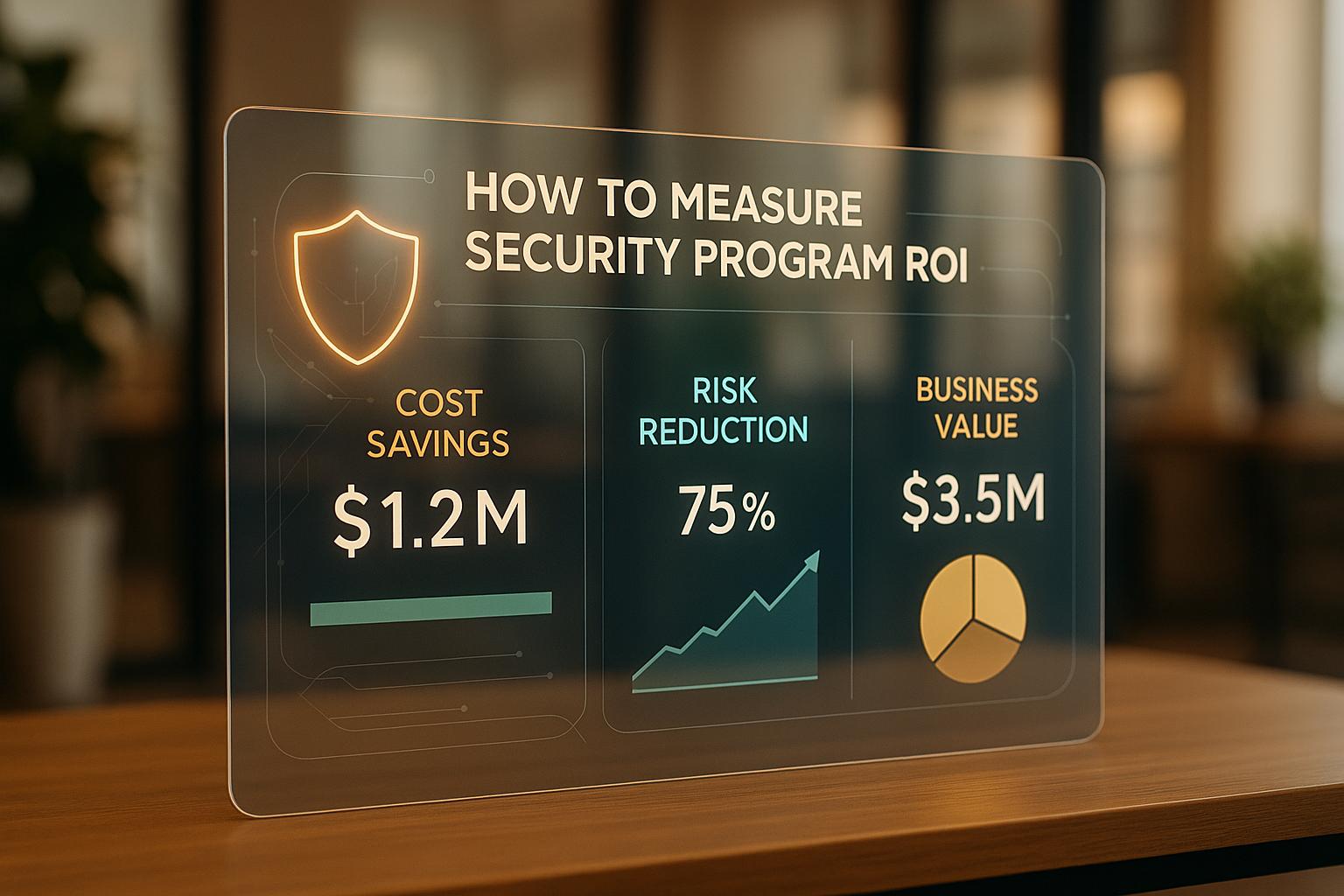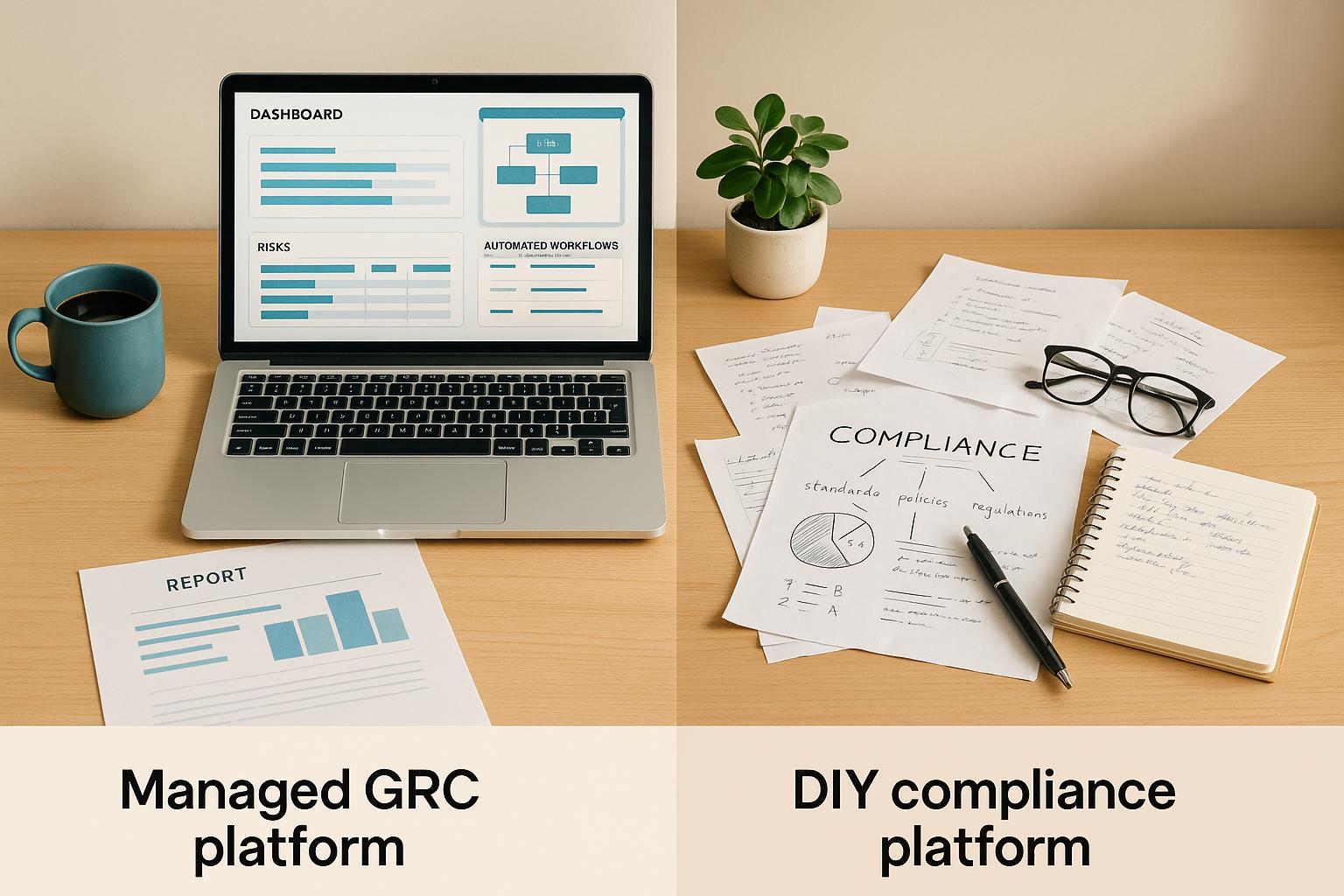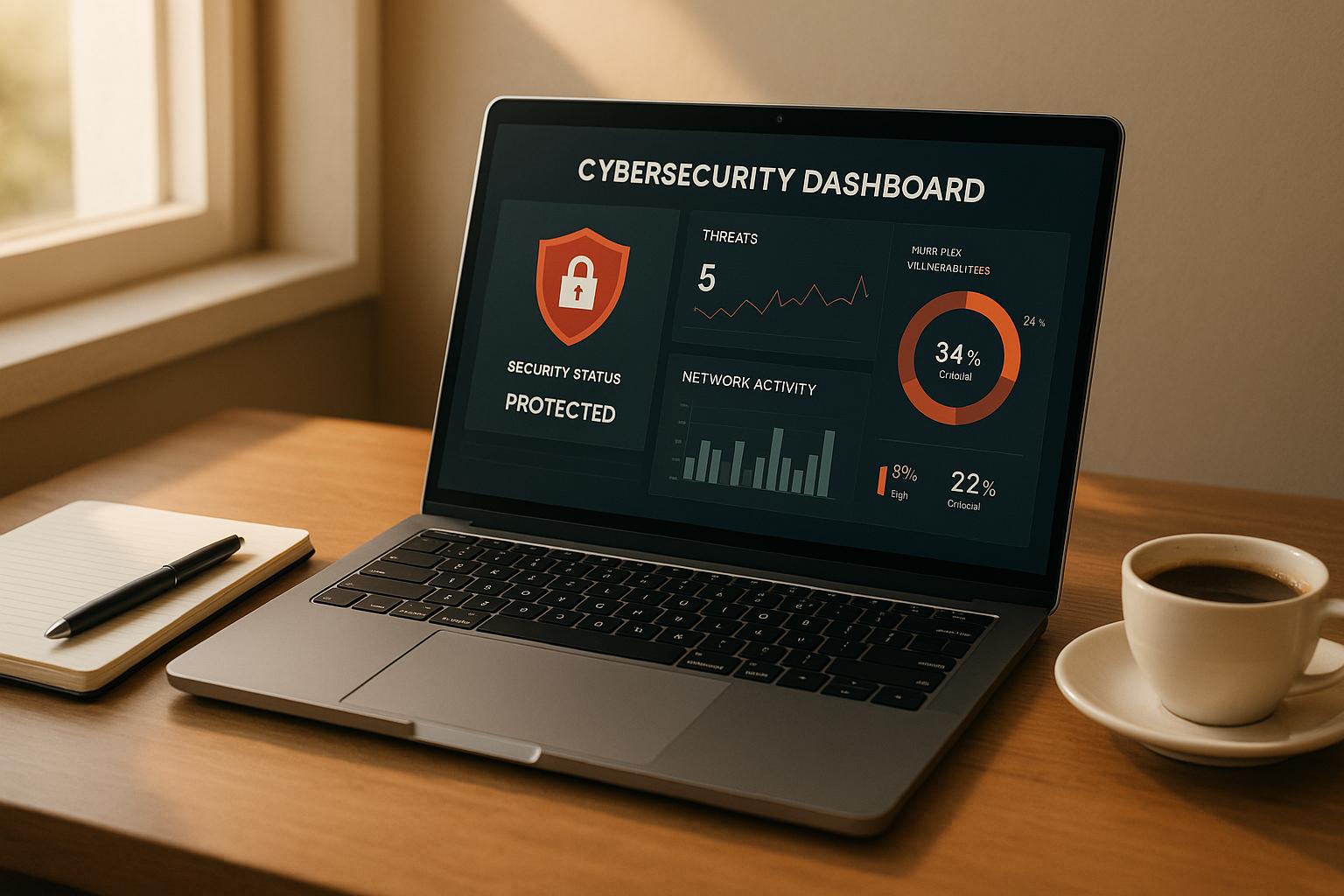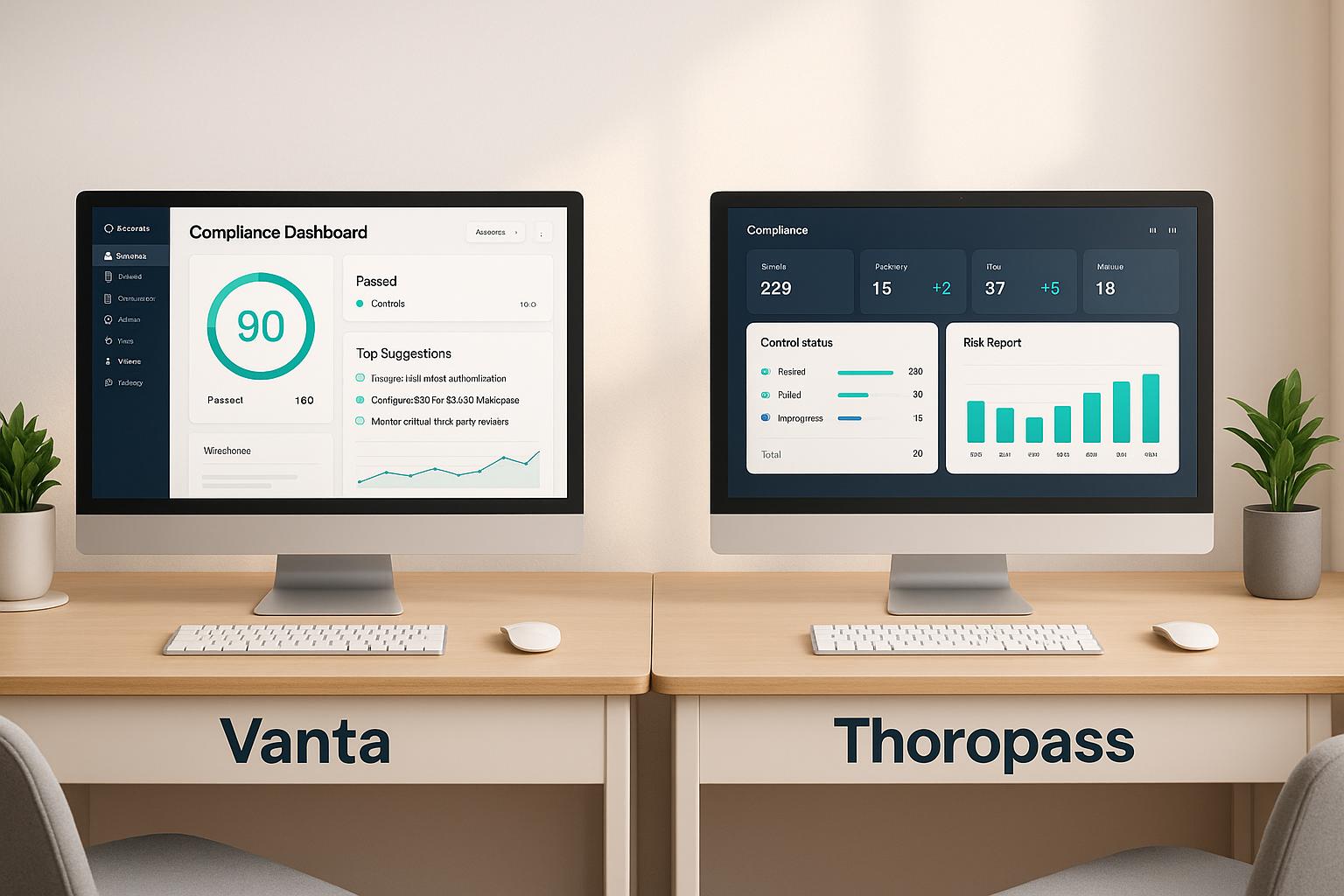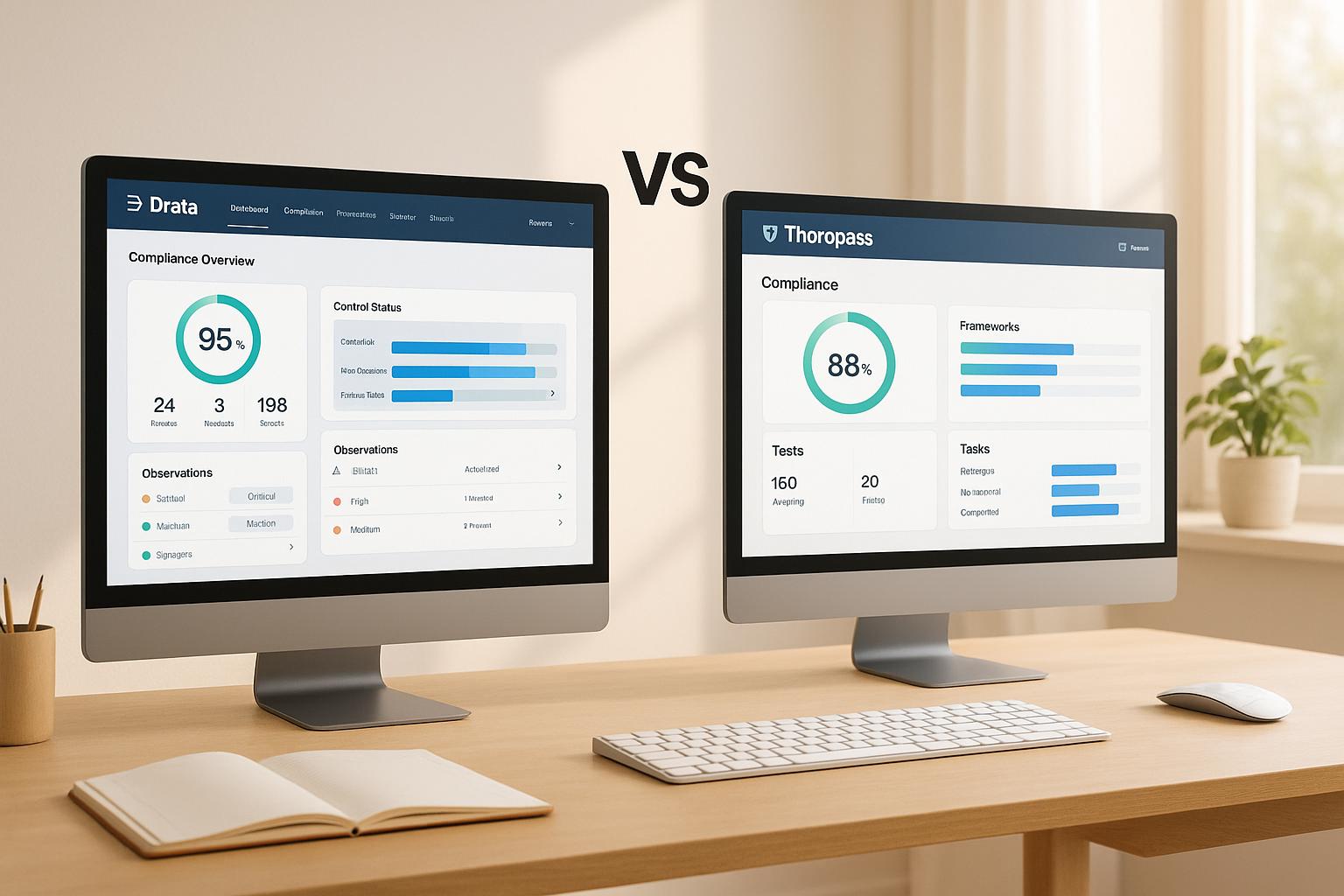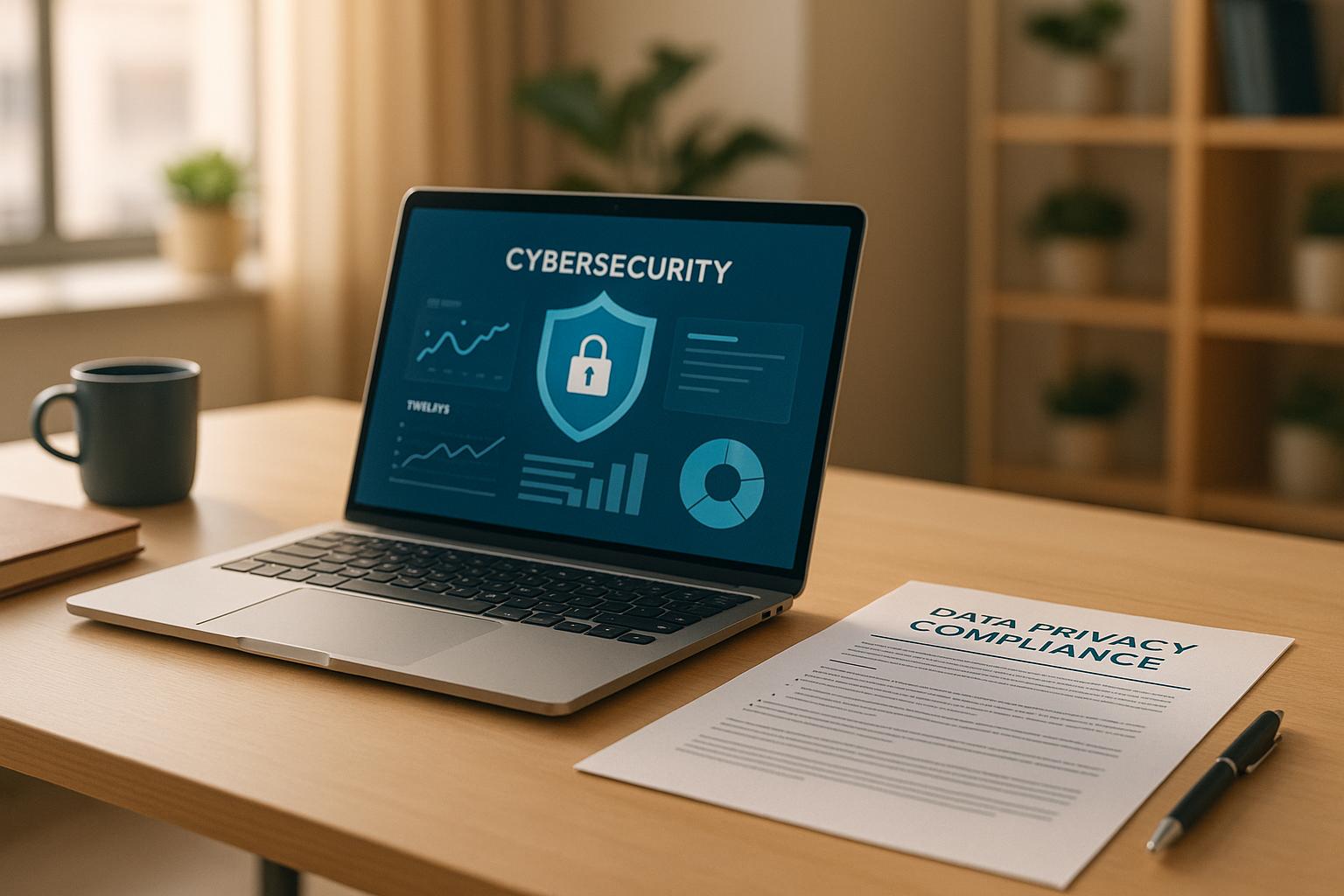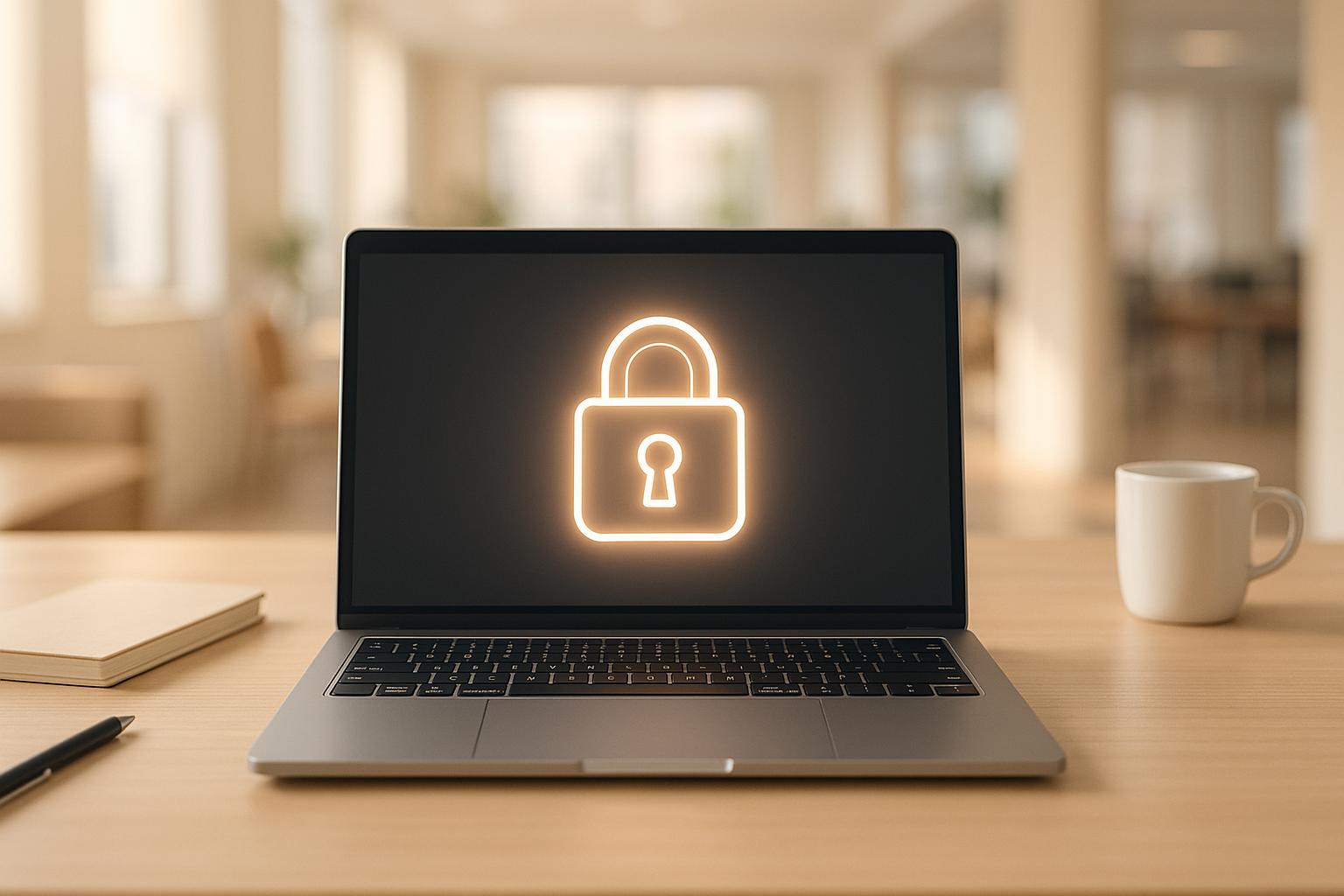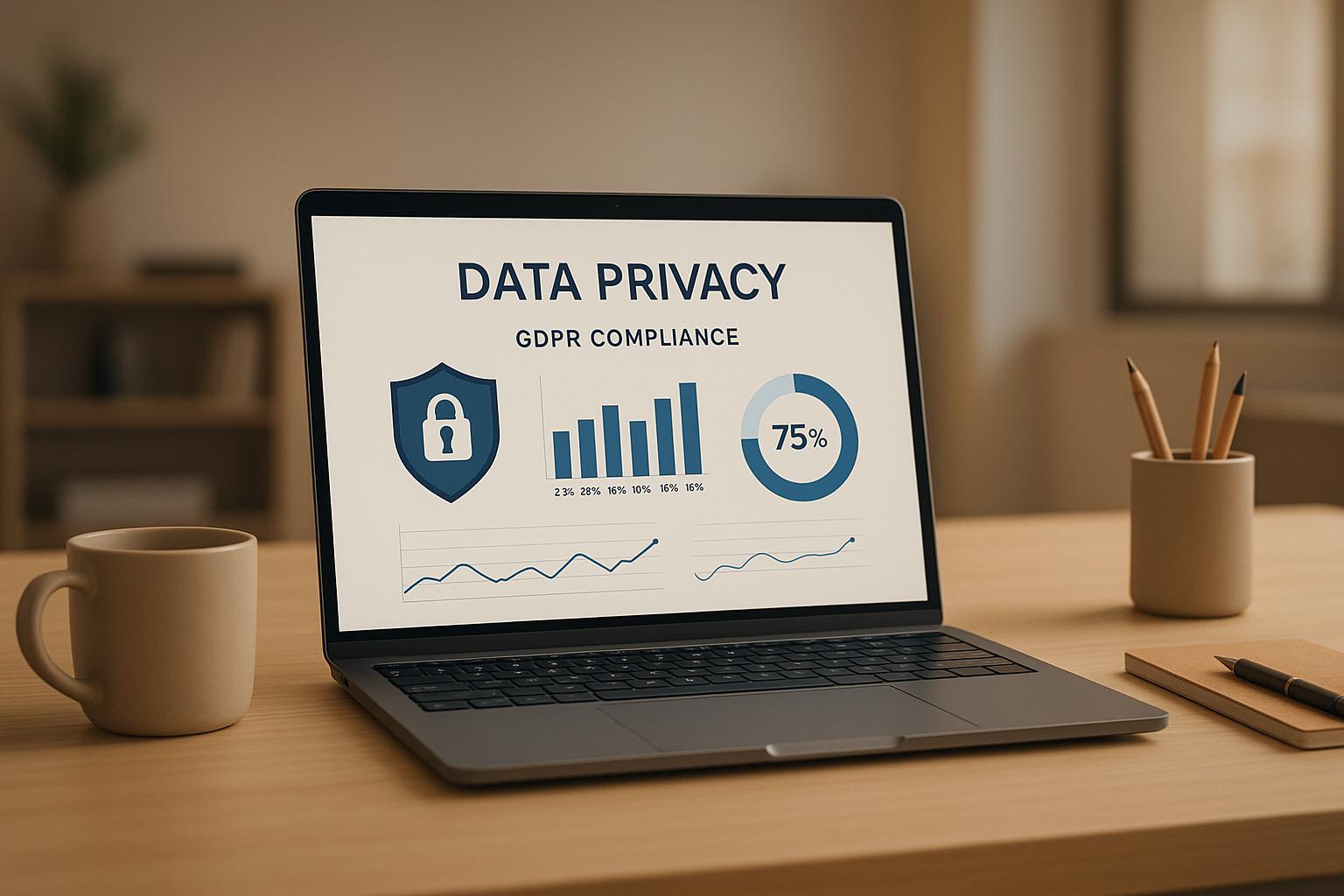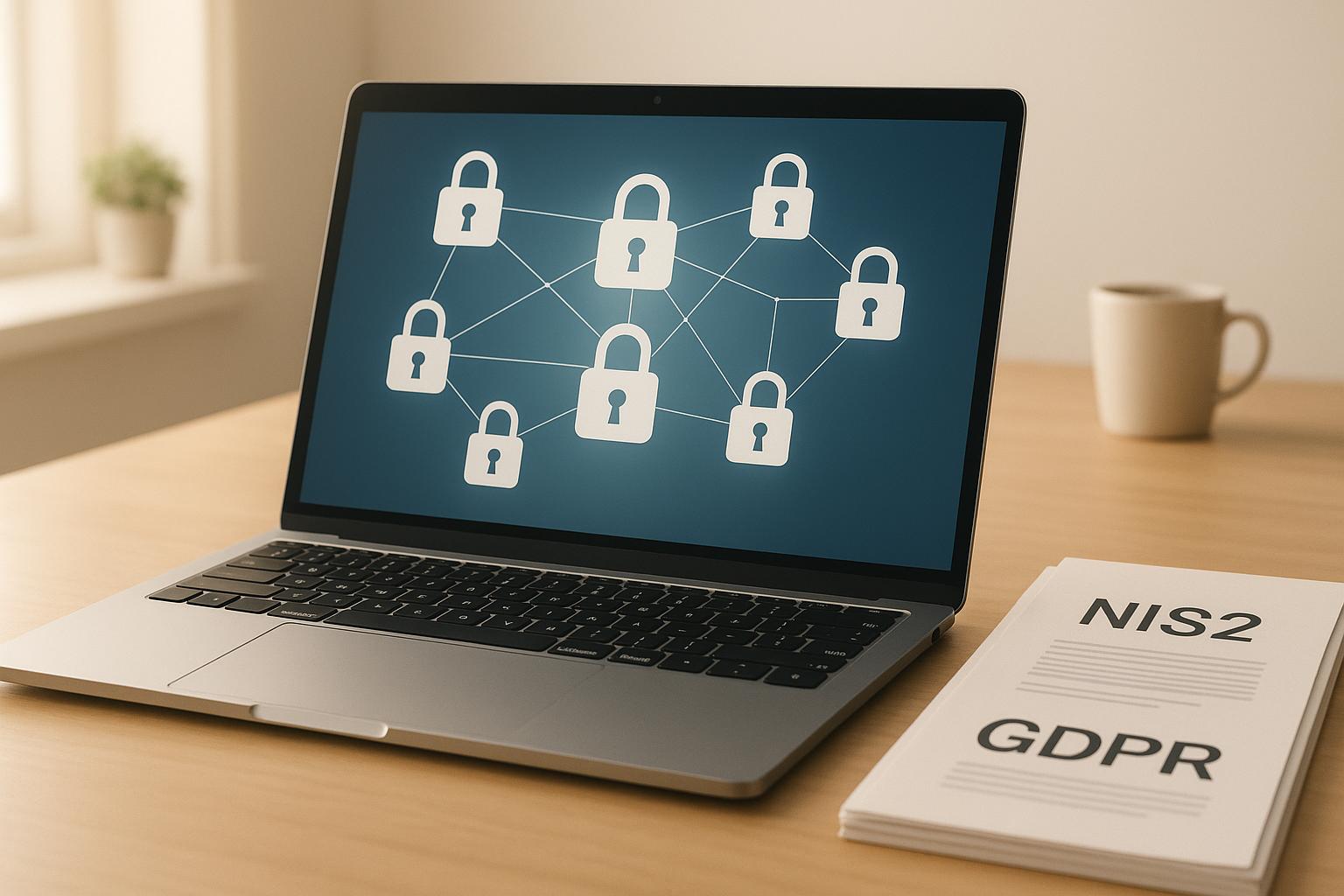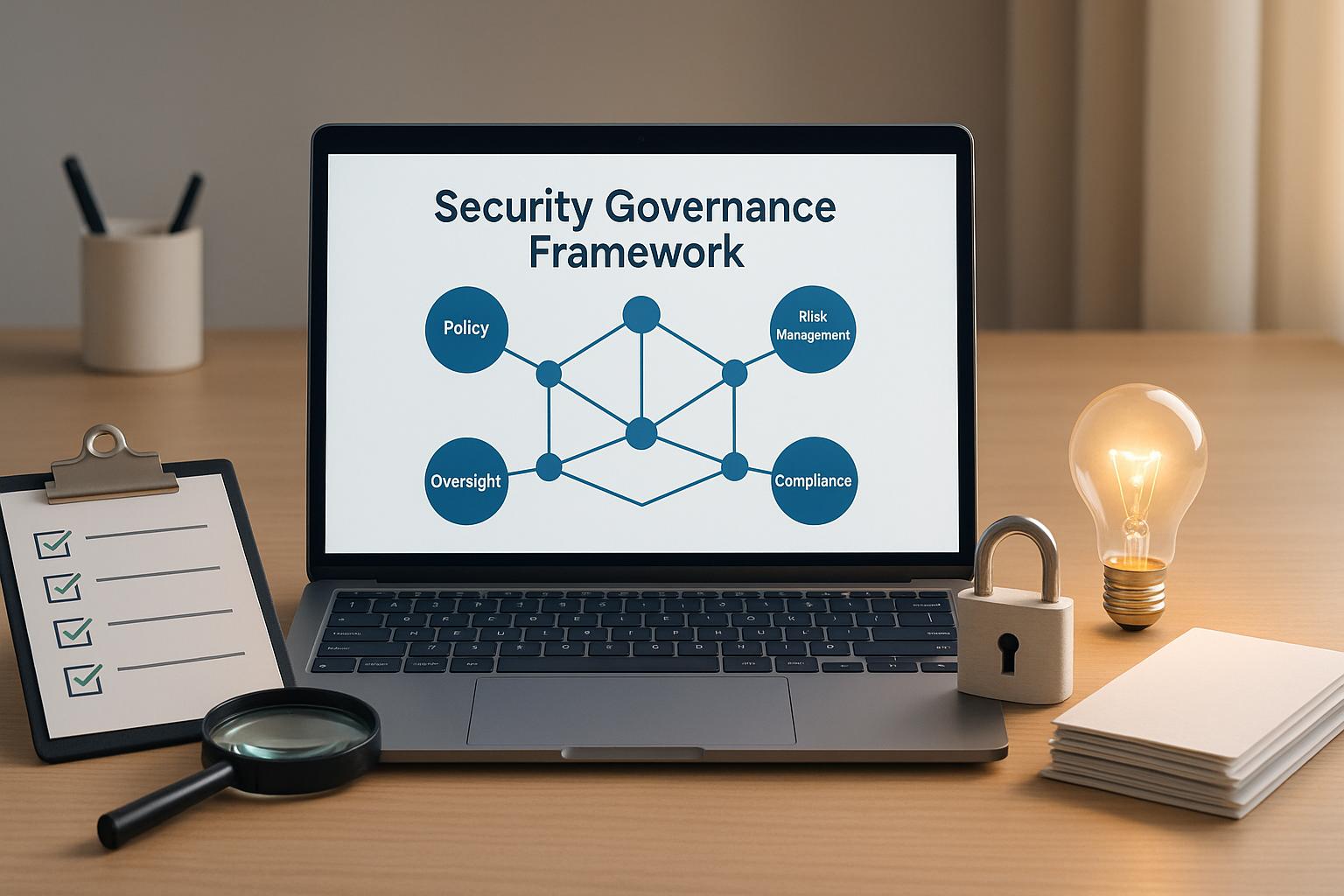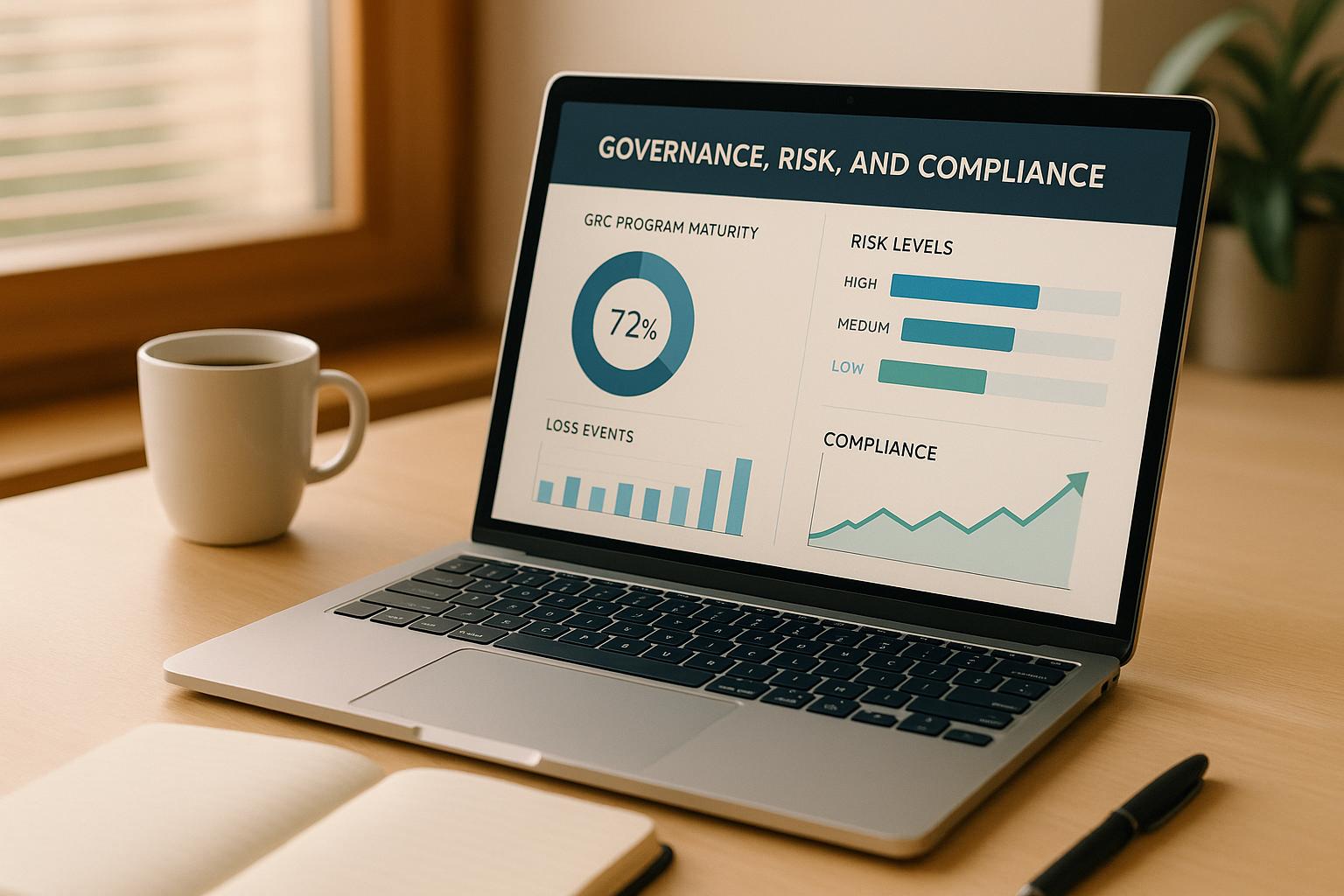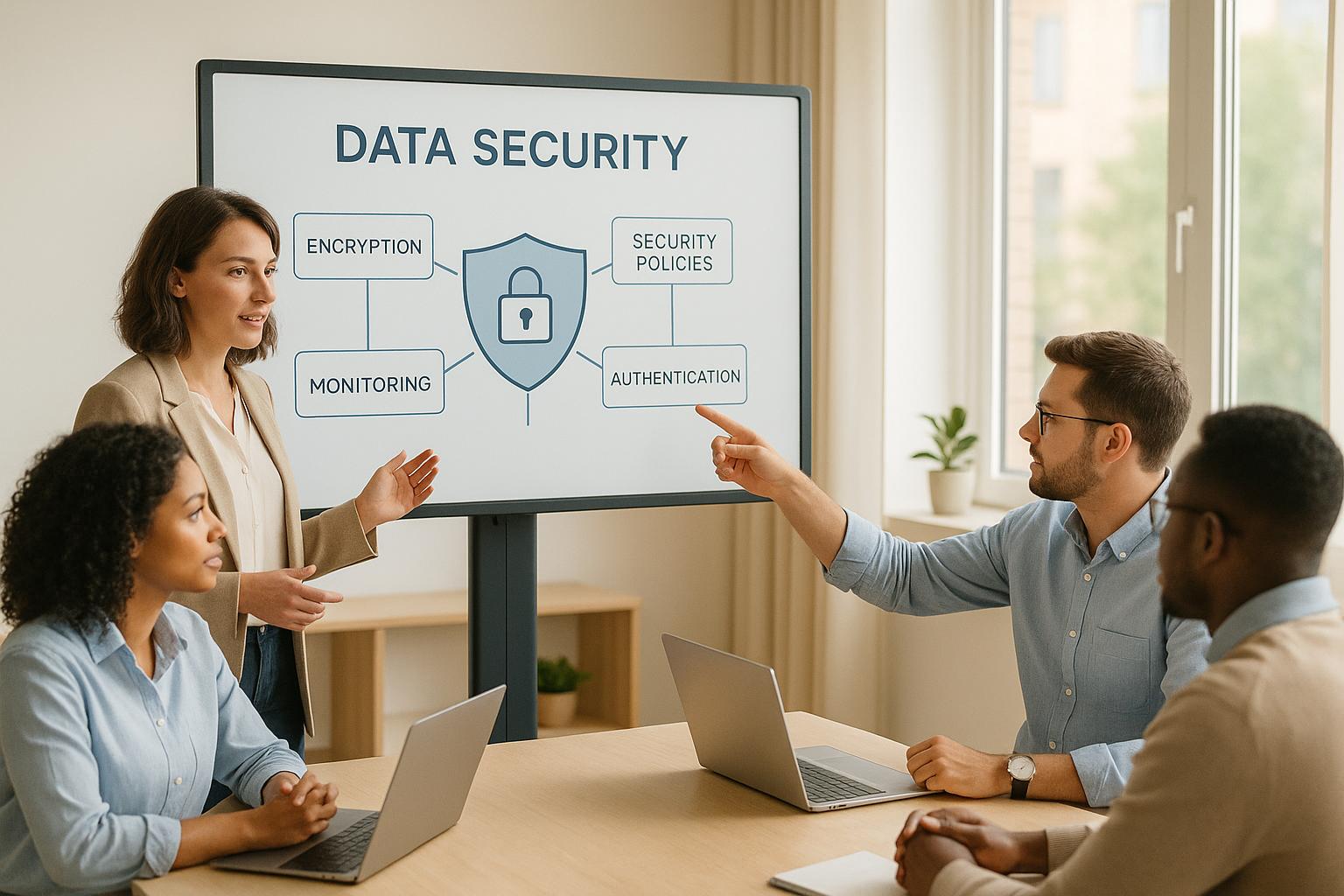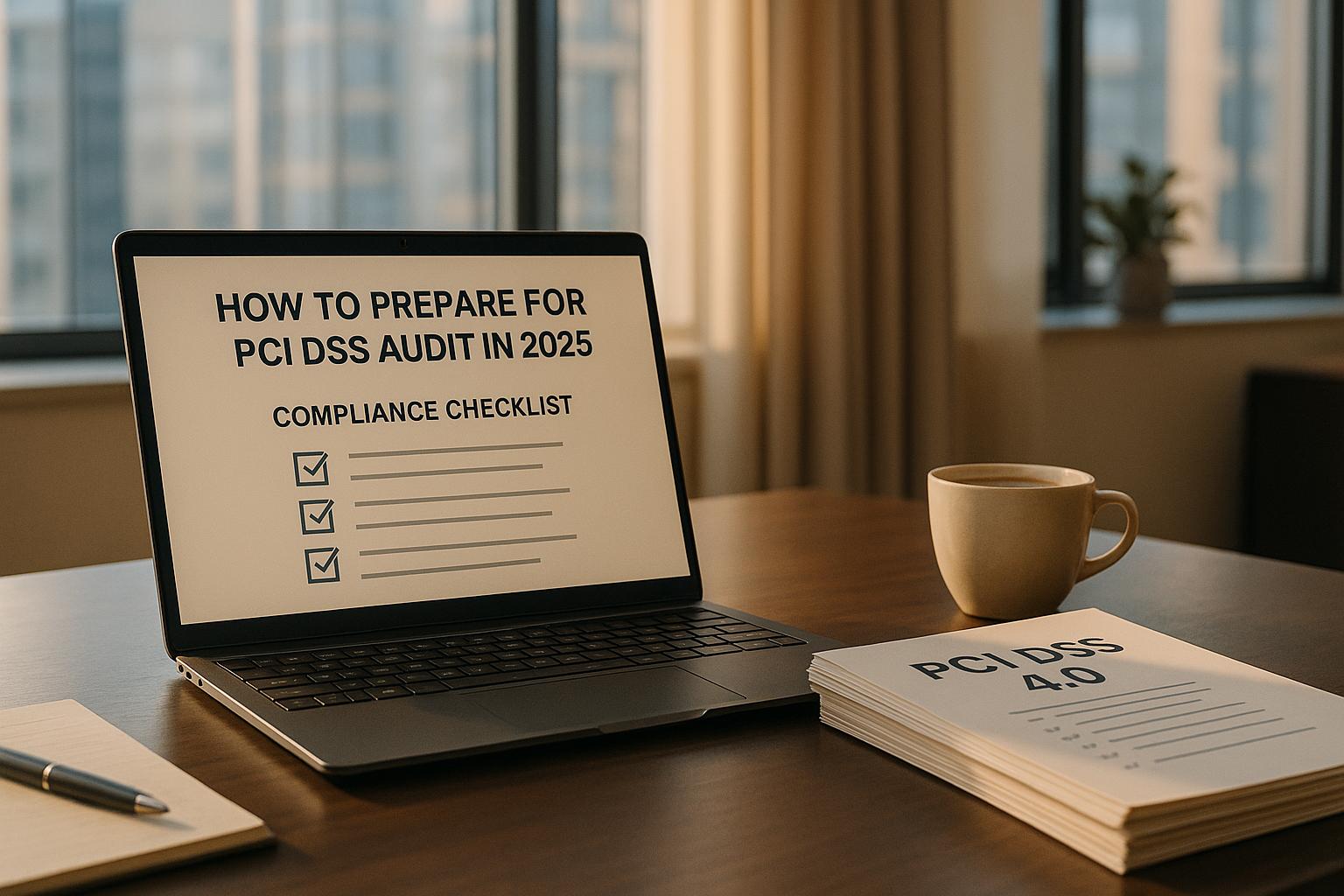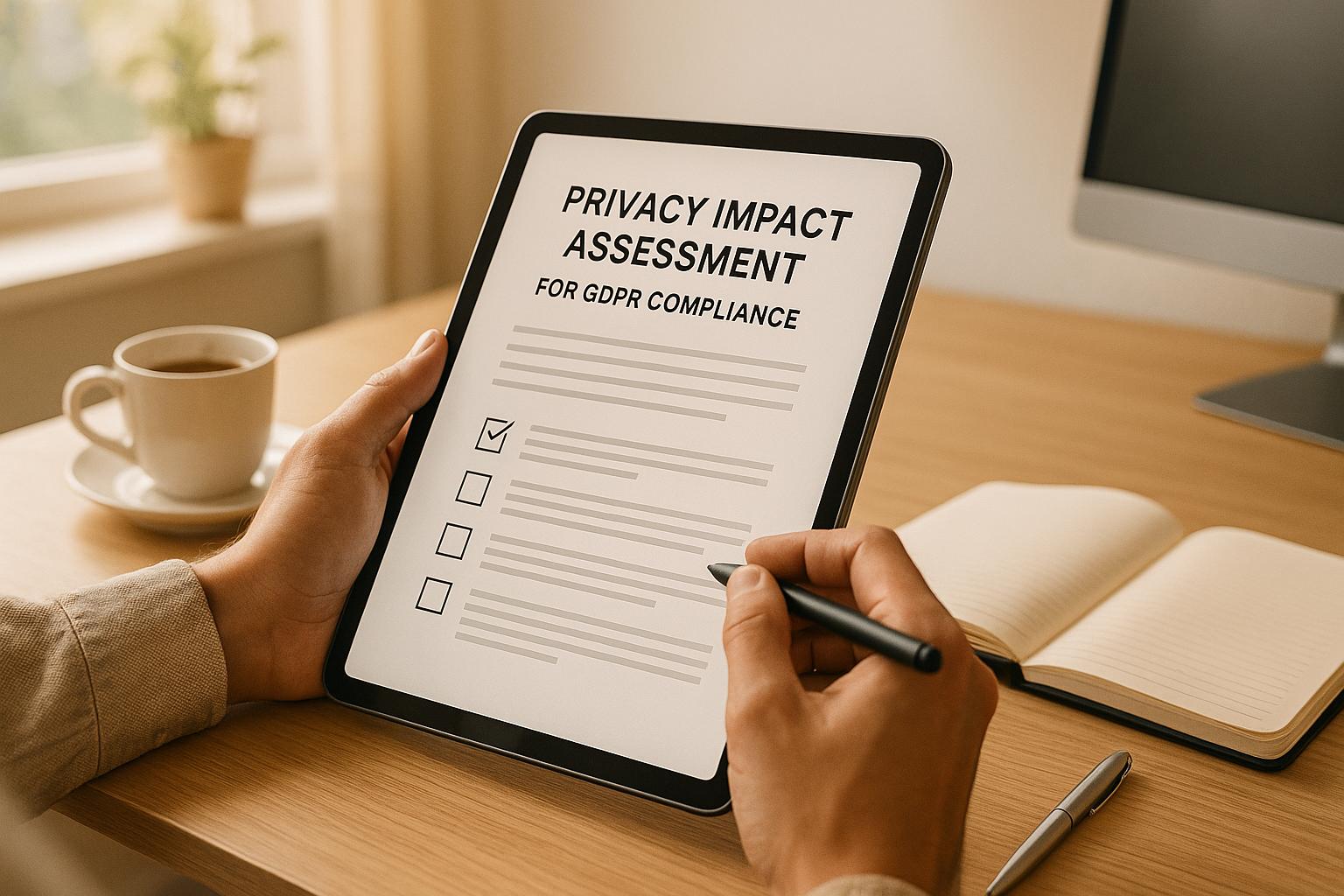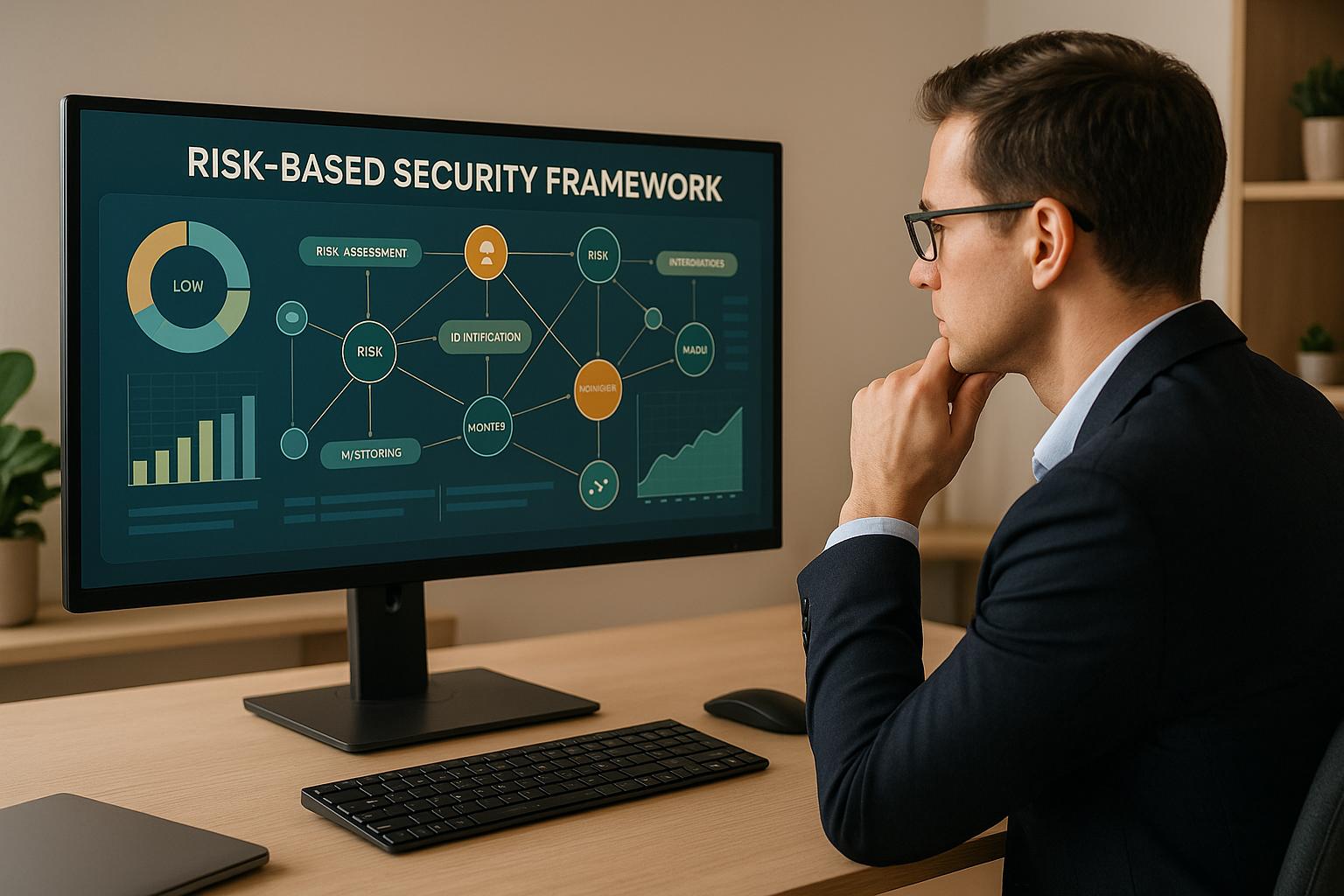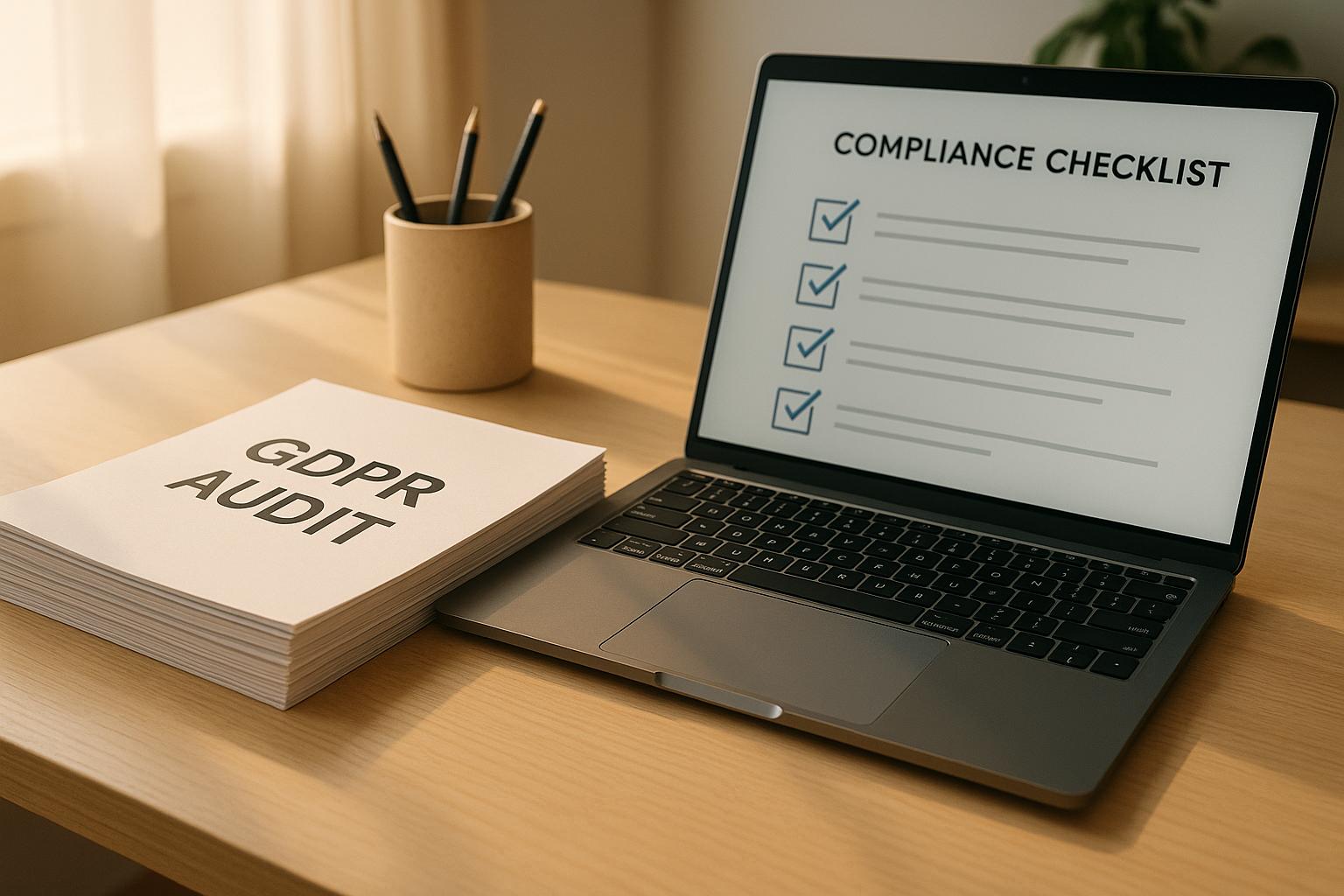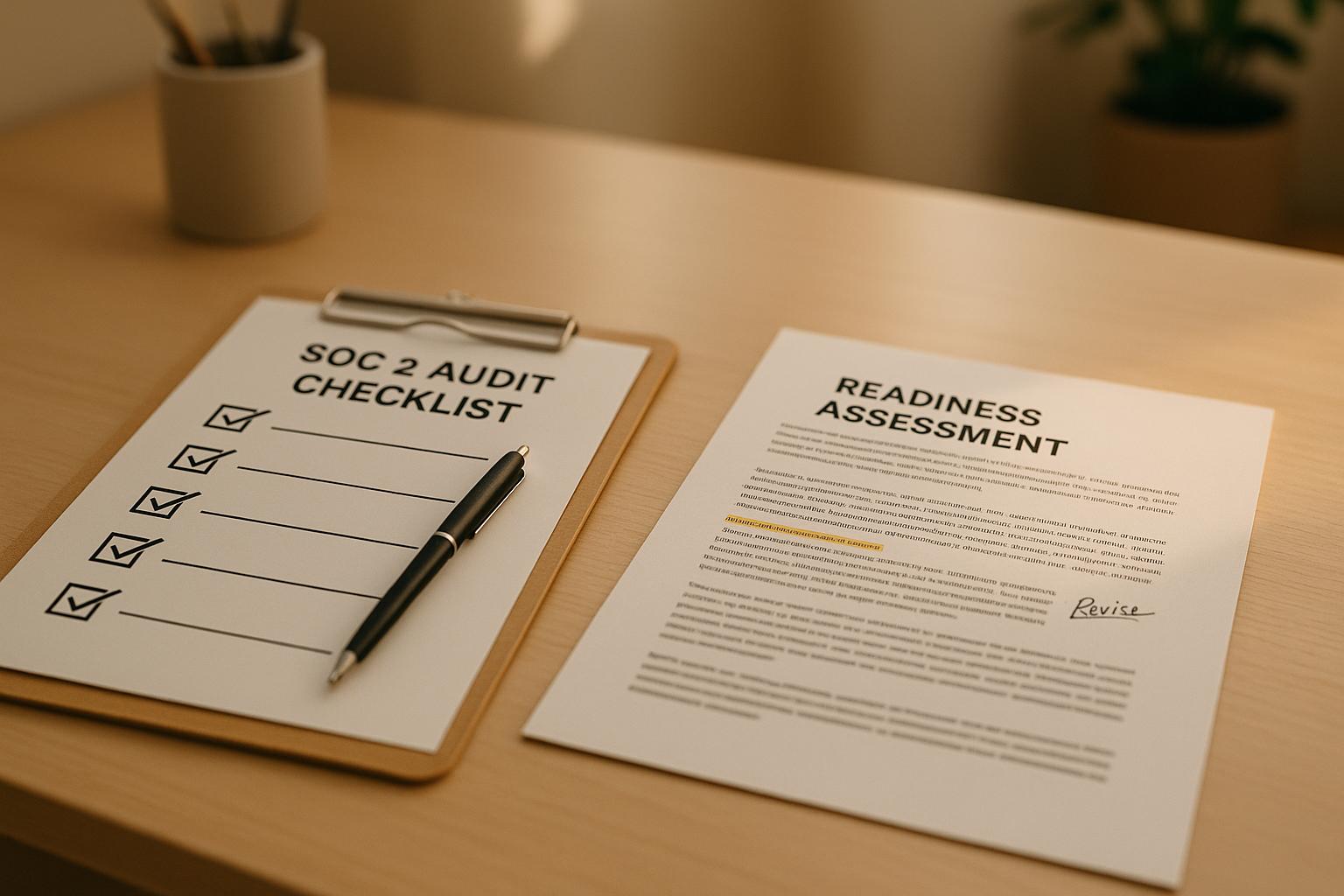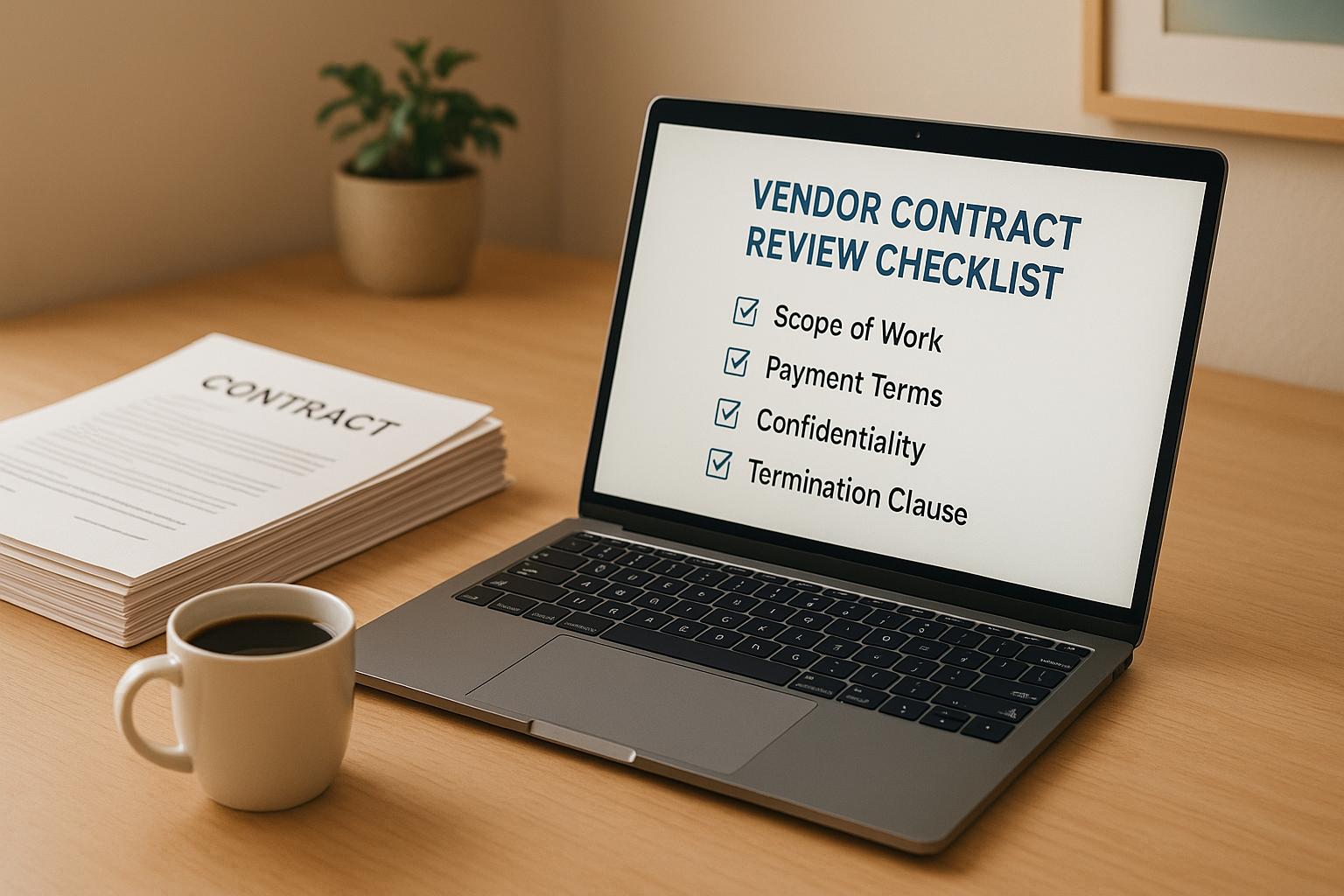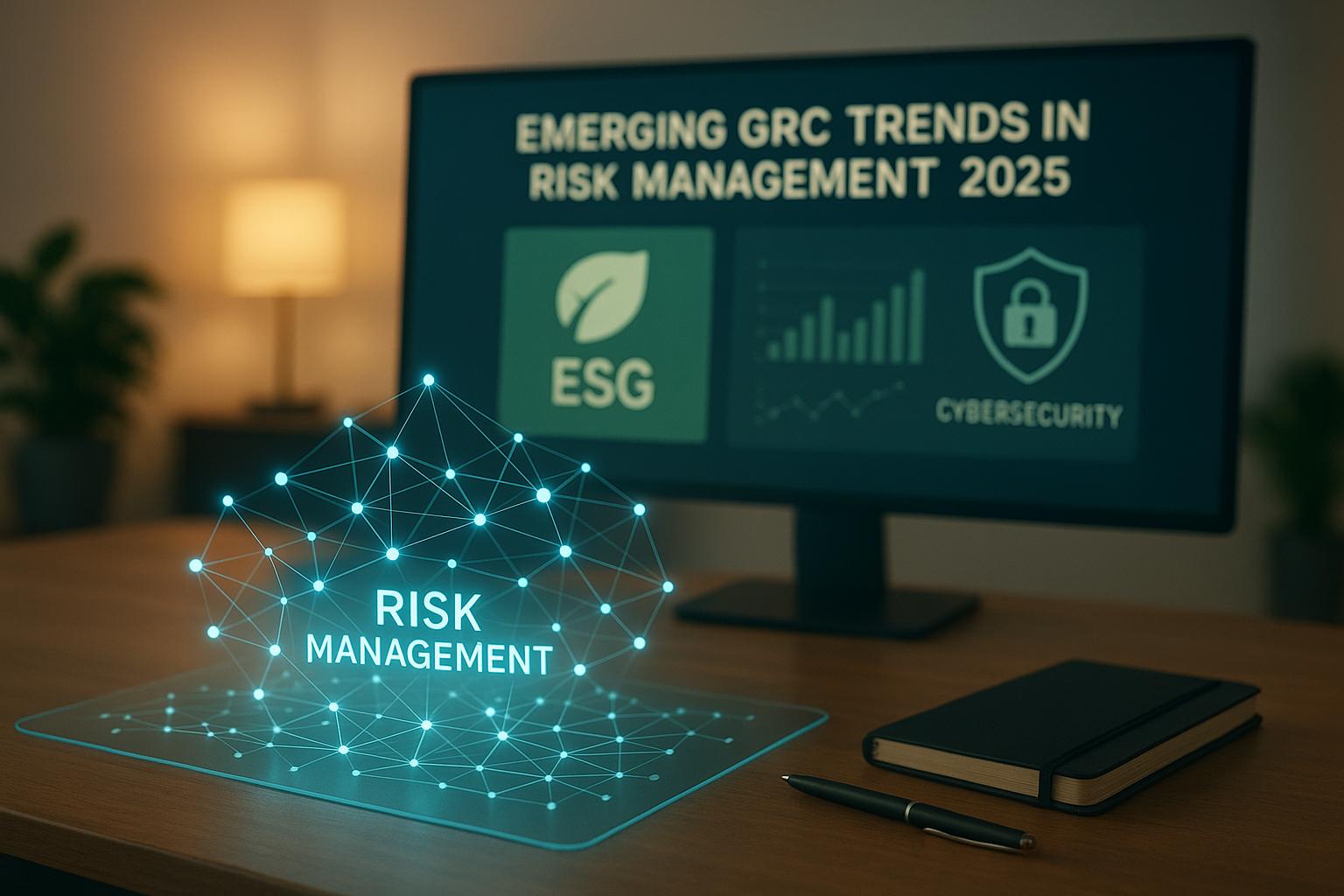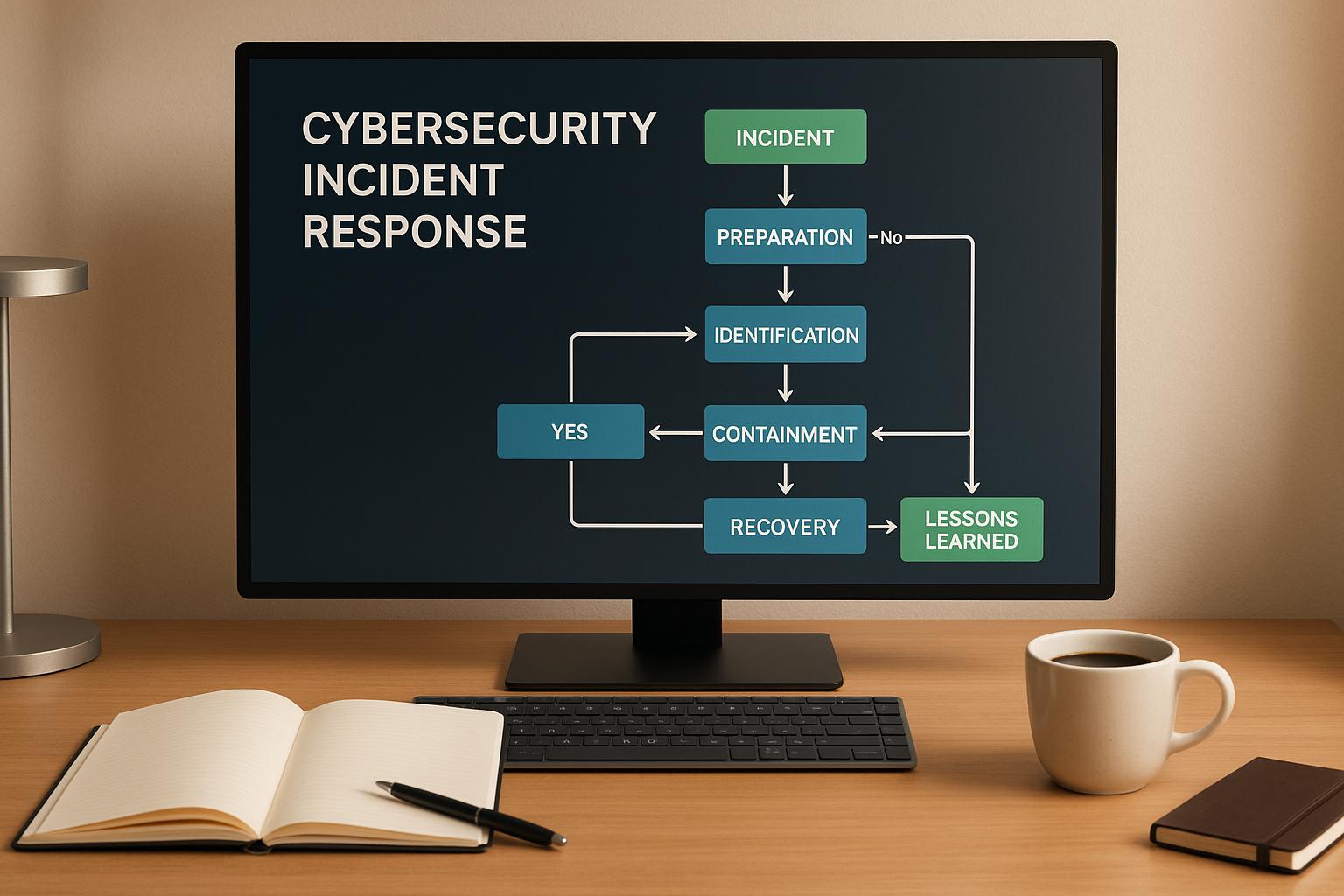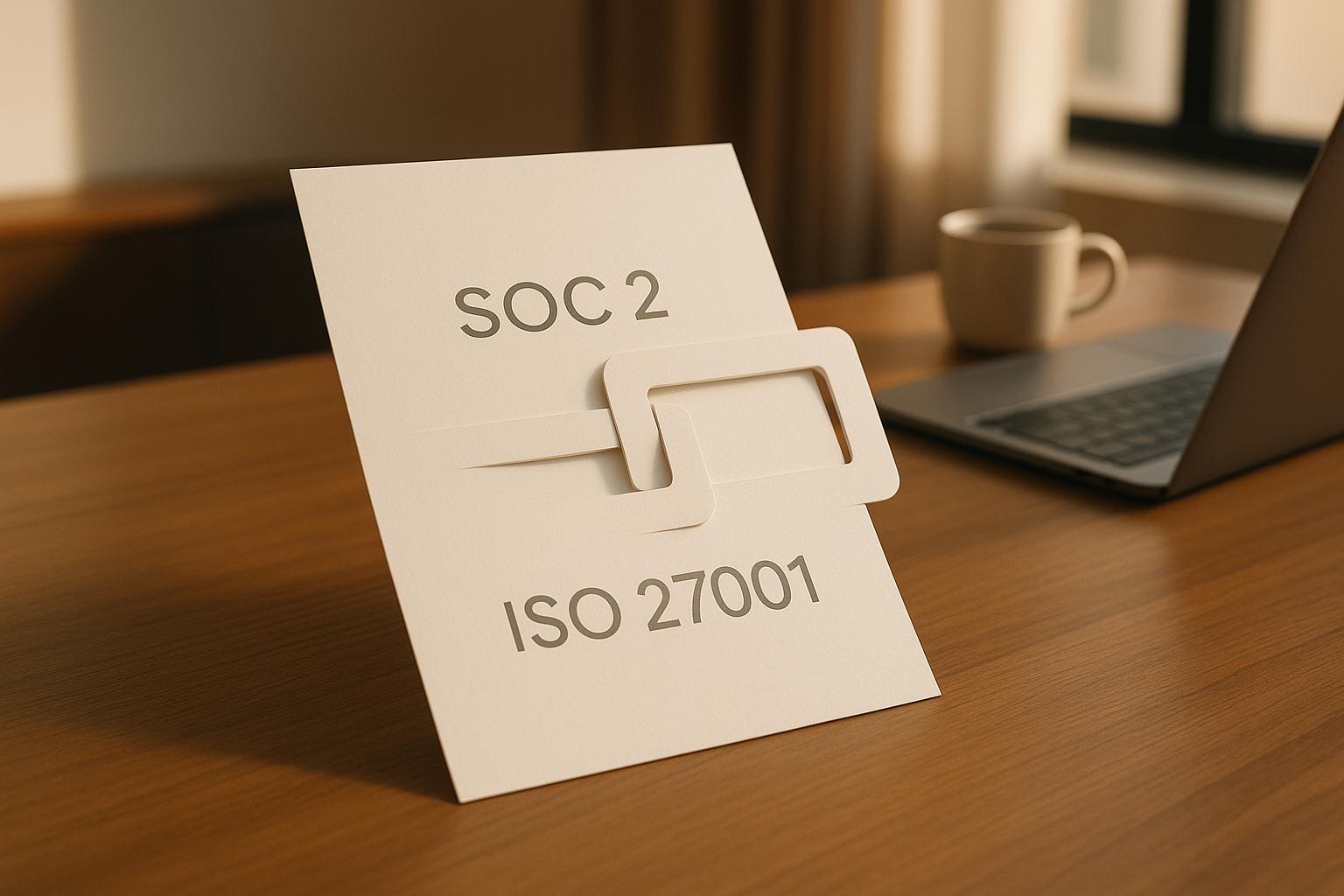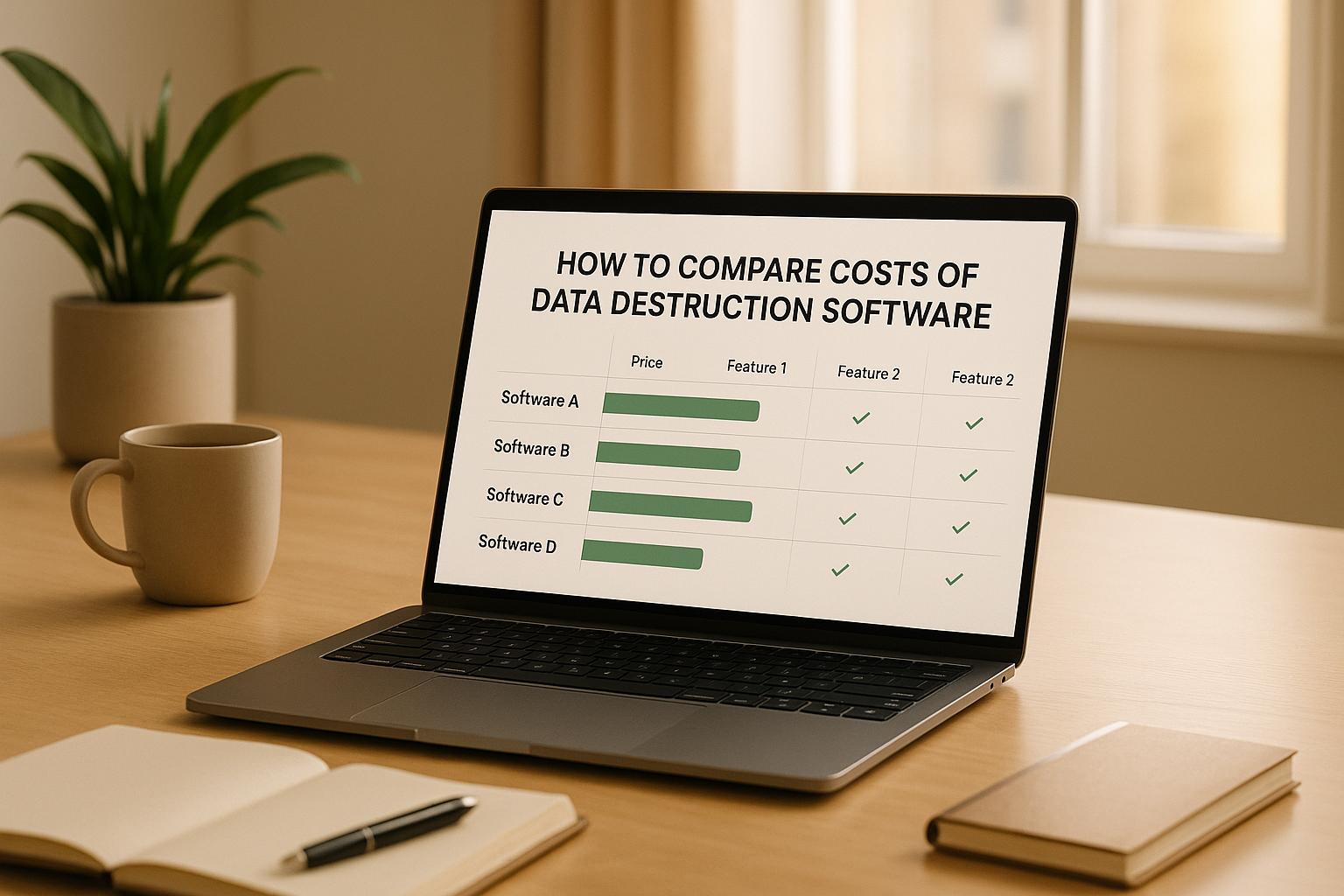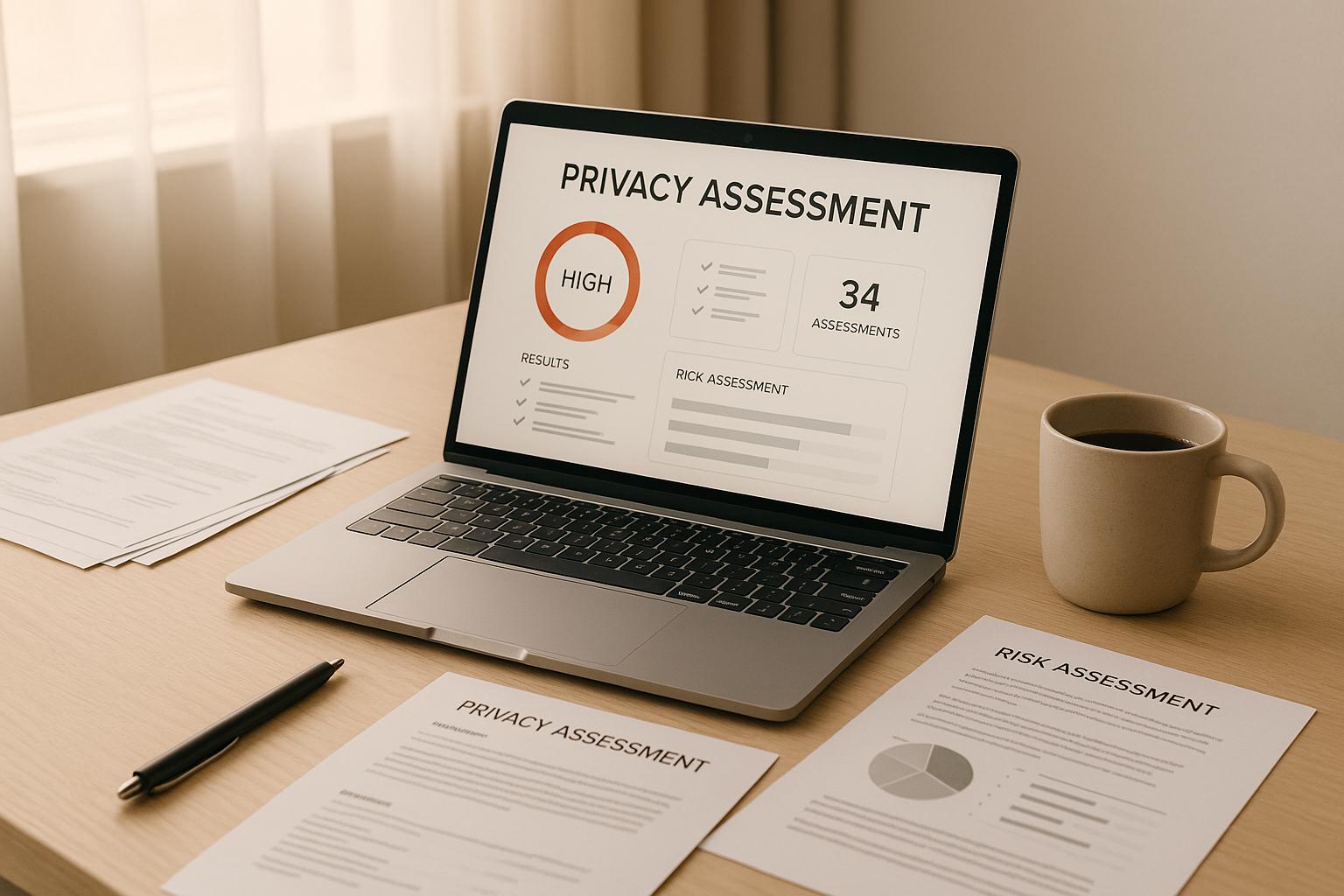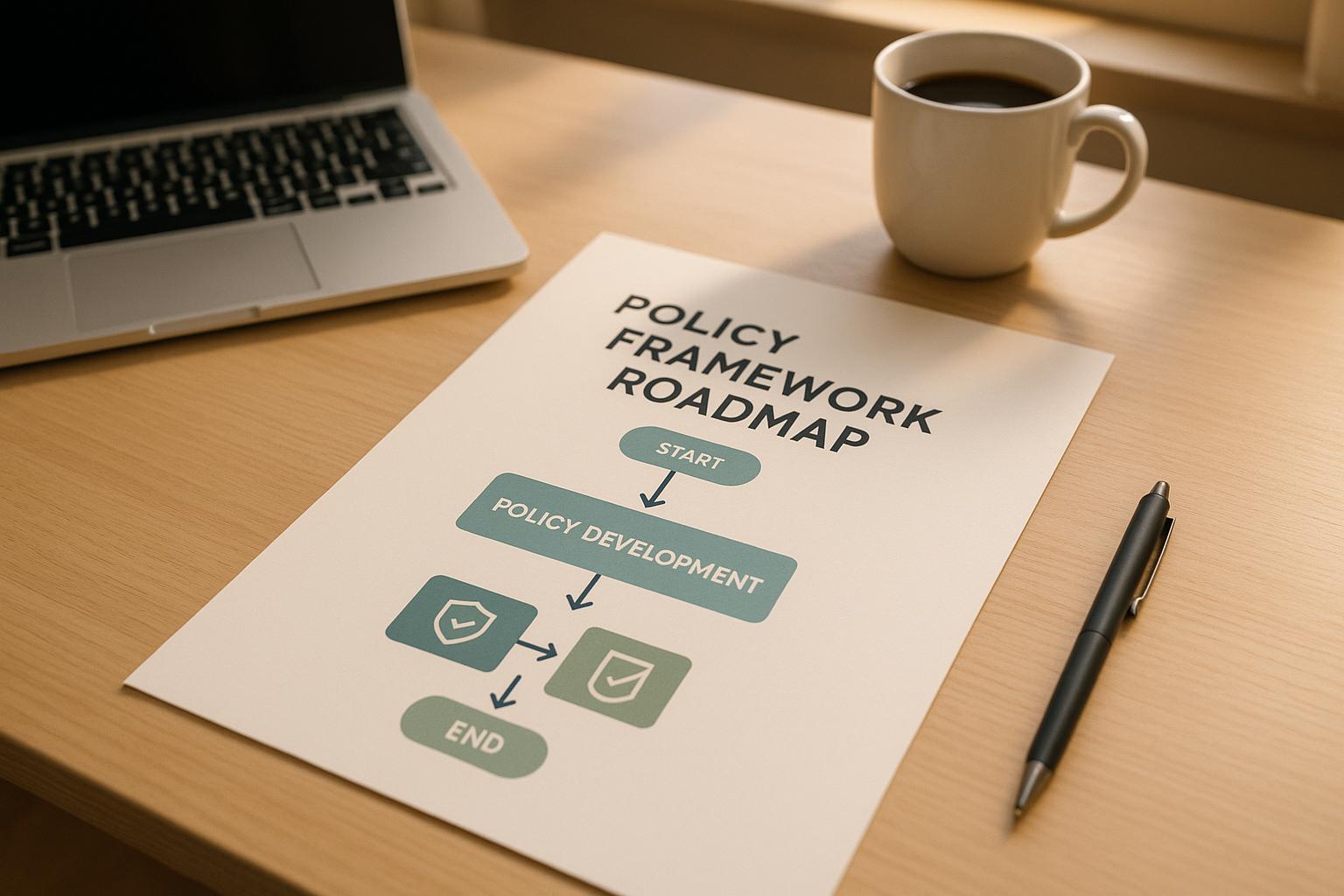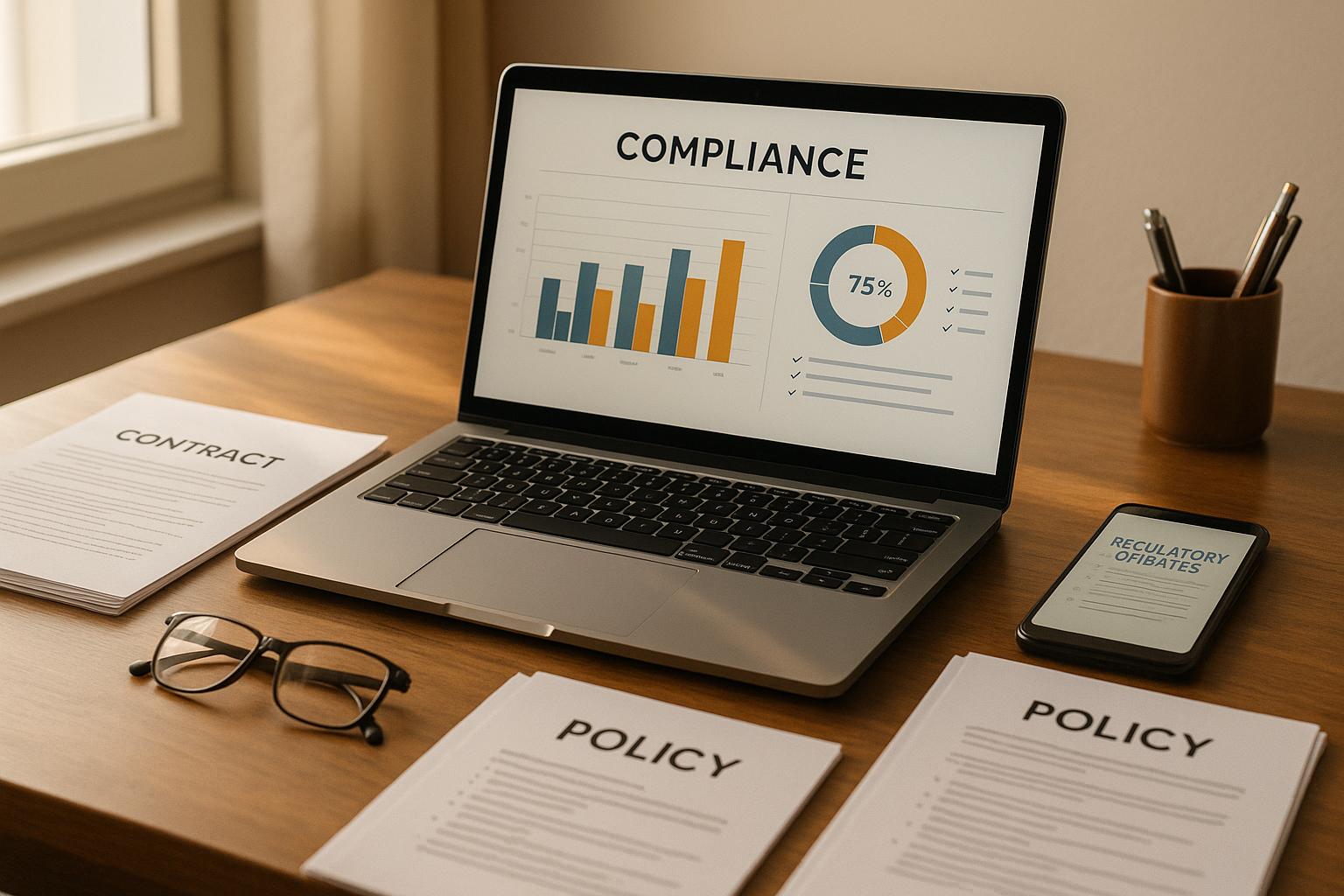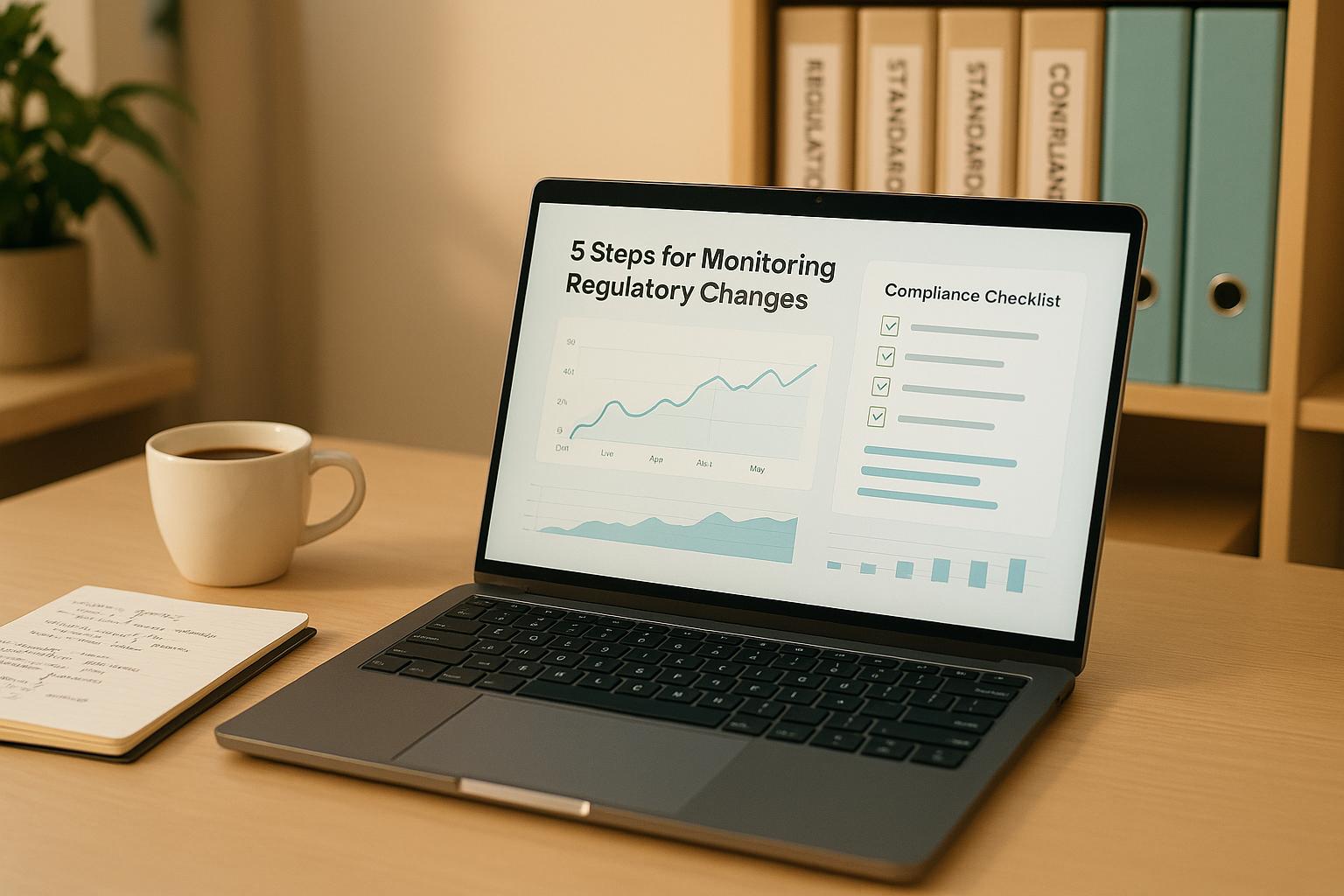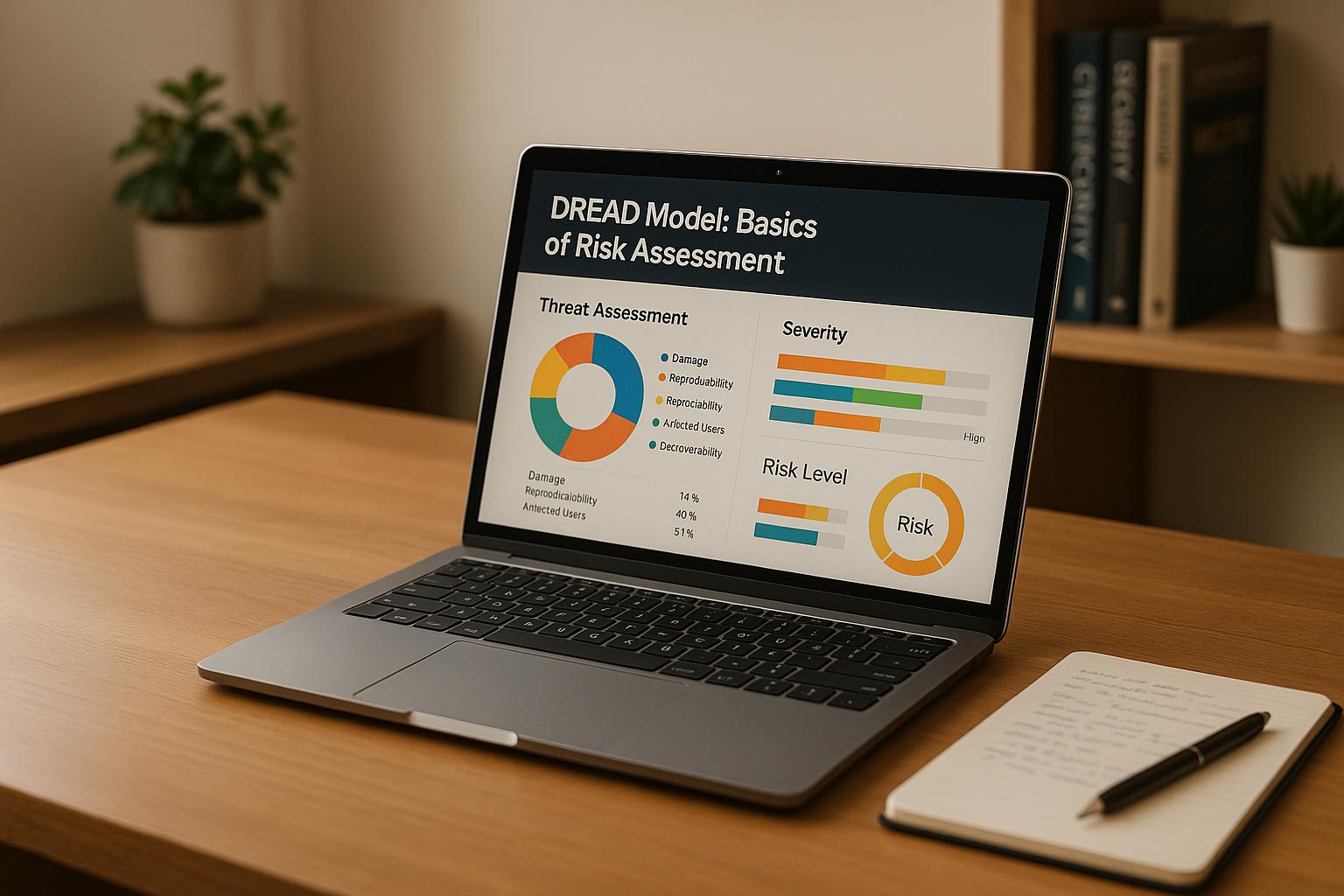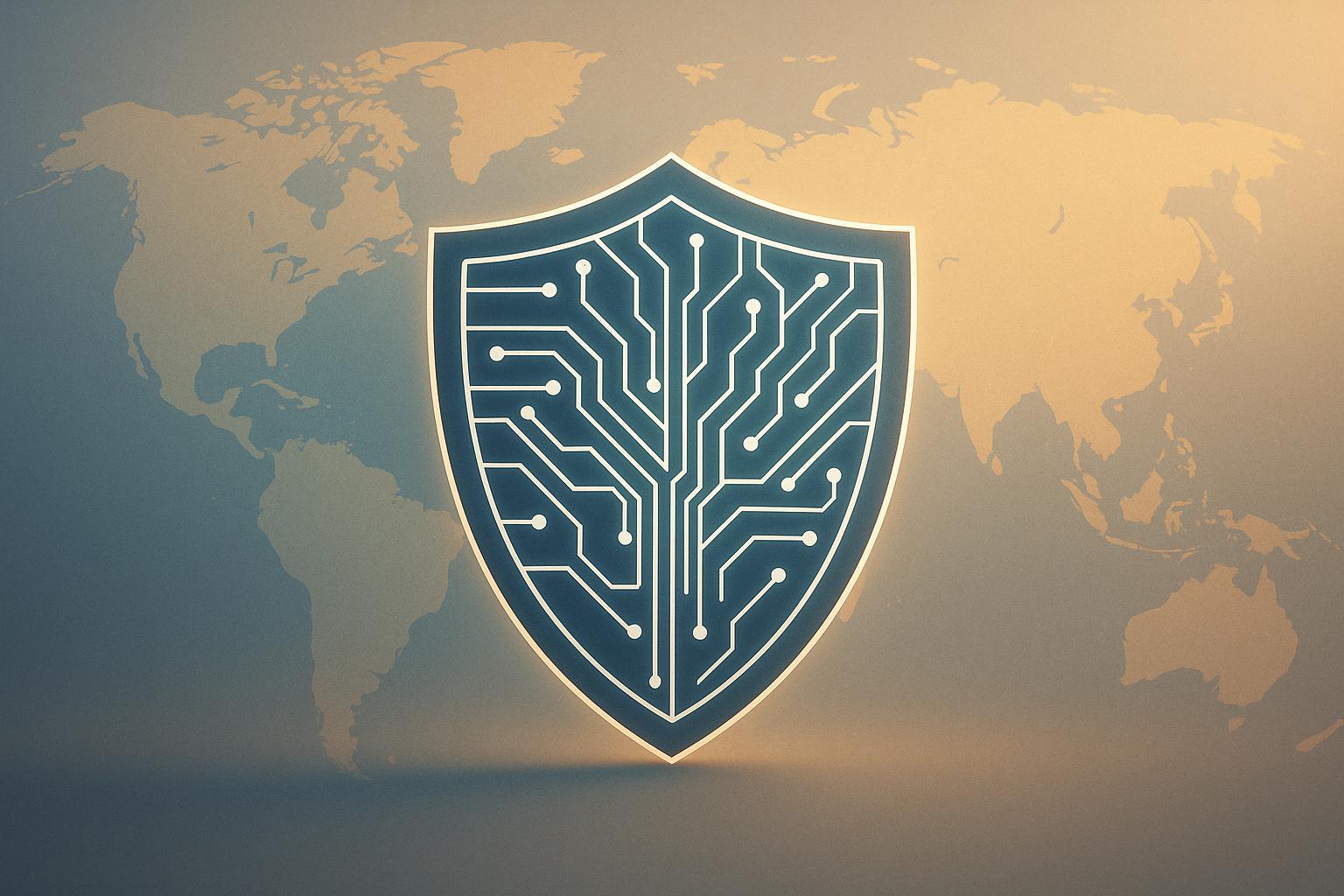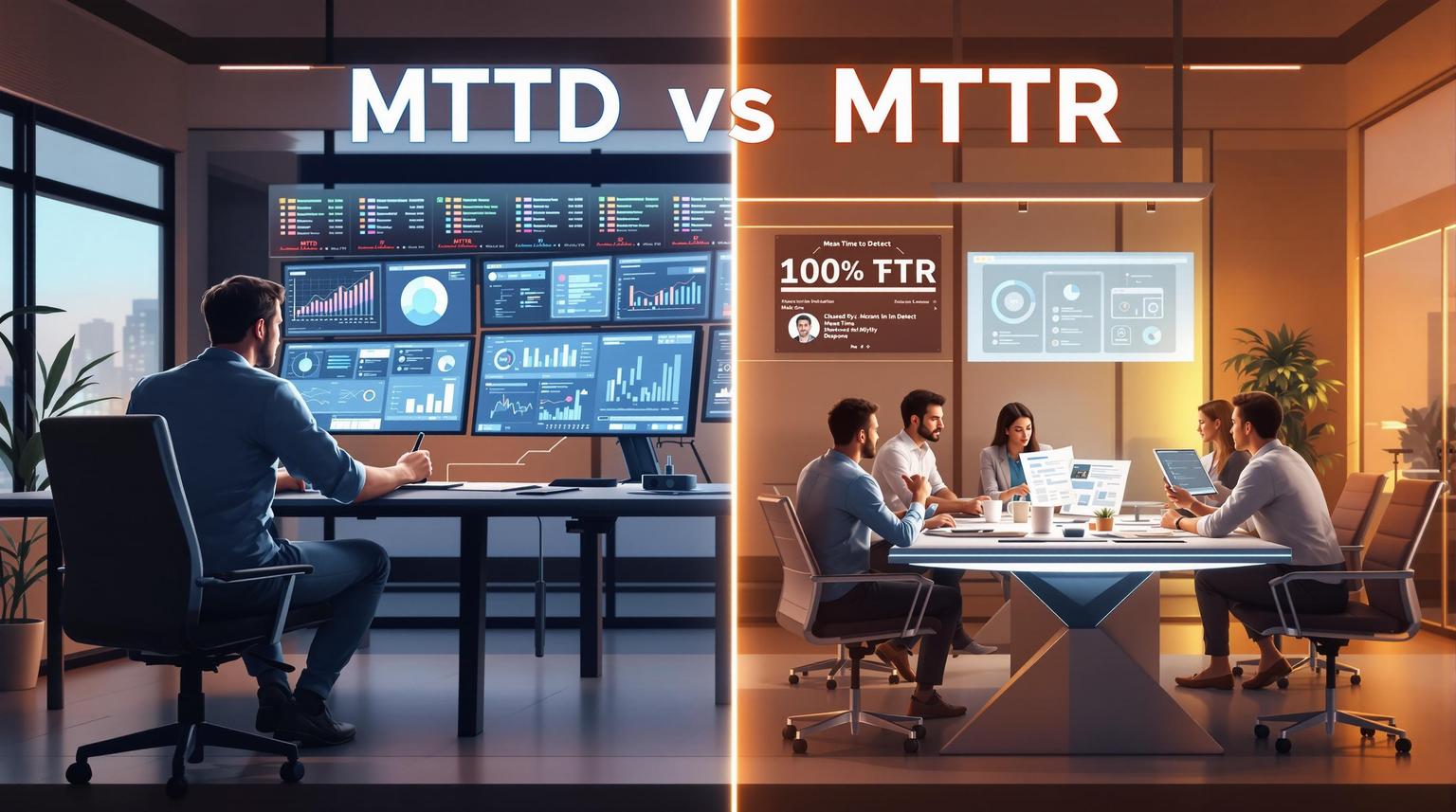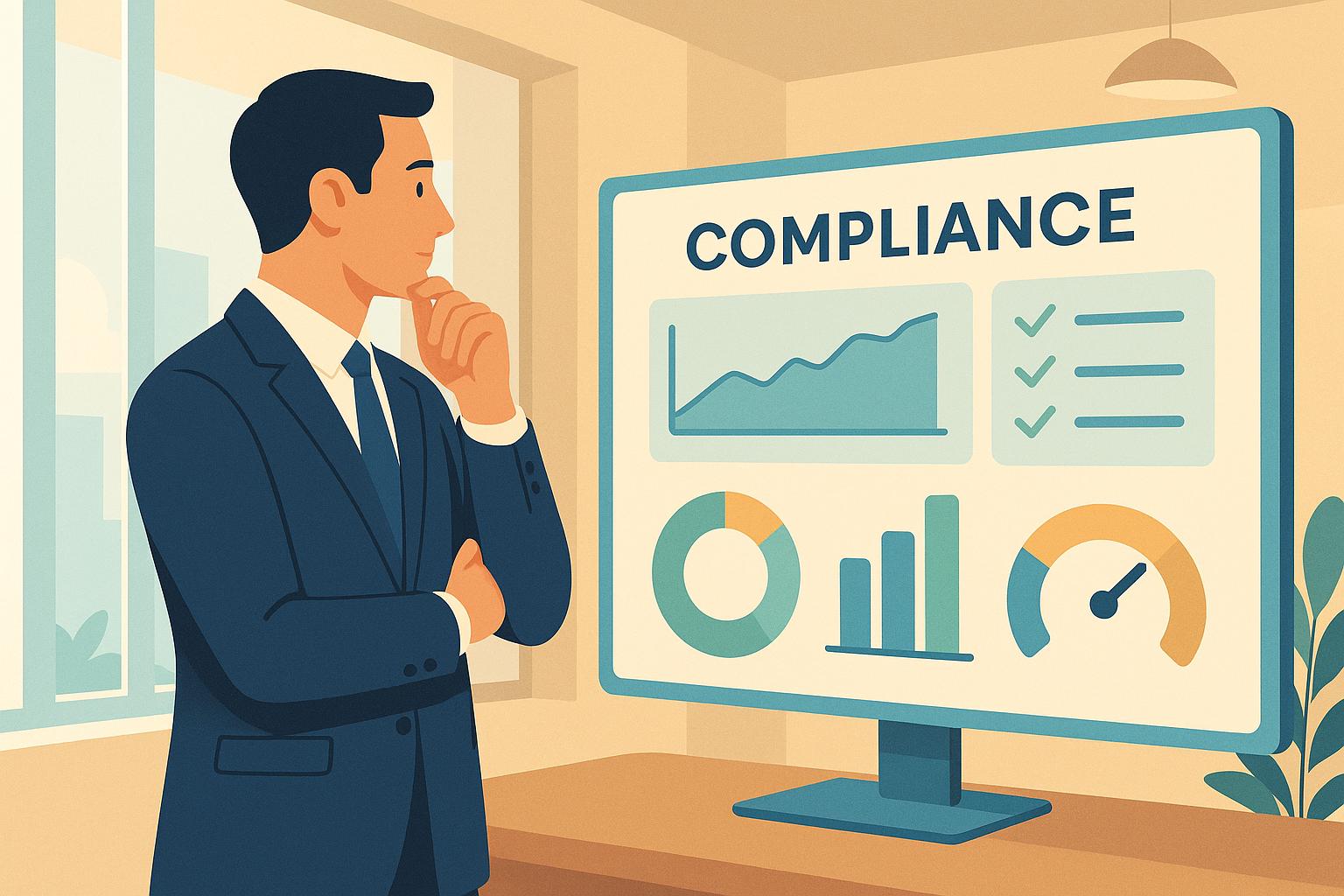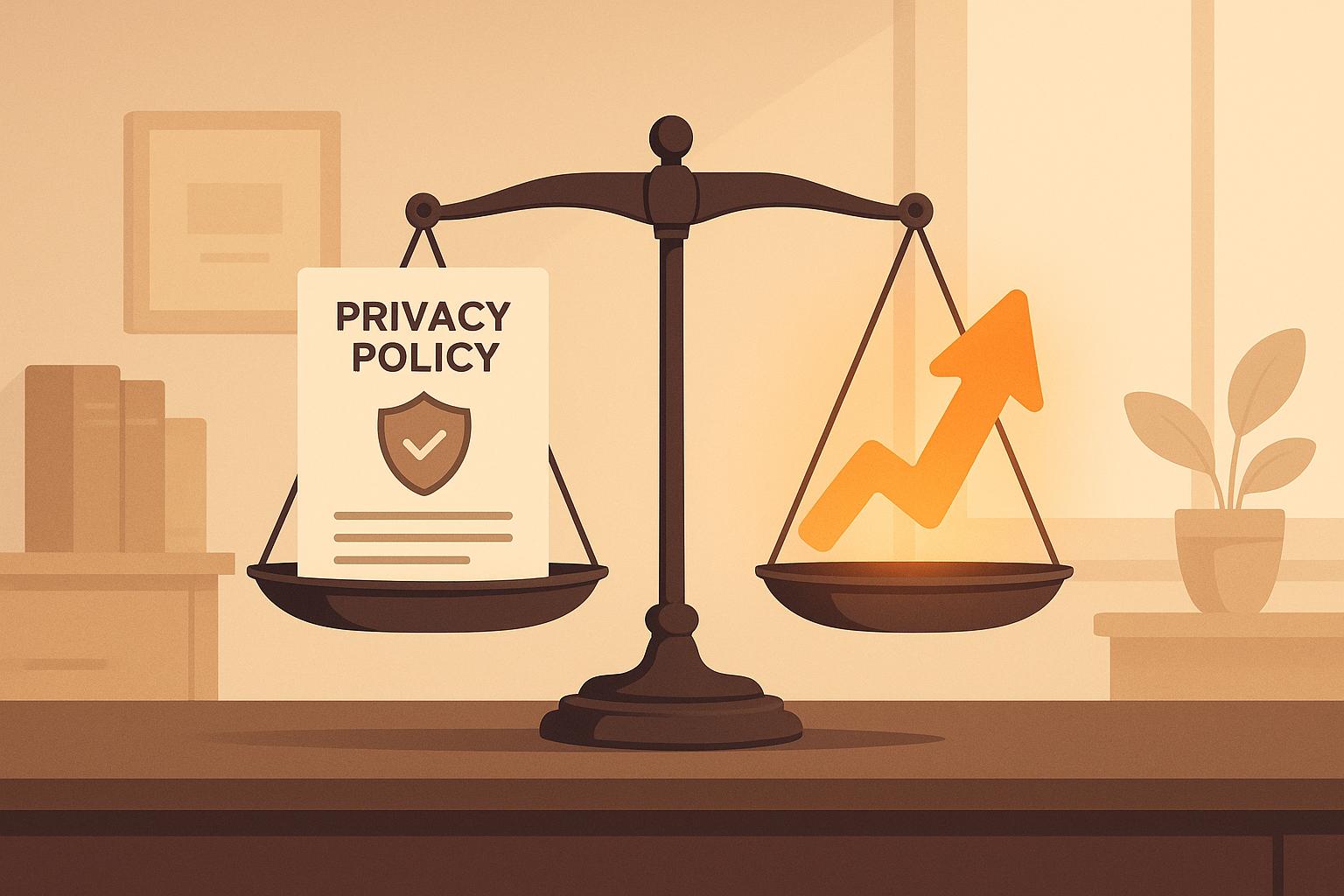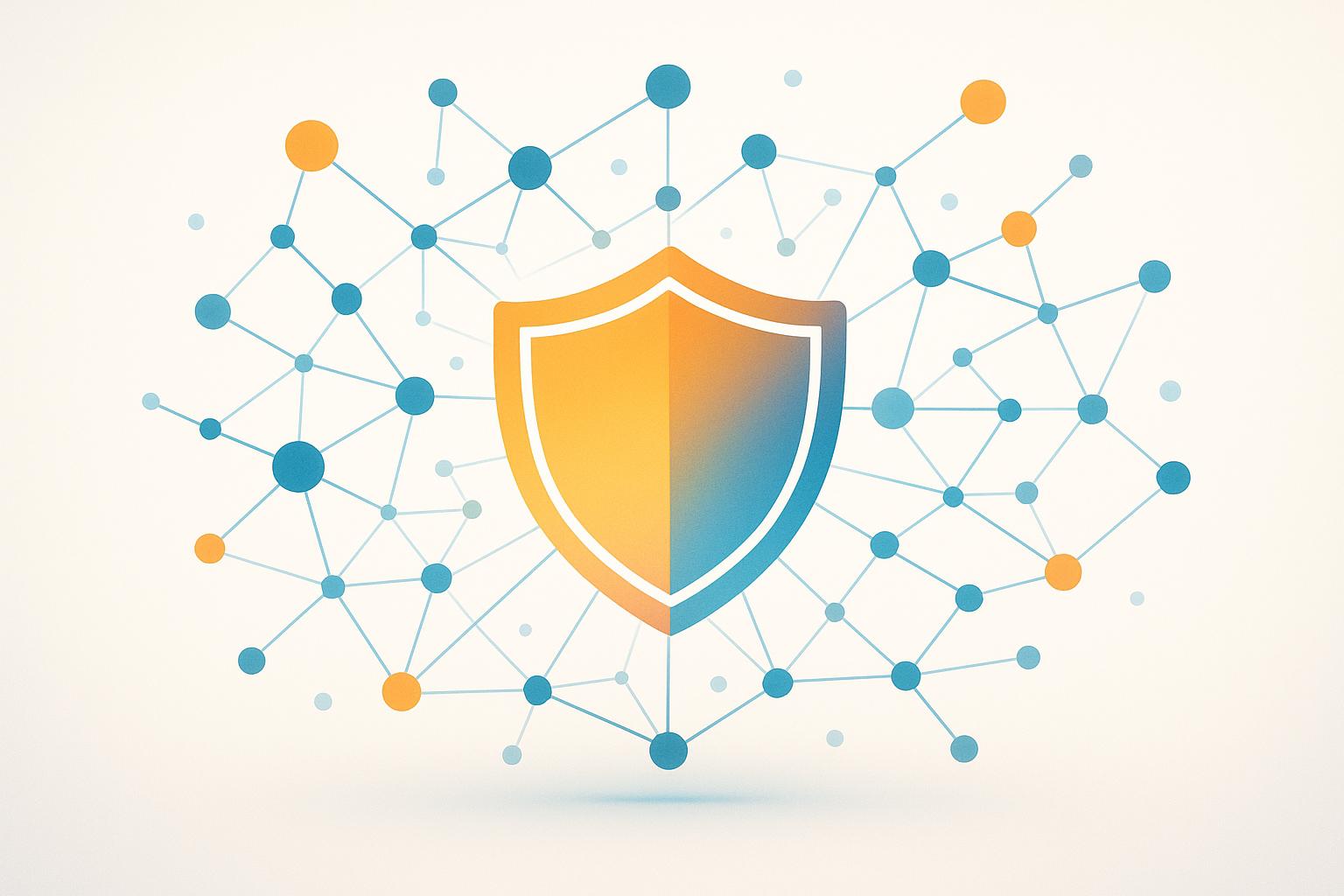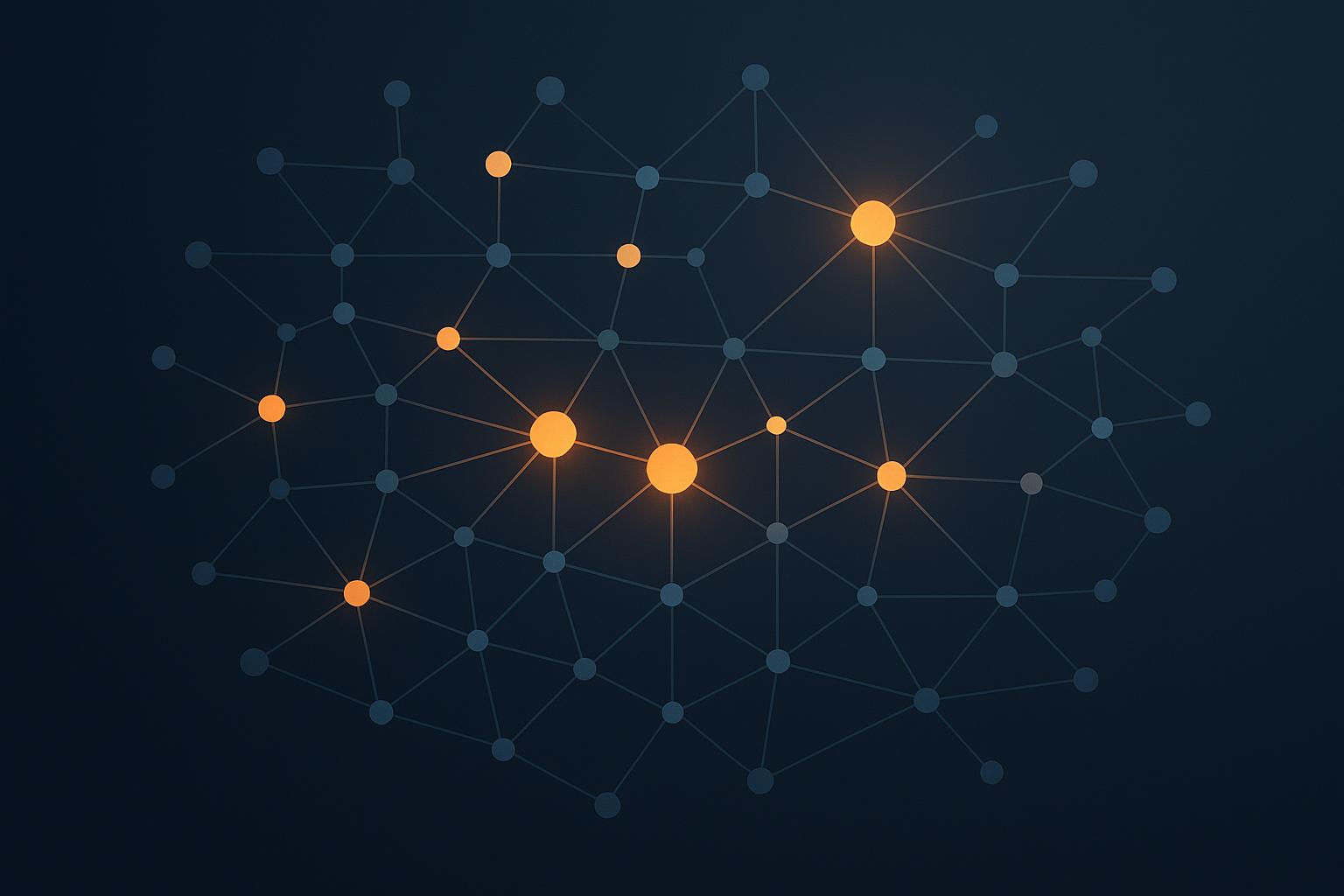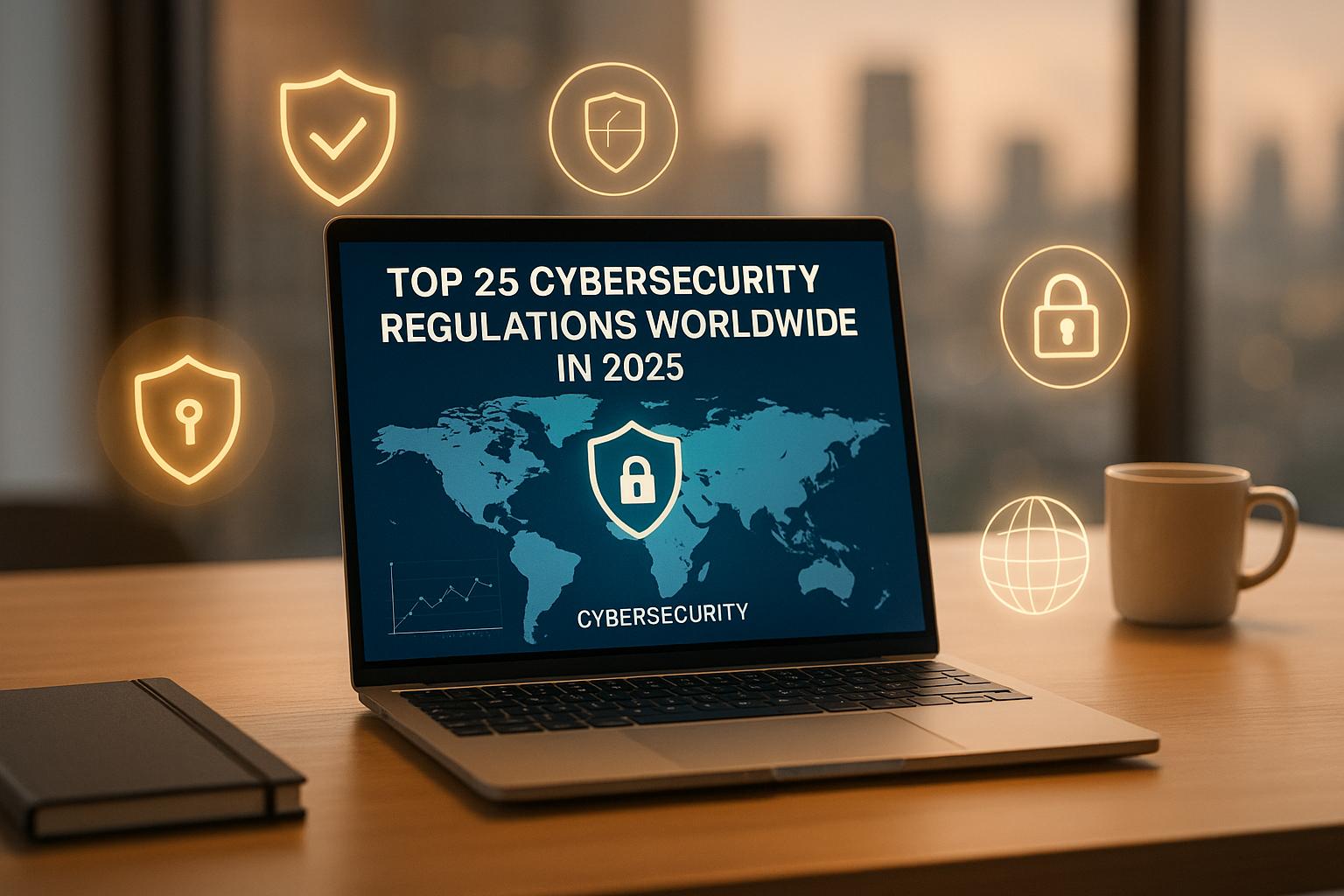
Cybersecurity regulations in 2025 are stricter than ever, driven by the rise of AI-driven attacks, quantum threats, and increasing data breaches. Compliance is no longer optional - failing to meet standards can cost millions in fines and operational disruptions. Here's a quick summary of the article:
Key Highlights:
- Global Threats: Over 30,000 vulnerabilities reported last year, with ransomware recovery costing $2.73 million on average.
- Top Regulations: GDPR, California's CCPA/CPRA, EU’s NIS2, Digital Operational Resilience Act (DORA), and NIST CSF lead the global compliance landscape.
- Emerging Focus Areas: AI governance, cloud security, and third-party risk management are now critical regulatory priorities.
- Penalties: GDPR fines can hit €20M or 4% of global revenue; CCPA fines range from $2,500 to $7,500 per violation.
- Compliance Costs: Downtime costs $5,600 per minute, while manual compliance processes consume 2,400 hours annually per framework.
Solutions for Businesses:
- Centralize compliance management to streamline processes.
- Use GRC tools to automate reporting and reduce workloads by up to 73%.
- Outsource compliance to experts for cost-effective, scalable support.
Cybersecurity compliance is essential for survival in 2025. Staying ahead of regulations protects your business from fines, breaches, and reputational damage.
The Future of Compliance: Preparing for New Regulations in 2025
Global Trends Shaping Cybersecurity Regulations in 2025
Cybersecurity regulations are undergoing a rapid transformation to keep pace with new threats and technologies. By 2025, three major trends are expected to reshape the global regulatory landscape.
Focus on Cloud Security and AI Governance
With the rise of advanced technologies like artificial intelligence (AI) and cloud computing, regulators are zeroing in on these areas to address emerging risks. The AI market, projected to surpass $3 trillion by 2034, is driving the need for robust governance frameworks. Gartner predicts that by 2026, over 60% of enterprises will require formal AI governance policies.
The European Union is leading the charge with its AI Act, a risk-based framework that categorizes AI systems based on their potential harm. This approach is setting a global precedent, inspiring similar legislation in Brazil. Meanwhile, in the U.S., states like California are stepping up with laws such as the Defending Democracy from Deepfake Deception Act (AB 2655), which mandates the labeling of deceptive AI-generated election content. China is also tightening its grip, with the Cyberspace Administration introducing "Measures for Labeling AI-Generated Content", effective September 2025.
Cloud security is another area under intense scrutiny. A staggering 96% of organizations express moderate to extreme concern about cloud security. Companies now face the challenge of aligning their cloud assets with multiple regulatory standards, including SOC 2, ISO 27001, and GDPR.
"The urgency is real. CISOs are expected to move quickly, but with care. The challenge is implementing an AI governance framework that allows your business to innovate confidently while minimizing risks." - Sravish Sridhar, CEO of TrustCloud
Stronger Third-Party and Vendor Oversight
Third-party vulnerabilities remain a critical issue as cyber risks evolve. Over half of all breaches are linked to third-party vendors, with a 49% year-over-year increase in such incidents . Regulations like GDPR, HIPAA, and the Digital Operational Resilience Act (DORA) are now enforcing stricter measures to address these risks.
Despite these efforts, most organizations manage only about 33% of their vendors under Third-Party Risk Management (TPRM) programs, leaving significant blind spots. In 2024, more than 60% of companies reported cybersecurity incidents stemming from third-party vendors. To tackle these challenges, businesses are treating third-party systems with the same level of scrutiny as their internal infrastructure. Proactive, risk-based strategies are becoming essential. However, the widespread use of AI and machine learning by vendors is adding complexity, making it harder to identify risks . Financial regulators like FINRA have also raised alarms about the systemic risks posed by third-party dependencies in critical systems.
Harsher Penalties and Stricter Enforcement
Regulators are moving away from lenient approaches and are now imposing severe financial penalties for non-compliance. The shift is clear: warnings and guidance are being replaced with immediate and substantial fines.
As non-compliance costs continue to rise, organizations are under pressure to prioritize cybersecurity. Yogesh Badwe, Chief Security Officer at Druva, highlights this shift:
"For better or worse, federal regulations will codify security standards - just as generally accepted accounting principles (GAAP) was established for financial standards."
This stricter enforcement is pushing businesses to go beyond basic compliance checklists. Instead, they're adopting comprehensive governance programs to meet the growing patchwork of overlapping data privacy laws across U.S. states. The message from regulators is unmistakable: cybersecurity compliance is no longer optional. Non-compliance can lead to severe financial and operational consequences, leaving organizations with no choice but to adapt - or face existential risks.
Top 25 Cybersecurity Regulations Shaping the 2025 Landscape
Navigating the maze of cybersecurity laws, standards, and frameworks is a challenge for organizations worldwide. These regulations vary in their scope, enforcement, and penalties but share a common goal: safeguarding data and systems. As we look toward 2025, trends like cloud security, AI oversight, and third-party risk management are driving the evolution of compliance requirements. Below, we explore some of the key regulations shaping the global cybersecurity landscape.
GDPR: The Benchmark for Data Protection
The General Data Protection Regulation (GDPR) has set the standard for data protection globally since its introduction in 2018. With fines exceeding €4.5 billion to date, it’s clear that enforcement is taken seriously.
What makes GDPR unique is its global reach. It applies to any organization processing the personal data of EU residents, regardless of where the organization is based. GDPR grants individuals eight key rights, including access to their data, the ability to correct inaccuracies, and the right to request data deletion.
The financial stakes are high. For example, in May 2023, Meta Platforms Ireland Limited faced a €1.2 billion fine for transferring European user data to the United States without adequate safeguards. To comply, organizations must appoint a Data Protection Officer (DPO) when required, conduct Data Protection Impact Assessments (DPIAs), and adopt privacy-by-design principles. Additionally, data breaches must be reported to supervisory authorities within 72 hours, with affected individuals notified promptly.
California Consumer Privacy Act (CCPA) and CPRA
California's privacy laws, led by the California Consumer Privacy Act (CCPA) and its enhancement, the California Privacy Rights Act (CPRA), represent one of the most comprehensive data protection frameworks in the U.S. These laws grant California residents five key rights over their personal data.
Unlike GDPR’s opt-in model, CCPA operates on an opt-out basis for data sales. This means businesses can use personal data unless consumers explicitly opt out. Violations carry financial penalties of $2,500 per unintentional breach and $7,500 for intentional violations or those involving children’s data. While these fines may seem modest compared to GDPR, they can add up quickly for companies with large user bases.
By July 2025, the Global Privacy Control (GPC) mandate will require businesses in 15 U.S. states to support a universal opt-out mechanism, simplifying privacy choices for consumers but adding new compliance challenges.
NIST Cybersecurity Framework (CSF)
The National Institute of Standards and Technology Cybersecurity Framework (NIST CSF) has become a cornerstone for managing cybersecurity risks. The updated NIST CSF 2.0, set for 2025, extends its relevance beyond critical infrastructure to a broader range of organizations.
On April 7, 2025, Boise State University announced its adoption of NIST CSF, stating:
"a significant step that enhances the university's ability to compete for sponsored projects requiring controlled data management (e.g., covered defense information, protected health information) and reinforces its commitment to cybersecurity excellence".
The framework is built around five core functions: Identify, Protect, Detect, Respond, and Recover. It allows organizations to align with multiple regulatory requirements, streamlining compliance while managing risks effectively.
Digital Operational Resilience Act (DORA)
The Digital Operational Resilience Act (DORA) focuses on financial institutions in the European Union, addressing the sector’s unique challenges. It emphasizes the need for robust ICT risk management systems and aligns with frameworks like ISO 27001 and NIS2.
Key DORA requirements include developing incident classification systems, conducting regular resilience tests, and maintaining detailed documentation of digital operational strategies. Continuous monitoring of ICT service providers is also a critical component.
Other Key Regulations (ISO/IEC 27001, HIPAA, NIS2, etc.)
Beyond GDPR, CCPA, NIST CSF, and DORA, a range of other regulations shape the cybersecurity landscape:
- ISO/IEC 27001: Offers a structured approach to managing sensitive information globally. While not mandatory, it’s widely adopted for its emphasis on risk treatment and continuous improvement.
- HIPAA: Essential for U.S. healthcare organizations, it protects patient data through strict technical, administrative, and physical safeguards.
- NIS2: Expands the scope of the original Network and Information Systems Directive in Europe, covering more sectors and imposing stricter security requirements.
- Canada’s Anti-Spam Legislation (CASL): Goes beyond traditional data protection by targeting spam and related violations, with penalties reaching $1 million for individuals and $10 million for organizations.
- EU Cyber Resilience Act: Focuses on the security of digital products and connected devices, emphasizing secure development, vulnerability management, and lifecycle updates.
Managing compliance across multiple frameworks has become a business necessity. Many organizations now require proof of adherence before entering partnerships. As former U.S. Deputy Attorney General Paul McNulty aptly put it:
"The cost of non-compliance is great. If you think compliance is expensive, try non-compliance".
The table below highlights some of the key regulations, their focus areas, and primary requirements:
| Framework | Sector/Focus | Mandatory? | Key Requirements |
|---|---|---|---|
| NIS2 | Critical infrastructure & services | ✅ Yes | Risk management, incident reporting, governance roles |
| GDPR | All sectors (personal data) | ✅ Yes | Lawful data processing, DPO, breach notification, data subject rights |
| DORA | Finance sector | ✅ Yes | ICT risk framework, incident classification, resilience testing |
| Cyber Resilience Act | Digital products, connected devices | ✅ Yes | Secure development, vulnerability handling, lifecycle updates |
| ISO 27001 | All sectors | ❌ No | ISMS, risk treatment, Annex A controls, continuous improvement |
These regulations illustrate the complexity of the modern compliance landscape and the need for organizations to stay agile and informed as new requirements emerge.
Strategies to Simplify Compliance in a Complex Regulatory Environment
Navigating the maze of cybersecurity regulations can be daunting, but with the right strategies, organizations can turn these challenges into opportunities. Streamlining compliance processes not only minimizes risks and costs but also strengthens security frameworks that support long-term business goals. A key step in this journey is implementing centralized management, which lays the groundwork for automation and access to expert guidance.
Centralized Compliance Management
The first step to effective compliance is centralizing all related activities. Instead of handling each regulation separately, businesses can establish a unified system to manage compliance documentation across all regulatory frameworks. As Steve Moore, Vice President and Chief Security Strategist at Exabeam, advises:
"Centralize compliance documentation and reporting. Create a centralized system to store and manage compliance documentation, such as audit trails, risk assessments, and policy records. This simplifies reporting for audits and ensures transparency across departments."
A centralized approach involves integrating compliance controls into daily workflows, setting up real-time dashboards for tracking key metrics like control implementation and audit deadlines, and forming cross-departmental teams to ensure accountability.
This strategy can save significant time - up to 80% of the effort spent searching for critical records - making audits far less disruptive.
Using GRC Tools for Automation
Governance, Risk, and Compliance (GRC) tools can revolutionize compliance by automating manual tasks. These platforms can cut compliance-related workloads by 73% within just 120 days. For mid-sized companies, this can translate into annual savings of about $2.4 million on audit preparation, with a reported 340% ROI in the first year alone.
Manual GRC processes can consume over 2,400 hours per year for each compliance framework. Automation can reclaim much of this time by:
- Reducing policy management workloads by half
- Automating 90% of compliance reporting
- Cutting audit preparation time from eight weeks to just two
Modern GRC systems also excel in consolidating overlapping requirements across various frameworks, simplifying reporting and reducing redundant controls. Advanced AI features monitor compliance in real time, flag potential issues early, and automate remediation - preventing up to 95% of potential violations.
To implement GRC tools effectively, start by evaluating your current processes to identify inefficiencies, define essential compliance needs, and choose tools that align with your goals. Once implemented, training employees and configuring automated workflows ensures you get the most out of your investment. As Michael Rasmussen, GRC Analyst and Founder of GRC 20/20 Research, explains:
"GRC is not about compliance - it's about performance and resilience."
Beyond simplifying compliance, automation can speed up product launches by 35% and enhance customer trust by 67% through transparent reporting.
The Value of Outsourced Compliance Partners
Even with centralized systems and automation, there may still be gaps that internal teams can't fully address. This is where outsourcing compliance expertise becomes invaluable. About 62% of companies now outsource cybersecurity functions to partners with specialized knowledge and proven methodologies.
Outsourced compliance providers bring extensive experience, helping businesses navigate new regulations and avoid common pitfalls. They also offer cost efficiencies by providing 24/7 monitoring and support without the expense of maintaining a full-time, in-house team.
When choosing a compliance partner, prioritize those with industry-specific expertise and certifications like ISO/IEC 27001 and SOC 2 Type II. For U.S.-based organizations, providers such as Cycore offer a range of services, including Virtual CISO (vCISO), Virtual Data Protection Officer (vDPO), and GRC Tool Administration, all tailored to deliver scalable and cost-effective solutions.
A hybrid model often works best, combining internal expertise with external support. As Jeff Pollard, VP and Principal Analyst at Forrester Research, puts it:
"Most organizations are looking to create a hybrid: some outsourcing with some internal expertise in specific areas."
This approach allows businesses to retain strategic oversight while leveraging the specialized skills of external partners. Outsourcing can also deliver significant financial benefits, with average cost avoidance of $4.8 million and prevention of fines that could exceed $15 million. As one expert aptly notes:
"A trusted cybersecurity compliance provider can be one of your company's best investments."
sbb-itb-ec1727d
Localized Compliance Considerations for U.S. Organizations
U.S. businesses face a maze of overlapping federal and state regulations, creating a fragmented compliance environment. Tackling these challenges requires a carefully crafted strategy tailored to the unique regulatory landscape in the U.S.
Navigating U.S. Privacy Laws
The scope of privacy laws in the U.S. has expanded significantly. All 50 states, Washington, D.C., and three federal territories now have data breach notification laws in place. By June 2024, 18 comprehensive data privacy laws will be active across the country.
In addition to federal mandates like the GLBA, HIPAA, and COPPA, businesses must also navigate state-specific laws such as the CCPA/CPRA, which imposes penalties of up to $7,500 per violation. The Federal Trade Commission (FTC) enforces its authority under Section 5(a) of the FTC Act, requiring companies to adopt reasonable security measures.
Enforcement actions are becoming more intense. For instance, in 2022, Zoetop Business Company reached a $1.9 million settlement with the New York Attorney General following a data breach that impacted 800,000 New York residents.
To manage these diverse requirements, organizations should establish a robust data strategy. This includes mapping data flows, drafting clear privacy notices, setting up protocols for consumer rights, and potentially forming a dedicated CCPA task force to handle increasing privacy-related requests.
Aligning U.S. and International Compliance Efforts
Beyond domestic regulations, U.S. companies operating internationally must align with global standards. While the U.S. adopts a sector-specific, state-driven approach, the EU enforces a unified framework under the GDPR. GDPR penalties can reach up to 4% of a company’s global annual revenue or €20 million, far exceeding state-level fines in the U.S..
To navigate this dual landscape, businesses should adopt a security-first compliance strategy. Key steps include conducting regular security assessments, partnering with experts in frameworks like GDPR, HIPAA, SOC 2, and ISO 27001, and using tools like SIEM systems to automate compliance tracking. This approach underscores an important lesson: regulatory compliance alone isn’t enough. The 2017 Equifax breach, which exposed data from 147 million individuals, occurred despite the company being compliant with existing regulations.
For multinational operations, applying the strictest standards - such as GDPR-level protections - across all regions can simplify compliance while strengthening data security.
U.S.-Specific Compliance Examples
The financial stakes for non-compliance in the U.S. are steep. The average cost of a data breach for U.S. companies is $9.44 million.
Healthcare organizations must juggle HIPAA requirements alongside state breach notification laws, while financial services firms face GLBA mandates as well as state-specific guidelines like the New York State Department of Financial Services Cybersecurity Requirements.
Regulators often expect companies to implement "reasonable" security measures tailored to the sensitivity of the data they handle. As noted by Republican leaders on the House Homeland Security and Oversight Committees:
"Eliminating the duplicative landscape of cyber regulations is the fastest, most cost-effective way to materially improve the nation's cybersecurity."
Until such regulatory consolidation is achieved, businesses must build comprehensive frameworks to address overlapping requirements. This includes adopting industry-specific cybersecurity frameworks, conducting regular vulnerability assessments, providing ongoing employee training, and maintaining an incident response plan that is rigorously tested through exercises.
To simplify compliance, partnering with providers like Cycore can be a game-changer. Their Virtual CISO and Virtual Data Protection Officer services offer scalable solutions, enabling businesses to stay compliant across multiple frameworks while focusing on their core objectives.
Conclusion: Preparing for the Future of Cybersecurity Compliance
Looking ahead to 2025, the world of cybersecurity compliance is shaping up to be both challenging and full of opportunities. With cybercrime costs expected to hit a staggering $10.5 trillion annually by 2025, the days of treating compliance as a simple checklist are over. Organizations need to focus on building strong, flexible frameworks that can keep up with evolving threats and regulations.
Key Takeaways for Decision-Makers
The rapid pace of regulatory changes, fueled by the rise of AI and the growing complexity of data risks, means businesses can no longer afford to be reactive. Falling behind could result in hefty penalties, especially with global cyber insurance premiums projected to soar from $14 billion in 2023 to $29 billion by 2027. A well-rounded compliance program is no longer optional - it’s a business necessity.
Preparing for the future also means addressing emerging risks like AI-driven cyberattacks and quantum computing vulnerabilities. Steps such as adopting quantum-resistant cryptography, implementing continuous threat monitoring, and conducting regular risk assessments are critical. The connection between technological advancements, emerging threats, and cybersecurity measures is undeniable - progress in one area often reshapes the others.
On the regulatory front, major milestones are on the horizon. Enforcement phases for DORA, the EU AI Act, the NIS2 Directive, and various U.S. state privacy laws will all come into play by 2025. Companies operating across borders will need unified strategies that meet these stringent requirements without disrupting their operations.
The Role of Expert Partners Like Cycore
Given the complexity of today’s compliance demands, having access to specialized expertise is vital. With 75% of businesses predicted to face fines for non-compliance by 2025, partnering with experts is no longer just an option - it’s a strategic move.
Cycore’s Virtual CISO and Virtual Data Protection Officer services provide tailored guidance to help businesses automate routine compliance tasks and align with multiple frameworks. Their approach goes beyond basic checks, focusing on building cybersecurity programs that enhance overall security while meeting diverse regulatory requirements.
AI-powered tools are also playing a significant role in streamlining compliance. As Jay Trinckes, Data Protection Officer/CISO at Thoropass, Inc., explains:
"AI will help reduce some of the redundant tasks and make automation easier/faster. We'll use AI to make the first pass over document reviews, provide summaries, and assist in automating routine tasks. AI will be a tool, but not a replacement for human expertise."
For organizations juggling frameworks like SOC 2, ISO/IEC 27001, GDPR, and emerging AI governance standards, Cycore’s scalable solutions provide a clear path forward. Their services, including GRC tool administration and audit support, allow businesses to focus on their core goals while staying compliant across the board.
The cybersecurity landscape in 2025 will require businesses to invest in advanced defenses, quantum-safe technologies, and AI-driven security frameworks. By developing adaptive compliance strategies and working with trusted experts, organizations can not only navigate these challenges but also position themselves as leaders in the digital economy.
FAQs
How can businesses prepare for stricter cybersecurity regulations in 2025?
To get ready for the tougher cybersecurity regulations coming in 2025, businesses should begin by performing thorough risk assessments. This helps uncover weak spots and figure out which areas need attention first. Strengthening your defenses with a Zero Trust architecture and bolstering data encryption are key moves to protect sensitive data.
Another critical step is to invest in ongoing employee training. Your team needs to stay sharp on cybersecurity best practices and be aware of the latest threats. It's also smart to keep a close eye on regulatory updates and adjust your compliance strategies accordingly. By acting now, you can boost your security defenses and lower the chances of falling out of compliance.
How do AI governance and cloud security shape compliance strategies for organizations?
The Role of AI Governance and Cloud Security in Compliance Strategies
AI governance and cloud security are essential for ensuring that AI systems operate both ethically and securely while meeting ever-changing regulatory requirements. These frameworks help organizations tackle risks, safeguard sensitive data, and comply with laws like GDPR as well as new AI-specific regulations.
By implementing strong AI governance and cloud security practices, companies can streamline compliance efforts, enhance risk management, and strengthen trust with stakeholders. These measures are becoming even more critical as global regulations tighten in 2025, pushing organizations to stay ahead of rising compliance expectations.
What financial and operational risks can arise from failing to comply with global cybersecurity regulations?
Failing to meet global cybersecurity regulations can have serious financial and operational repercussions. Companies risk facing hefty fines, sometimes amounting to millions of dollars, along with legal challenges that can disrupt day-to-day operations. On top of that, non-compliance can tarnish your reputation, eroding customer trust and resulting in lost business opportunities.
But the fallout doesn’t stop there. Non-compliance leaves your organization more vulnerable to cyberattacks and data breaches, which can lead to even greater expenses - think remediation efforts, legal settlements, and costly downtime. Following cybersecurity standards isn’t just about avoiding penalties; it’s about protecting your business from preventable risks and building resilience for the future.


